Innovation
Investing in the Why the youth need coffee, and coffee needs the youth
The

Anton Mianovskyi of Gemini Espresso on saving his business from the destruction of war, putting Ukrainian coffee on the map, and why he believes his business can take on the world’s coffee giants.
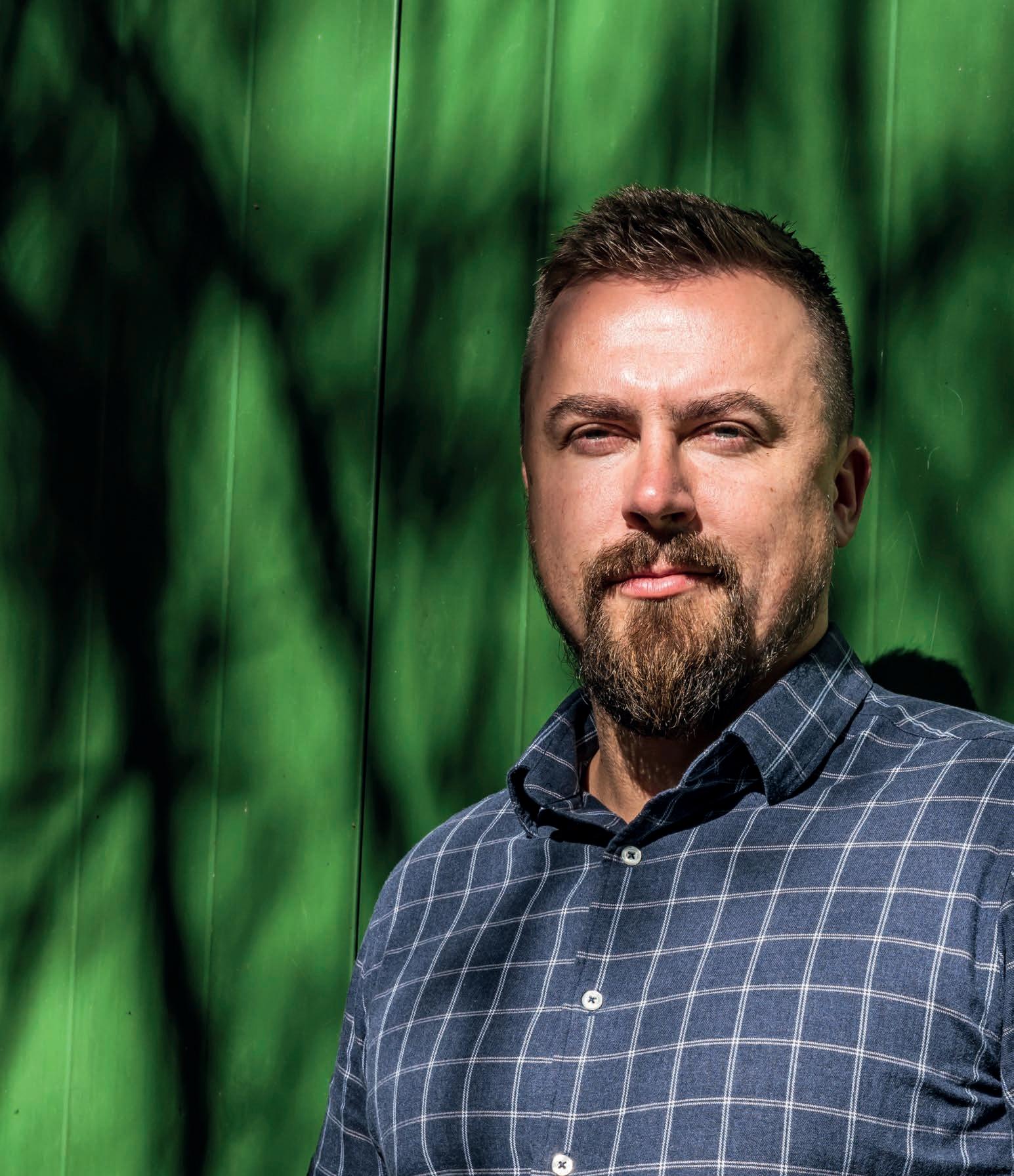
www.gcrmag.com
in automation Technologies set to improve workflow and efficiency
evolving role of a roaster The reality of navigating a business post-pandemic
November/December 2022
thrive Determined TO
POWDER
GRINDERS
The machine can be con gured with up to four grinders, o ering the production and choice of four di erent types of beans.

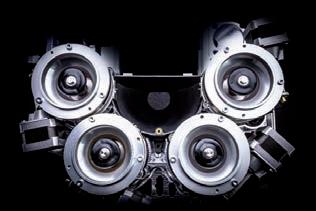
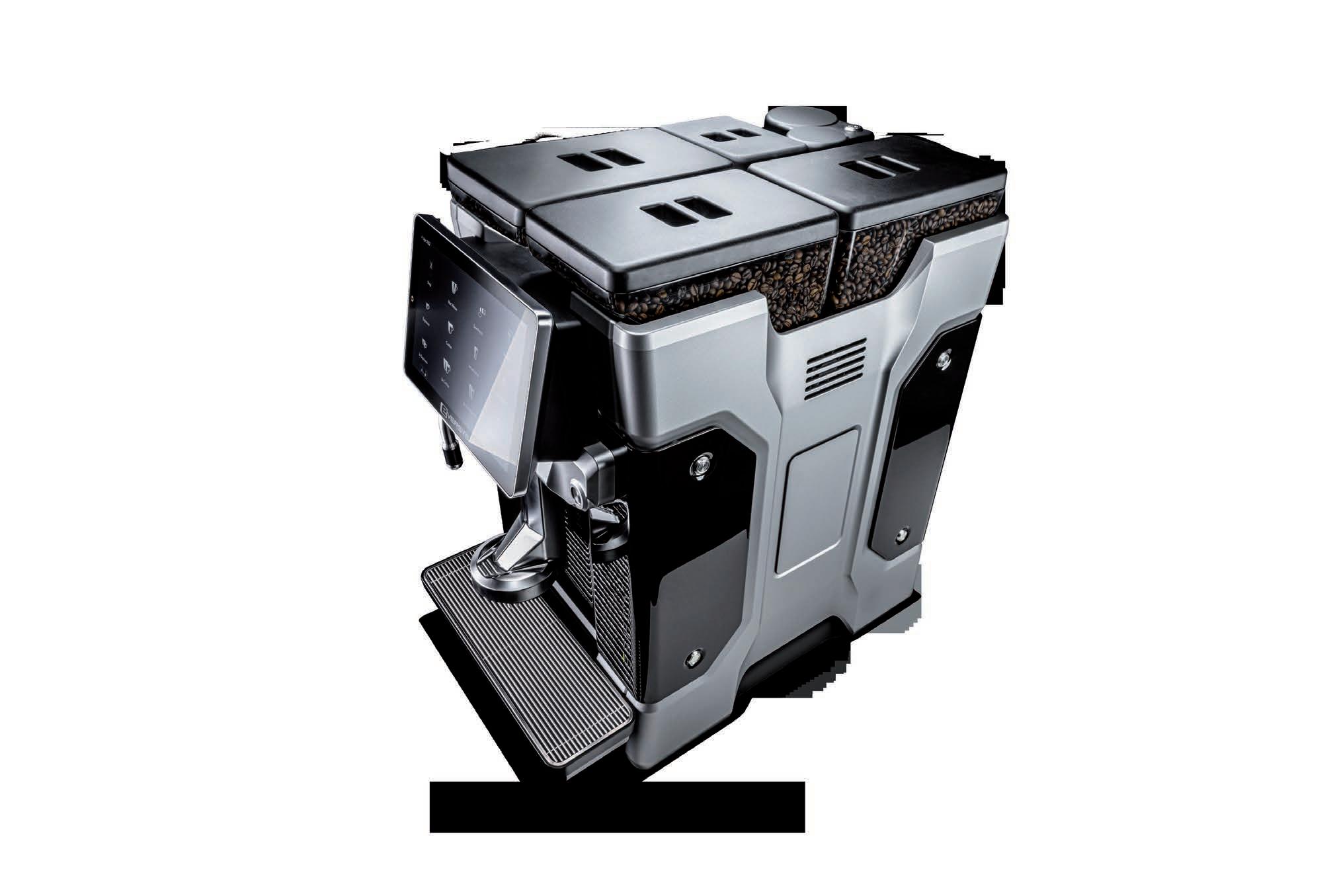

MILK

In the 1-Step system, milk is frothed with air, ensuring optimal avour and texture.
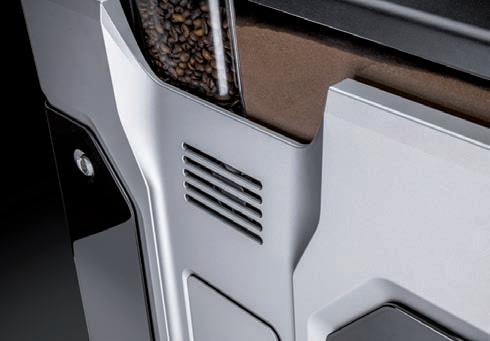 Our engineers have designed an integrated powder unit that can hold up to 2kg.
Our engineers have designed an integrated powder unit that can hold up to 2kg.
10
DETERMINED TO THRIVE
Anton Mianovskyi of Gemini Espresso on why he believes his Ukrainian roasting business can take on the world’s coffee giants 14
INVESTING IN THE NEXT-GEN
The ICO Coffee Development Report explains why the youth need coffee, and coffee needs the youth 18 2030 AND BEYOND Nescafé unveils its sustainability plans for the next decade as it focuses on sustainable initiatives and growth in a transparent way 22 MORE THAN
JUST HOT AIR
Why Vietnamese coffee producer Tran Quang opted for an RFB roaster from Neuhaus Neotec 25
BUILDING MOMENTUM – AND MACHINES TOO
Eversys announces another factory expansion and explains the core drivers of growth 28 A
FITTING FINALE
MICE2022 unites the global coffee industry and maintains its title of largest dedicated coffee tradeshow in the Southern Hemisphere
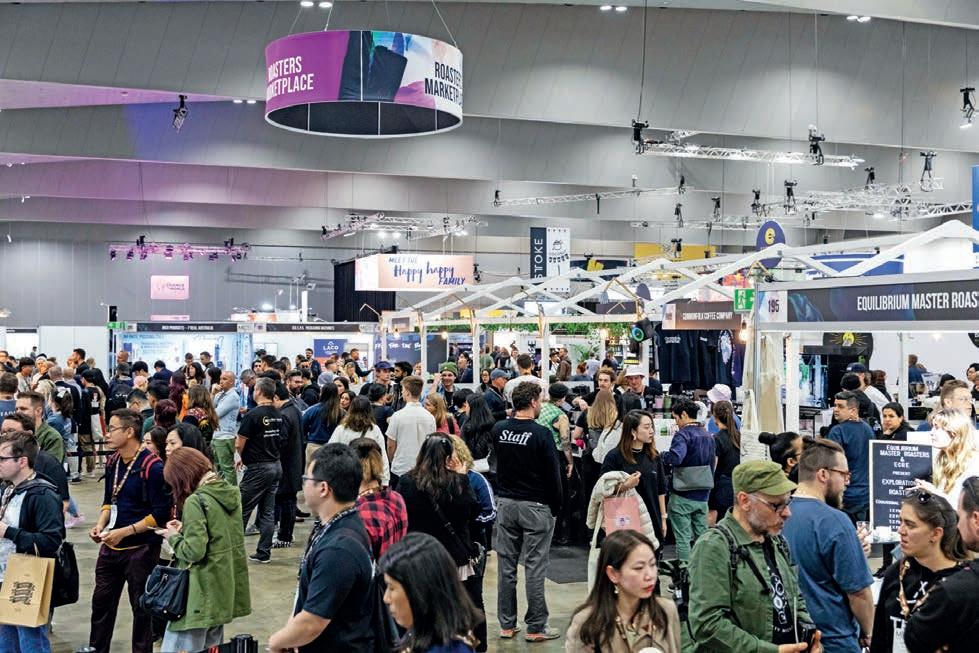
MEET THE CHAMPS
Two new World Coffee Champions are crowned, making history for Taiwan and Australia
THE SUM OF ITS PARTS
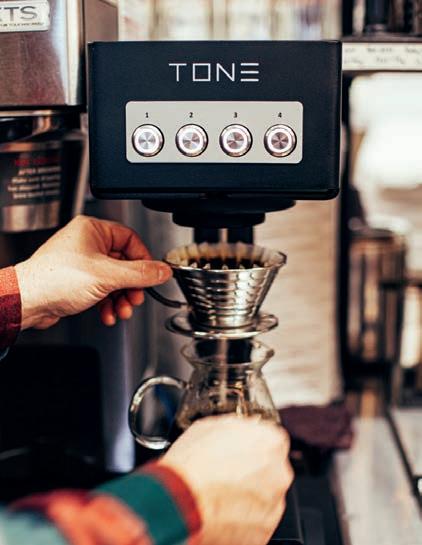
Alcorn Café Engineering helps breathe new life into coffee equipment with bespoke parts and tailored solutions
THE EVOLVING ROLE OF A ROASTER
Vittoria Coffee on the reality of navigating a business post-pandemic
FEATURE
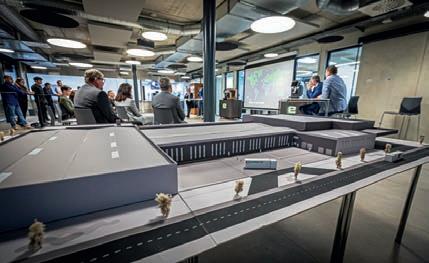
PIONEERING COFFEE TECHNOLOGY
IMA Coffee discusses the launch of its IMA Coffee Lab featuring the latest processing and packaging technologies
BLUE SKYE THINKING
The Schaerer Coffee Skye is a modular and portable unit that fills a market gap for mid-level coffee machines
CAFÉ VARIETY ON-THE-GO
De’Longhi unveils the Eletta Explore at MICE, featuring two dedicated frothing technologies for hot and cold milk
SETTING THE TONE
How Tone has taken tankless water heater technology and elevated it to a whole new level with the Tone Touch 03 46 THE DIGITAL REVOLUTION WMF on becoming a total solutions provider thanks to the digitalisation and transformation of businesses 48 TELEMETRY
TRIUMPH
Vendon explains how its IoT telemetry and payments solutions help track and manage machine fleets remotely
WORD
E VEN BIGGER IMPACT
Swedish roaster Löfbergs Group has joined the European Coffee Federation to help improve sustainability at the farm level and across its European operations
CONTENTS November/December 2022
Anton Mianovskyi of Gemini Espresso on saving his business from the destruction of war, putting Ukrainian coffee on the map, and why he believes his business can take on the world’s coffee giants.
10
“WE ARE LIVING WITH THE SITUATION, BUT IT’S A SITUATION THAT DOESN’T JUST DISAPPEAR WITHIN ONE OR TWO MONTHS, SO WE MUST ADAPT AND TRY TO RETURN TO BUSINESS AND LIFE AS NORMAL.”
COVER STORY
FEATURES
28
44
58
LAST
REGULARS 04 EDITOR’S NOTE 06 NEWS DRIP BY DRIP 52 DIARY DASHBOARD 54 WHAT’S BREWING 56 MARKETPLACE IN
44 25 32
THIS ISSUE
34
36
AUTOMATION
38
40
42
NOVEMBER/DECEMBER 2022 | GCR 3
Anton Mianovskyi Gemini Espresso CEO
THE SHOW MUST GO ON
AS THE YEAR draws to an end, we find ourselves repeating the same mantra: “how fast did this year go? I can’t believe it. It’s nearly Christmas.” The sentiment may be the same, but compared to this time last year, many things have changed. We’re now free to move around without restrictions, mask rules have been removed from most flights and indoor settings, and the word ‘COVID’ is no longer dominating news broadcasts and conversations.
Instead, that job has been replaced with natural disasters, the Queen’s passing, tragedy, and war. For those impacted by the conflict in Ukraine, I can only imagine what an emotionally taxing and stressful year it’s been. Lives have been lost, livelihoods thrown into upheaval, and for companies such as Gemini Espresso, one of the largest coffee roasters in Ukraine, it’s forced the company to reconsider its operational base, growth potential in Ukraine, and the future of the business.
For many company CEOs, COVID tested their resilience and leadership while trying to stay a float, keep employees together, and adapt to the new normal. It was a new normal nobody wanted, and sadly for Ukraine companies, they are faced with the same dilemma.
Gemini Espresso CEO Anton Mianovskyi is surprisingly calm and measured when speaking to Global Coffee Report from Kyiv. He doesn’t flinch at the 24 warning alarms that ring throughout our interview, nor is he emotional. He’s calm, logical, and acutely aware of the challenging situation he finds himself in.
Mianovskyi could have easily chosen to cease operation under the circumstances, but it was never an option. It wasn’t an option for the company he’s watched evolve over the past 16 years. It was never any option for the 180-plus employees he’s responsible for. Rather, Gemini Espresso has stayed strong and operational
amongst the chaos. Mianovskyi moved the production facility away from danger, held a barista competition to uplift the youth of Ukraine when they needed to see fun instead of fighting, and the business has survived thanks to the support of the country’s largest petrol stations. He is the definition of a man who moves on and gets things done.
Another example of moving on was the 2022 Melbourne International Coffee Expo (MICE) which, after three years of postponements, finally opened the doors to more than 15,000 visitors who went to do business and network with new and existing customers in the Asia Pacific.
MICE was one of the biggest industry catch-ups in what can be now considered a post-COVID era. It was wonderful to replace virtual handshakes and mute buttons with face-to-face chats and physical embraces. After all, the global coffee industry is built on relationships, and events like MICE prove that no matter where you are in the world, coffee can bring us together.
In times of unrest, Mianovskyi reminds me of its power. “Just one delicious cup has the power to make you forget all your troubles in that one moment,” he says. “I just hope that one day the world returns to a normal situation, so we can just make coffee, not war.”
CHIEF OPERATING OFFICER
Christine Clancy christine.clancy@primecreative.com.au
EDITOR Sarah Baker sarah.baker@primecreative.com.au
JOURNALIST Hayley Ralph hayley.ralph@primecreative.com.au
ART DIRECTOR/DESIGN Daz Woolley
ART DIRECTOR Blake Storey blake.storey@primecreative.com.au
DESIGN PRODUCTION MANAGER
Michelle Weston michelle.weston@primecreative.com.au DESIGN Tom Anderson
BUSINESS DEVELOPMENT AND MARKETING ACCOUNT MANAGER Courtney Walker courtney.walker@primecreative.com.au
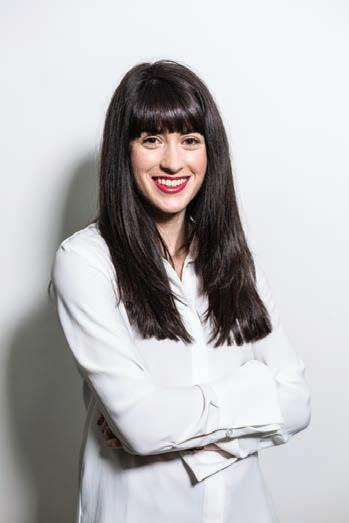
CLIENT SUCCESS Ben Griffiths ben.griffiths@primecreative.com.au
PHOTOGRAPHY
Brendan Hoffman, James Thomas Photography, Melbourne International Coffee Expo CONTRIBUTOR Paul Chai
HEAD OFFICE
Prime Creative Pty Ltd 379 Docklands Drive, Docklands, Victoria 3008 p: +61 3 9690 8766 f: +61 3 9682 0044 enquiries@primecreative.com.au www.gcrmag.com
SUBSCRIPTIONS +61 3 9690 8766 subscriptions@primecreative.com.au
Global Coffee Report Magazine is available by subscription from the publisher. The rights of refusal are reserved by the publisher.
ARTICLES
All articles submitted for publication become the property of the publisher. The Editor reserves the right to adjust any article to conform with the magazine format.

COPYRIGHT
Sarah Baker Editor, Global Coffee Report
Global Coffee Report is owned and published by Prime Creative Media. All material in Global Coffee Report Magazine is copyright and no part may be reproduced or copied in any form or by any means (graphic, electronic or mechanical including information and retrieval systems) without written permission of the publisher. The Editor welcomes contributions but reserves the right to accept or reject any material. While every effort has been made to ensure the accuracy of information Prime Creative Media will not accept responsibility for errors or omissions or for any consequences arising from reliance on information published. The opinions expressed in Global Coffee Report are not necessarily the opinions of, or endorsed by the publisher unless otherwise stated.
4 GCR | NOVEMBER/DECEMBER 2022
EDITOR’S NOTE Global Coffee Report
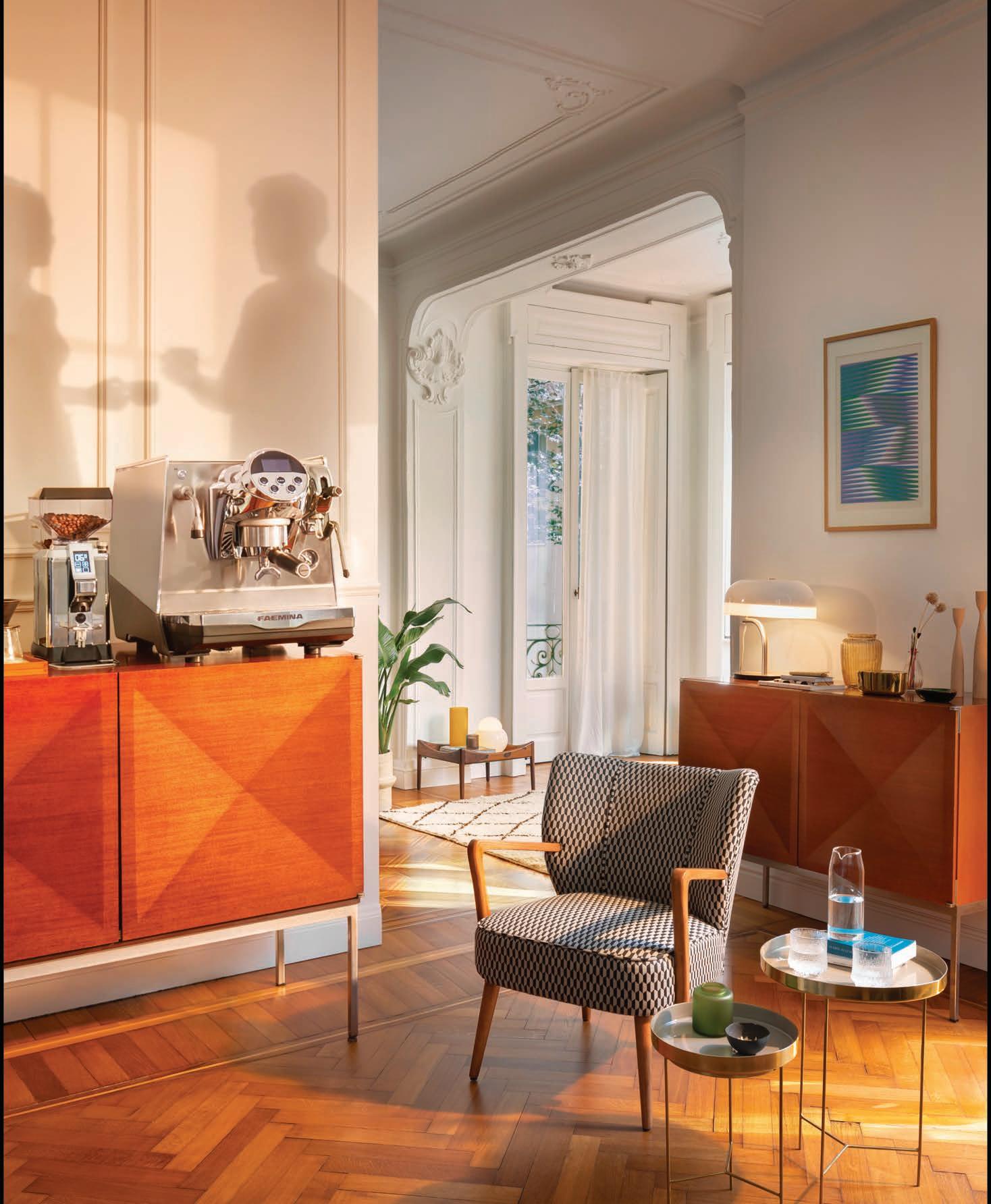
NEWS DRIPBYDRIP
AFRICA
People between ages 15 and 34 years represent about a third of the 4.9 billion people living in coffee producing countries, and at least half of the labour force depending on the country’s demographic structure. One third of the 4.9 billion people who reside in coffee producing countries are between the ages of 15 and 34 years old, providing a significant pool of coffee producers and consumers. Africa is notably the region where there is the largest potential, as 70 per cent of young people in coffee producing countries reside in Africa.

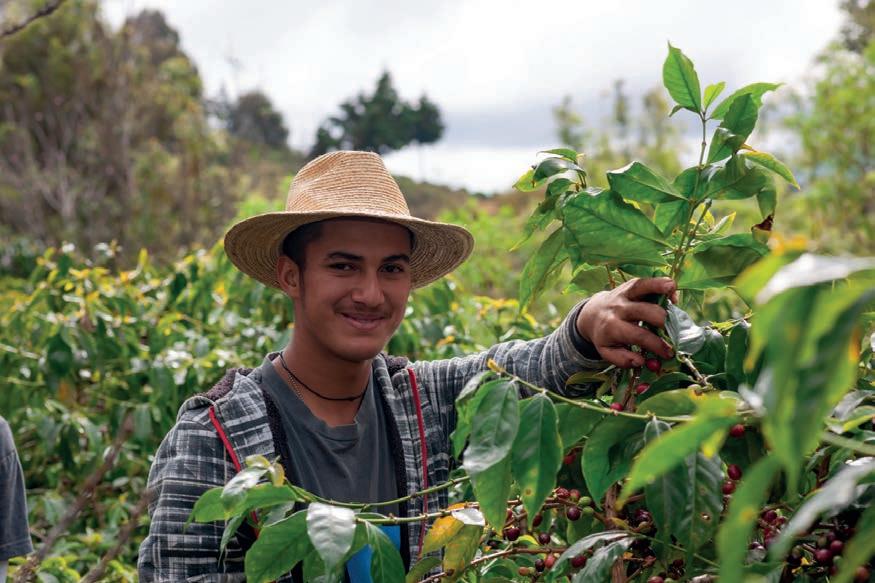
See page 14.
ASIA PACIFIC
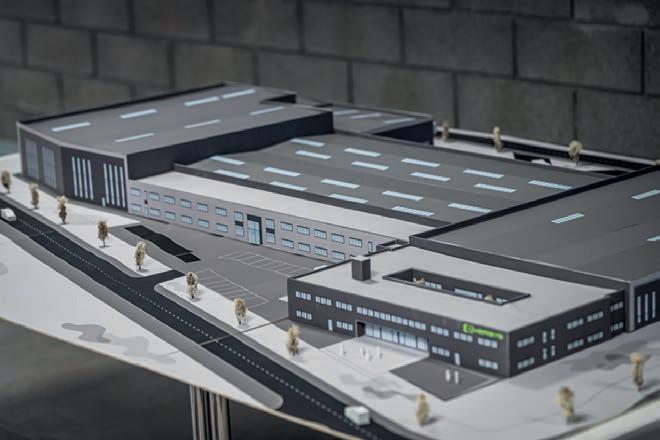
Vietnamese roaster Tran Quang’s roasting facility has become a showcase plant in Ho Chi Minh City, featuring Neuhaus Neotec’s RFB batch roaster, known for its innovative hot-air roasting system. This
technology doesn’t require multiple moving parts in the roasting chamber, just the air to move the beans and to heat up the coffee.

See page 22.
A record 15,056 attendees visited the Melbourne International Coffee Expo from 27 to 30 September 2022 with 15 per cent international attendees from 75 countries. The attendance figure is the highest of any MICE expo since the event’s inception in 2012, with an increase of 25 per cent of visitor numbers since the 2019 event.
See page 28.
Shih Yuan Hsu (Sherry) won the World Brewers Cup in Melbourne at MICE. In her open service, Yuan Hsu used an OREA Brewer V3, and a flat bottom brewing dripper made of polycarbonate, to preserve the core temperature. Melbourne’s own Anthony Douglas of Axil Coffee Roasters won the World Barista Championship. Douglas used an Anaerobic Natural Sidra coffee from Huila, Colombia, produced by Nestor Lasso at his farm, El Diviso.
Douglas is the first Australian to win the title in seven years after Sasa Sestic. See page 32.

Alcorn Café Engineering (ACE) sends bespoke machine parts the world over so that business owners can extend the longevity of their coffee equipment. One of ACE’s most popular products is its shot timer, called the ShureShot with three fully programmable outputs and Kronos touchpad. In addition to retrofitting machines, it repairs espresso machine control boards, offers repair services, and more.
See page 34.
Vittoria Coffee says coffee pricing is the number one issue impacting coffee roasters at the moment, currently at US$0.64 cents at time of print. Vittoria Coffee has used the past two years to expand its offering into the retail sector, and launched into the instant market for the first time in its 75-year history. See page 36.
EUROPE
Before the Ukraine war broke out, Gemini Espresso roasted about 250 tonnes of coffee per month, making it “one of the top five largest coffee
15,056
NEWS In brief
25
The record number of attendees who visited the 2022 Melbourne International Coffee Expo from 75 countries.
14
The next generation can play a crucial role at each step of the coffee global value chain.
6 GCR | NOVEMBER/DECEMBER 2022
Eversys’ new factory will feature production and warehouse space, and significantly more room for stock.



roasters in Ukraine”, according to CEO Anton Mianovskyi. With the future of Ukraine so unpredictable, and an estimated 7.2 million Ukrainians relocated outside of the country according to UN Refugee Agency UNHCR, Mianovskyi has opened a second Gemini Espresso commercial office and sales division in Warsaw, Poland, and is planning on starting roasting production here in 2023.
See page 10.
Every year, Nescafé supports around 100,000 coffee farmers and buys more than 800,000 metric tons of green coffee – that’s more than 13 million bags from more than 20 countries. To ensure the coffee is sourced responsibly, Nestlé has released the Nescafé Plan 2030, a renewed strategy to help make coffee farming more sustainable. Nestlé is investing more than US$1 billion in the project, supported by Nestlé’s regenerative agriculture financing, to follow its commitment to accelerate the transition to a regenerative food system and ambition to achieve zero net greenhouse gas emissions.
See page 18.
Eversys will expand its 7500-squaremetre facility by two-and-a-half times to about 18,000 square metres. The project represents an investment of around US$25 million, with the aim of completion by the end of 2023. Eversys has already created around 60 new jobs in 2022, bringing its current total number of Sierre-based workers to 220.

See page 25.
The IMA Coffee Lab is a unique centre open to all customers and coffee processing companies seeking professional advice and innovative solutions. It houses a fully functioning pilot plant covering all handling, processing, and packaging stages. Located at the IMA Coffee Petroncini facility between Bologna and Ferrara in northern Italy, the Coffee Lab covers 3000 square metres and will be the
starting point for new products and research and development solutions.
See page 38.
Schaerer’s new Coffee Skye automated coffee machine is one of the most portable units the Swiss manufacturer has produced, with slim dimensions and integrated 4.9-litre water tank. This model covers demand for mid-level output between the Schaerer Coffee Club and the powerful Schaerer Coffee Soul 10 and 12.
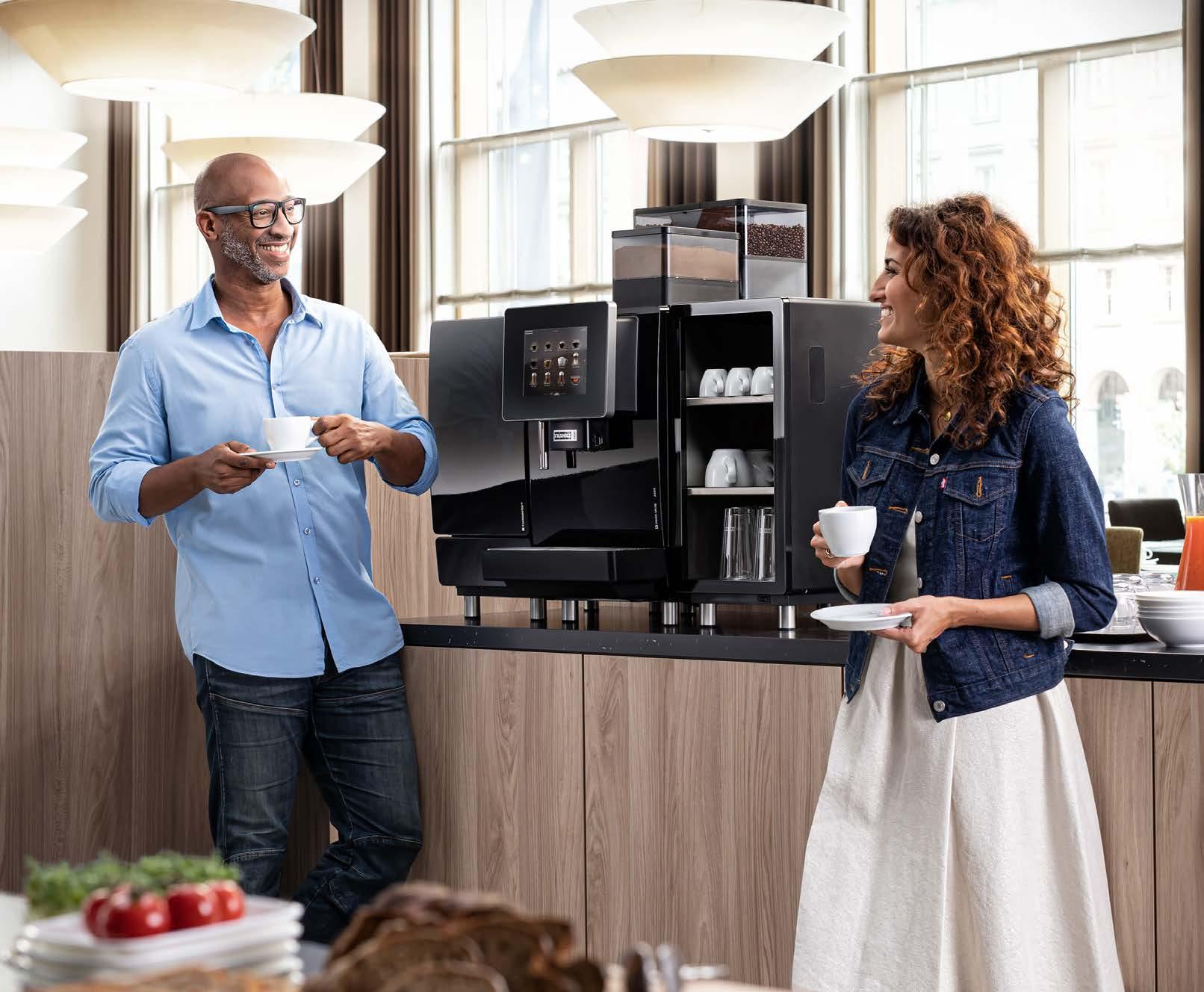
See page 40.
The De’Longhi Eletta Explore coffee machine grinds, doses and brews with accuracy. Once the beans are added, an integrated grinder and brew unit work together to extract the espresso in line with the pre-selected recipe from a choice of 42 customisable recipe options. It features two dedicated carafes, one each for hot and cold milk frothing.
See page 42.
The Touch 03 is Tone’s latest commercial coffee and tea brewing equipment and an automated, urn-free drip brewer. It is one of the world’s first boilerless coffee brewers with temperature consistency of up to 99 per cent. It uses an electronic heating system that takes a few seconds to heat water to 98°C and currently saves 1.3 tonnes of carbon pollution annually.
See page 44.
WMF’s solution concepts make full use of the technological possibilities of digitisation, and enable completely new business models in the international coffee market. WMF has around 130,000 connected machines sending data to its cloud, and offers the WMF CoffeeConnect Portal to customers to provide a real-time overview of machine performance.
See page 46.
Previously operating under Draugiem Group and now a part of the multinational technology company Azkoyen Group, Latvia-based Vendon has grown to be a leader in providing service for vending and coffee machine businesses in more than 80 countries globally. Part of Vendon’s diverse payment options is contactless payments to help increase business sales, and reduce operational costs. It has also developed the loyalty and payment platform QuickPik to increase customer convenience.
See page 48.
Swedish roaster Löfbergs Group has joined the European Coffee Federation to help improve sustainability at the farm level and across its European operations. The Karlstad-based company joins other global roasters already part of the ECF including illycaffè, Jacobs Douwe Egberts, Lavazza, Nestlé, Starbucks EMEA, and Tchibo.
See page 58.
70%
The number of young people in coffee producing countries residing in Africa, according to the International Coffee Organization’s 2021 Coffee Development Report.
46
8 GCR | NOVEMBER/DECEMBER 2022 NEWS In brief
WMF offers digital solutions, such as concepts where the coffee machine communicates over an interface with a robotic arm
when your coffee makes your guests feel at home.
There is nothing better than waking up with a delicious coffee after a good night’s sleep. Our fully automatic coffee machines are easy to use, even as a self-service station for your guests. They deliver consistently high incup quality, so your guests can enjoy the perfect coffee experience to complement their pleasant stay. Because the better the coffee tastes, the more you will make your guests feel at home.
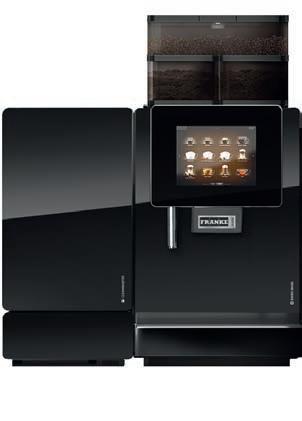

Discover more at coffee.franke.com
Discover more
thrive Determined TO
 By Sarah Baker
By Sarah Baker
ANTON MIANOVSKYI OF GEMINI ESPRESSO ON SAVING HIS BUSINESS FROM THE DESTRUCTION OF WAR, PUTTING UKRAINIAN COFFEE ON THE MAP, AND WHY HE BELIEVES HIS BUSINESS CAN TAKE ON THE WORLD’S COFFEE GIANTS.
STORY
10 GCR | NOVEMBER/DECEMBER 2022
Images: Brendan Hoffman
COVER
Gemini Espresso
hroughout Global Coffee Report’s interview with Gemini Espresso CEO Anton Mianovskyi from his office in Kyiv, a total of 24 alarms ring out, indicating a potential threat of missile attack.
“Every time [the alarm] goes off, you’re nervous. You wait. Maybe a rocket will drop from the sky nearby. It’s normal,” says Mianovskyi, assuring that he’s in a safe place.
Mianovskyi says he’s never experienced such a roller coaster of emotions as he has in these past eight months.
He describes January 2022 as “the best” start to the year. He was on a work trip to Mexico for three weeks before celebrating his wedding anniversary with his wife in Paris. On their return, they took their children skiing in Andorra in the Pyrenees mountains. It was an enjoyable time. Family life was good. Business was good, but in the space of 24 hours, everything changed.
“We returned to Ukraine from Andorra on one of the last flights to Boryspil on 24 February at midnight. We arrived at our flat at 1pm, went to sleep and woke up four-and-a-half hours later because we heard a loud blow. Our apartment is on the 24th floor, and a rocket had passed by our window. The next two to three hours were really hard. For the first time in my life, I didn’t know what I should do,” Mianovskyi tells Global Coffee Report
“I explained to my children what was happening, then took my car and went to the petrol station. I saw the rockets but my mind was not comprehending what I was seeing. I couldn’t accept that this was 21 century Central Europe.”
Mianovskyi decided to move his family to a safer place. He took his wife, kids, sister, dogs, cats, and drove to his parent’s house in a small village 45 kilometres east from Kyiv. Over the next four days they watched Russian troops move into Kyiv’s city district.
Mianovskyi had a responsibility to keep his family safe, but he also had a responsibility to look after 180 employees who rang him asking, “do we go to work? What should we do?”
Mianovskyi found a government program online with relocation strategies to help large companies move their production facility. “We are one of the biggest coffee roasters in Ukraine. Our factory is huge at 2500-square-metres, and we were facing the challenge of moving it all,” Mianovskyi says.
The list of equipment included one 250-kilogram IMF roaster, a Giesen roaster, and five different packaging lines, which can package more than 15 to 20 tonnes per day of ground, whole bean, and Japanese drip line filter coffee.
“When we started preparations for the move, the fighting between the Ukrainian and Russian armies was very close to our factory, no more than two or three kilometres away. The government-arranged service to help us move said: ‘sorry guys, we can’t provide trucks with drivers any more. It’s too dangerous’,” Mianovskyi says.
Instead, he paid a commercial delivery company “huge money”, almost five times the normal rate, to transport 23, 20-tonne trucks to Chernivtsi in the western corner Ukraine, bordering Poland, Hungary, and Romania.
Mianovskyi stresses that the move was not just about moving factory equipment but relocating the families of his employees and accommodating them in apartments, hotels and houses with their possessions and pets. “The company paid for everything,” Mianovskyi says. “The most important thing in our business, is our people. We are one big family.”
Mianovskyi had only viewed the new factory space online. On arrival, he realised the available space was on the second floor of the building. Desperate for a solution, he rang some restaurant partners who suggested a location in Lviv, which was known to hold events, such as Ukraine’s annual coffee festival. With festivals unlikely to be held in the immediate future, the space became Gemini Espresso’s new home. With room to spare, Mianovskyi invited other small coffee roasters to co-habit the space. At one stage, six different roasting companies operated from this one place.
Out of the experience, those six roasters create a coffee brand together titled “roasted in Ukraine”, which Gemini Espresso is looking to push into the international arena.

“WE ARE LIVING WITH THE SITUATION, BUT IT’S A SITUATION THAT DOESN’T JUST DISAPPEAR WITHIN ONE OR TWO MONTHS, SO WE MUST ADAPT AND TRY TO RETURN TO BUSINESS AND LIFE AS NORMAL.”
NOVEMBER/DECEMBER 2022 | GCR 11
Anton Mianovskyi CEO, Gemini Espresso
“In normal life we would compete, but every time when we have coffee festivals, coffee championships, or in hard times such as war, we are friends, and that’s what I love about the Ukrainian coffee community,” Mianovskyi says. “The collaborative brand represents Ukrainians still working together. We want to show the international community just how strong businesses are in Ukraine.”
Pre-war, Gemini Espresso roasted about 250 tonnes of coffee per month, making it “one of the top five largest coffee roasters in Ukraine”, according to Mianovskyi. Given the current situation, however, he says it’s hard to know who among the top five, is on top. Now, Gemini Espresso roasts between 170 to 180 tonnes of coffee per month, but Mianovskyi hopes volume can soon return to the level it was once.
With the future of Ukraine so unpredictable, and an estimated 7.2 million Ukrainians relocated outside of the country according to UN Refugee Agency UNHCR, Mianovskyi has opened a second Gemini Espresso commercial office and sales division in Warsaw, Poland, and is planning on starting roasting production here in 2023.
“Poland isn’t the same market as Ukraine, but it’s people and their drinking habits are very similar so it’s easy to integrate our business, and Poland is a good location to start connections in the European Union,” he says.
Mianovskyi now splits his time between the two cities, spending one month in Poznañ, Poland, where his family now resides, and another month in Kyiv, to give Gemini Espresso the best chance to recover, and thrive.
“We are living with the situation, but it’s a situation that doesn’t just disappear within one or two months, so we must adapt and try to return to business and life as normal,” Mianovskyi says, acknowledging that coffee is part of the daily ritual that can help retain that normalcy.
“One nice, delicious cup of coffee can help us forget about all our problems, just for that moment,” he says.
DESTINED TO LEAD
Mianovskyi started working at Gemini Espresso 16 years ago, at 21 years of age. After working as a barman in nightclubs, he joined Gemini Espresso as Regional Manager for four years. Mianovskyi climbed his way up the ranks, taking on the role of Area Manager, then Chief of Sales and Commercial Director, before being appointed CEO in 2020.
“I may have only known one company all my life, but I treat it like my company,” Mianovskyi says.
The company started with just 15 employees and the understanding that importing Italian coffee products was the best solution to deliver customers with a quality product.

“In our country, Lavazza coffee is very famous in Soviet history. It’s considered the number one brand because it’s the first commercial Italian coffee to be available in the Soviet Union market. The older generation of 50 years and older only know Lavazza coffee,” he says.
After the Ukrainian Revolution in 2014 under the leadership of President Viktor Yanukovych, Mianovskyi says “something changed in Ukrainian people”. They started buying Ukrainian products, such as Ukrainian alcohol, and accepting that buying premium, Ukrainian-made products supported the local economy.
“They started realising that compared to the quality of European products, the quality of local products was no less, if not the same. And in the case of Ukrainian-roasted coffee, it’s even better because it is fresh,” he says. “People saw a difference in taste, and they preferred it.”
As such, since 2014, Mianovskyi says Ukrainian coffee businesses have been fast growing. Participation in Specialty Coffee Association education has increased, as has the number of young professionals competing in the national coffee championships, of which Gemini supplies equipment to support the next generation of talent.
“There’s a greater understanding between specialty and commercial grade coffee in the Ukrainian people. If you presented a bad cup of coffee to someone on the street, they wouldn’t drink it,” he says.
This movement has excelled over the past five years, with many more young specialty
12 GCR | NOVEMBER/DECEMBER 2022 COVER STORY Gemini Espresso
coffee roasters emerging. To cater to the country’s varying levels of coffee preferences, Gemini Espresso produces 70 different products across three different market segments: commercial-grade, mid-level, and specialty.

Gemini is company’s largest and most popular brand, which Mianovskyi describes as “a powerful, strong, medium-roasted commercial brand”. Gemini Espresso’s acquisition of Italian brand Ducale Caffe offers a commercial-grade offering, and its newest specialty coffee brand YoCo – short for ‘Your Coffee’ – launched just four months before the war began. Gemini Espresso sources its beans directly from origin such as Africa and Central America, and from Swiss trading company ECOM.
“The key to buying specialty coffee, is to buy something special, something expensive, and something that tastes different. We have explored new lots and coffees with fermentation techniques that we’re bringing back to Ukraine, coffee that no-one else in the country has,” Mianovskyi says.
He says this specialty arm of the business will never be about large volumes, but rather is a side of the business that’s “good for the soul”, with the hope to one day buy a washing station and visit more origin countries.
“If we grow at the level I hope we can, I might even buy a small farm, and build a small house to live in with my wife, kids, and stare at the mountains,” he says with excitement. “That would be really nice.”
Over the past 15 years, Gemini Espresso has also grown its network of coffee equipment, now considered the largest distributor of coffee machines in Ukraine, according to Mianovskyi. It sells equipment from 12 international brands and despite a high volume of businesses closing in Ukraine, Gemini Espresso is still selling equipment to new coffee shop customers in Kyiv.
Mianovskyi says coffee shops were the first things to return post-COVID lockdown, and drive-thru and coffee-to-go outlets remain the most popular method of consumption, largely because they stayed open during the pandemic and current conflict.
Thankfully for Gemini Espresso, it’s largest clientele has always been the country’s biggest petrol stations and coffee chains, accounting for the majority of Gemini’s 18,795 clients and partners in Ukraine and abroad. Mianovskyi says one petrol station brand in particular operates around 460 venues, and another has about 260 petrol stations, each with coffee options available.
“These are our number one clientele. It’s a really good market for us. In Ukraine, petrol stations chains are the safest segments because they’re always open. One popular petrol station brews about 100 kilograms of coffee per month. It’s a huge volume,” Mianovskyi says.
For its retail offering, Gemini Espresso distributes its product through B2B wholesaler Metro Cash & Carry, and national supermarket chains.
The rising costs of green beans, and dropping Ukrainian currency means price rises have to be reflected in Gemini Espresso’s product, however for now, it’s experiencing “good commercial results, just not huge profit”.
Mianovskyi has a clear vision of where wants to take the company. His goal is to hold the number one position in the Ukrainian market. Then, it must grow its presence in Europe, and abroad, to which it already has export contracts in Saudi Arabia, Oman, and Kazakhstan.
“I don’t think a lot of European companies take the quality of Ukrainian coffee companies seriously, but I want to show that quality Ukrainian businesses can be one of the strongest players in the coffee market, and we can compete with the likes of large European brands and coffee companies, such as Lavazza, Segafredo or JDE Peets,” he says.
“We want to show the international coffee community that Ukrainian coffee businesses are still operating and are heading in a good direction.”
Mianovskyi is confident that distribution will increase when the war ends, and that his business will have a prosperous future. He acknowledges that his life, and the direction of the business has forever changed, but is determined to move forward.
“I hope that one day the world returns to a normal situation, so we can just make coffee, not war,” he says. GCR
NOVEMBER/DECEMBER 2022 | GCR 13
Stirring sustainable success
NESTLÉ HAS UNVEILED THE NESCAFÉ PLAN 2030 TO HELP DRIVE REGENERATIVE AGRICULTURE, REDUCE GREENHOUSE GAS EMISSIONS, AND IMPROVE FARMER LIVELIHOODS.
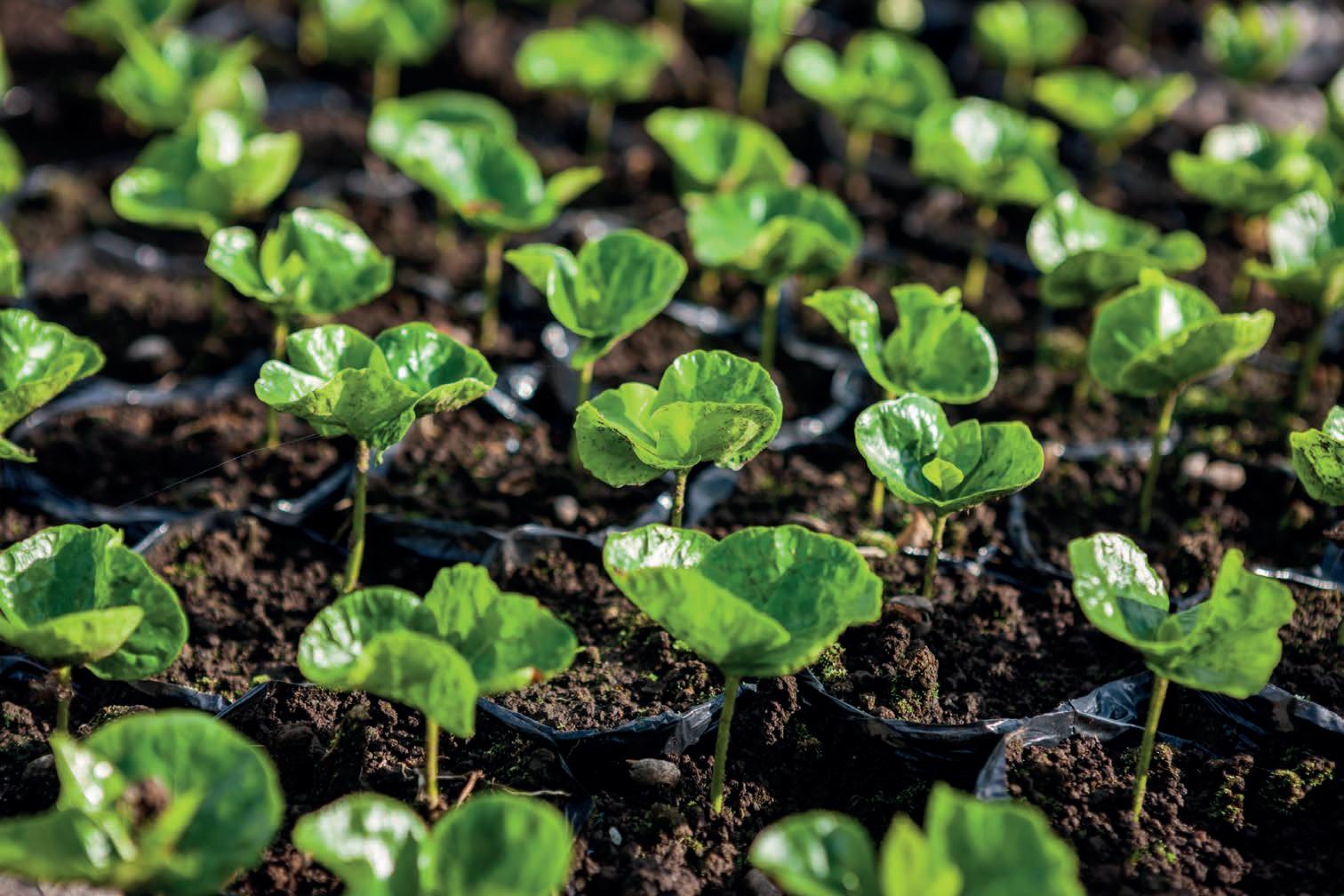
very year, Nescafé supports around 100,000 coffee farmers and buys more than 800,000 metric tons of green coffee – that’s more than 13 million bags from more than 20 countries.
This carefully measured feat would not be possible without the Nescafé Plan, a global sustainability initiative launched in 2010 to expand responsible sourcing.
Now, Nestlé’s Head of Green Coffee Development Marcelo Burity tells Global Coffee Report that Nestlé has released the Nescafé Plan 2030, a renewed strategy to help make coffee farming more sustainable.
“We are building on a 10-year track record of the existing Nescafé Plan and accelerating our efforts to help make coffee farming of Nescafé more sustainable,” Burity says.
“The Nescafé Plan 2030 will help farmers transition to regenerative agriculture to simultaneously help improve their income and mitigate their environmental impact. This will help farmers become more resilient and much better prepared to tackle risks like climate change.”

Nestlé is investing more than US$1 billion by 2030 in the Nescafé Plan 2030. It is supported by Nestlé’s regenerative agriculture financing, following its commitment to accelerate the transition to a regenerative food system and ambition to achieve zero net greenhouse gas emissions.
In a company webinar held in October, David Rennie, Head of Nestlé Coffee Brands, told the audience that climate-change is shifting temperatures and weather patterns, which is impacting farming around the globe, and coffee is no exception.
“Climate change is putting coffee-growing areas under pressure due to rising temperatures, severe droughts, and flooding. Building on the existing Nescafé Plan, we’re fast-tracking our
work to help tackle climate change and address social and economic challenges in the Nescafé value chains,” says Rennie.
According to the Inter-American Development Bank, rising temperatures will reduce the area suitable for growing coffee by up to 50 per cent by 2050. At the same time, around 125 million people depend on coffee for their livelihoods, according to the Fairtrade Foundation. Data from Technoserve estimates that 80 per cent of coffee-farming families live at or below the poverty line. Action is needed to ensure the long-term sustainability of coffee.
“We need to act now to ensure the longterm sustainability of coffee. And Nescafé, a brand that touches the lives of hundreds of millions of people, is ideally placed for that,” Rennie says.
Burity adds that regenerative agriculture, a conservation and rehabilitation approach to farming, is one method that holds the key
18 GCR | NOVEMBER/DECEMBER 2022 INDUSTRY PROFILE Nestlé
Nescafé will provide farmers with regenerative agriculture practices such as high-yielding coffee plantlets.
to such long-term sustainability. Its approach to farming aims to improve soil health and fertility, as well as protect water resources and biodiversity. Healthier soils are more resilient to the impacts of climate change and can increase yields, helping to improve farmers’ livelihoods. To make the transition, Nescafé will provide farmers with training, technical assistance, and high-yielding coffee plantlets.
“Some of the regenerative practices that will be applied specifically to coffee include planting cover crops to help protect the soil. It also helps add biomass to the soil, which can increase soil organic matter and thus soil carbon sequestration,” Burity says.

“Nescafé will stimulate farmers to incorporate organic fertilisers to contribute to soil fertility, which is essential for good soil health, and increase the use of agroforestry and intercropping to preserve biodiversity. The company will also facilitate pruning of existing coffee trees or replacing them with disease and climate-change resistant varieties, which will help rejuvenate coffee plots and increase yields for farmers.”

Nescafé will work with coffee farmers

 Nescafé will facilitate pruning of existing coffee trees, which will help rejuvenate coffee plots.
Nescafé will facilitate pruning of existing coffee trees, which will help rejuvenate coffee plots.
to test, learn, and assess the effectiveness of multiple regenerative agriculture practices. To do this, Nestlé has developed a framework which includes a definition of regenerative agriculture, regenerative agriculture practices and key performance indicators, based on a holistic approach.
“Regenerative agriculture is an enabler to deliver lower emissions and higher farmer incomes,” Burity says.
The roasting giant will focus on seven key origins from where the company sources 90 per cent of its coffee: Brazil, Vietnam, Mexico, Colombia, Côte d’Ivoire, Indonesia and Honduras.
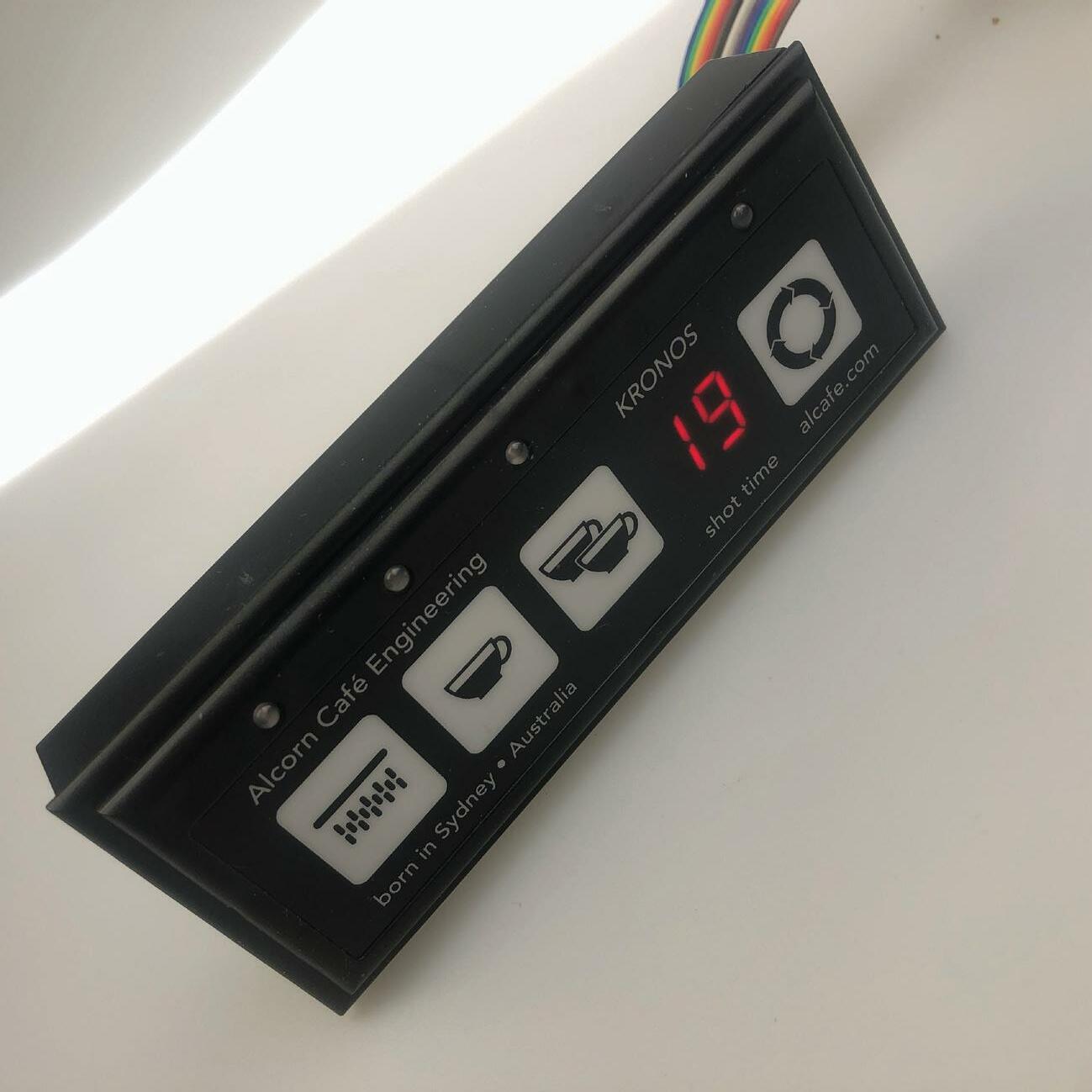
Philipp Navratil, Head of Nestlé’s Coffee Strategic Business Unit, told the webinar audience that as one of the world’s leading coffee brands, Nescafé aims to have a real impact on coffee farming globally.
“We want coffee farmers to thrive as much as we want coffee to have a positive impact on the environment. Our actions can help drive change throughout the coffee industry,” says Navratil.
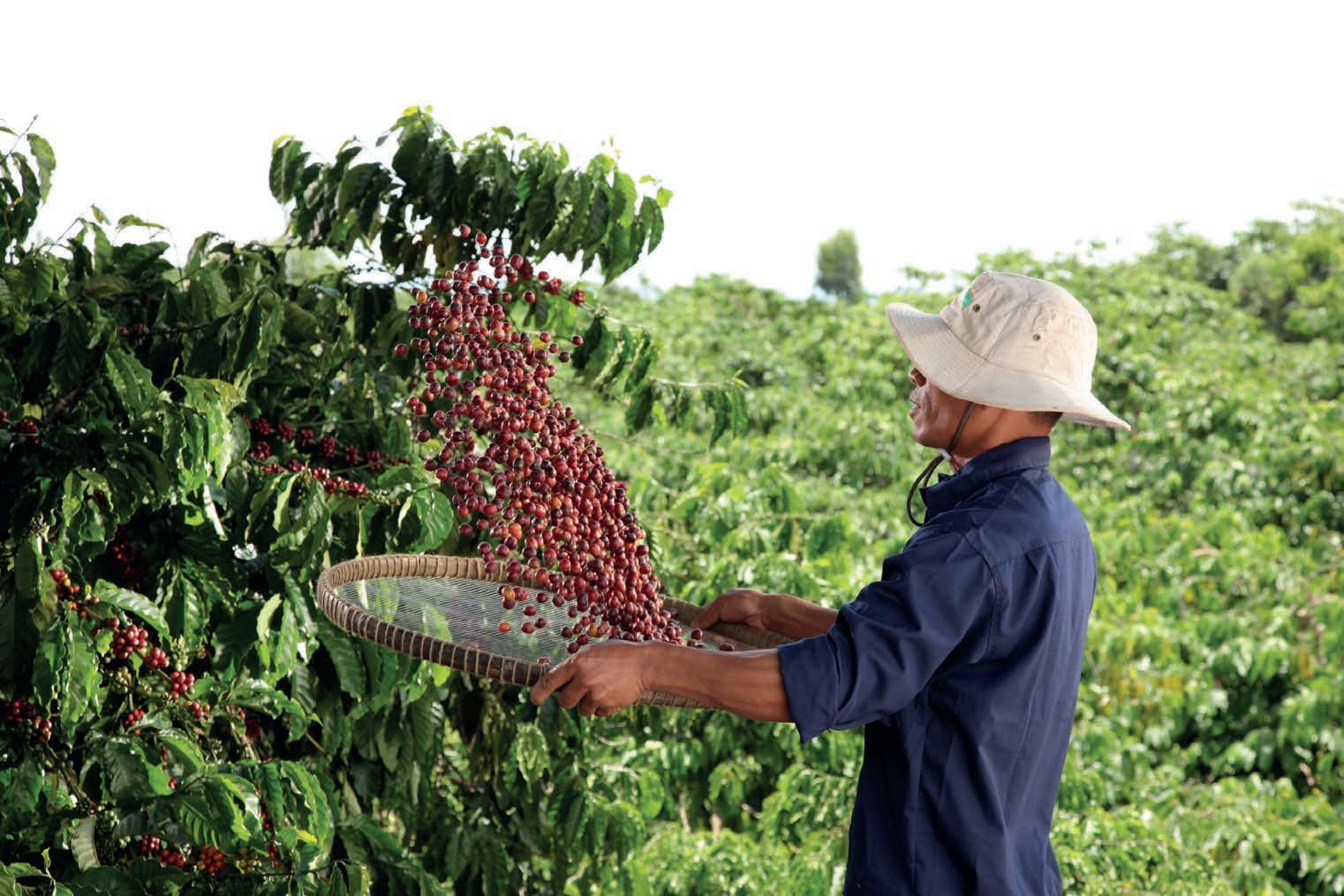
“Nescafé has a long history of supporting thousands of farmers across the globe, and I’ve had the privilege to visit many coffee farmers. I’ve always felt humbled by their dedication and hard work, but also their social and economic challenges. But with being the world’s largest coffee brand also comes the responsibility to act and to lead the sustainable developments for the benefits of coffee farmers and the coffee industry at large.”
Navratil says regenerative agriculture is one such sustainable development that contributes to drawing down carbon dioxide from the atmosphere and reducing greenhouse gas emissions. It’s for this reason it forms a key part of Nescafé’s Zero Net roadmap, a commitment to halve greenhouse gas emissions by 2030 and reach zero net greenhouse gas emissions by 2050. It will work with farmers, suppliers, and partners to help protect agricultural lands, enhance biodiversity and help prevent deforestation. The brand also intends to help farmers plant more than 20 million
trees at or near their coffee farms.
The Nescafé Plan 10-year achievements include the implementation of impact assessment of field programs in partnership with the Rainforest Alliance across 14 countries, and achieving a 46 per cent reduction in greenhouse gas emissions in soluble coffee factories per tonne of product. Nescafé has also reached 53 per cent less water withdrawal in soluble coffee factories per tonne of product.
The company is committed to supporting farmers who take on the risks and costs associated with the move to regenerative agriculture. It will provide programs that aim to accelerate the transition to regenerative and resilient agriculture, starting with pilots in Mexico, Côte d’Ivoire and Indonesia, where Nescafé will trial a financial support scheme for smallholders and learn the best approach for each country.
“These could include measures such as conditional cash incentives for adopting regenerative agriculture practices, income
20 GCR | NOVEMBER/DECEMBER 2022 INDUSTRY PROFILE Nestlé
The Nescafé Plan 2030 aims to help make coffee farming more sustainable.
protection using weather insurance and greater access to credit lines for farmers,” says Burity.

The brand aims to achieve 100 per cent responsibly sourced coffee by 2025, 20 per cent of coffee sourced from regenerative agricultural methods by 2025, and 50 per cent by 2030.

Tiago Camiletti, a coffee farmer from Brazil, told the webinar audience that what the Nescafé Plan has achieved thus far, has proved to him and other coffee producers that it’s possible to produce more with less.
“It’s possible to have increased productivity while taking care of the health of the soil as well as nature,” Camiletti says.
“What I hope, for myself and the future of coffee production is that I can remain, in a sustainable way, in coffee farming, because as I always say, I am passionate about growing coffee. The income is a result of my work, but ultimately, I hope my children can continue
progress and assess the results of its field programs with coffee farmers through its Monitoring and Evaluation partnership with Rainforest Alliance.
“This will allow us to assess the evolution of adoption of regenerative agriculture practices and understand farmer household income. We are also working with partners such as the Sustainable Food Lab for farmer income measurement, PUR Project for agroforestry and the International Centre for Tropical Agriculture (CIAT) for regenerative agriculture, ensuring we have subject matter expertise embedded in the Nescafé Plan 2030,” says Burity.
He says that the field programs have positively impacted hundreds of thousands of farmers across many countries, and impact assessments carried out by Rainforest Alliance have shown optimistic results.
“In Mexico, productivity of farms has increased by 50 per cent since 2014, driven partly by renovating coffee farms with improved varieties. In Côte d’Ivoire, productivity of farms has increased by 10 per cent since 2015 partly by adopting pruning practices, and in Vietnam, farmers have lowered their cost of production by 15 per cent since 2014, using 70 per cent less water with more efficient irrigation techniques,” says Burity.
Despite the achievements of the Nescafe Plan 2030, Nestlé’s Navratil says sustainability is a journey that can’t be undertaken alone.
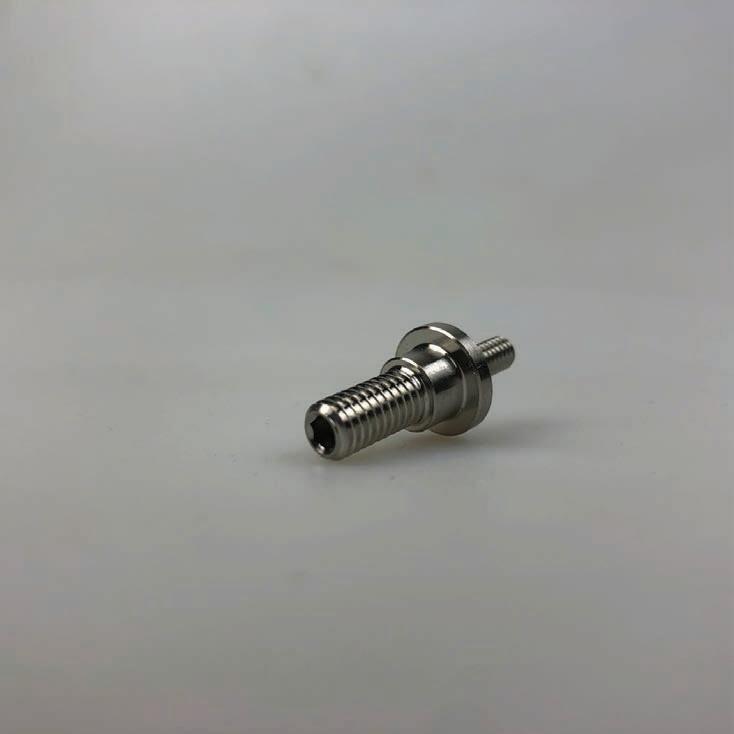
“To this end, we invite all stakeholders to continue supporting us in the Nescafé Plan 2030 as we accelerate ambitions and aim to create a long-lasting impact on the coffee value chain,” says Navratil.
“I truly believe if all key players including coffee farmers, organisations, governments, coffee traders, roasters and consumers work together, we can achieve our common vision of a sustainable
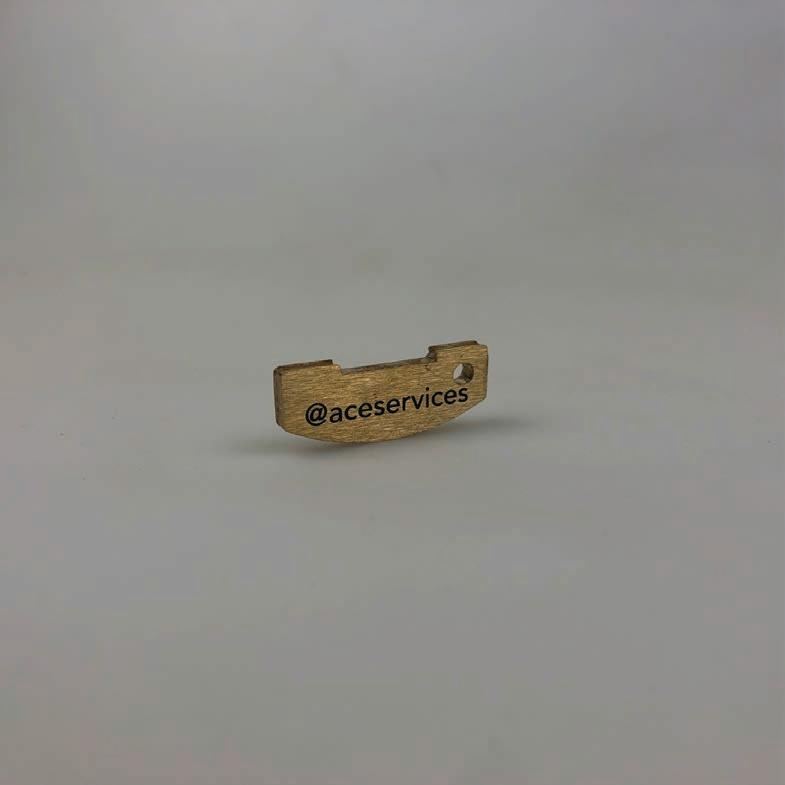
improved stainless steel KB/90 steam tap lock pin improved longevity stainless steel extension screw • replaces LM A.1.002
the original alternate sheer plate for EK43 was an ACE first and was made available in Aircraft Aluminium, Brass or Copper
Cafe Engineering Manufacturers of retrofit and custom engineered parts for the global espresso industry
ACE Kronos - designed and engineered in Australia for Australian conditions
Alcorn
More than just hot air
WHEN VIETNAMESE COFFEE PRODUCER TRAN QUANG WAS LOOKING TO BUILD A STATE-OF-THEART COFFEE PLANT, IT OPTED FOR AN RFB ROASTER FROM NEUHAUS NEOTEC.
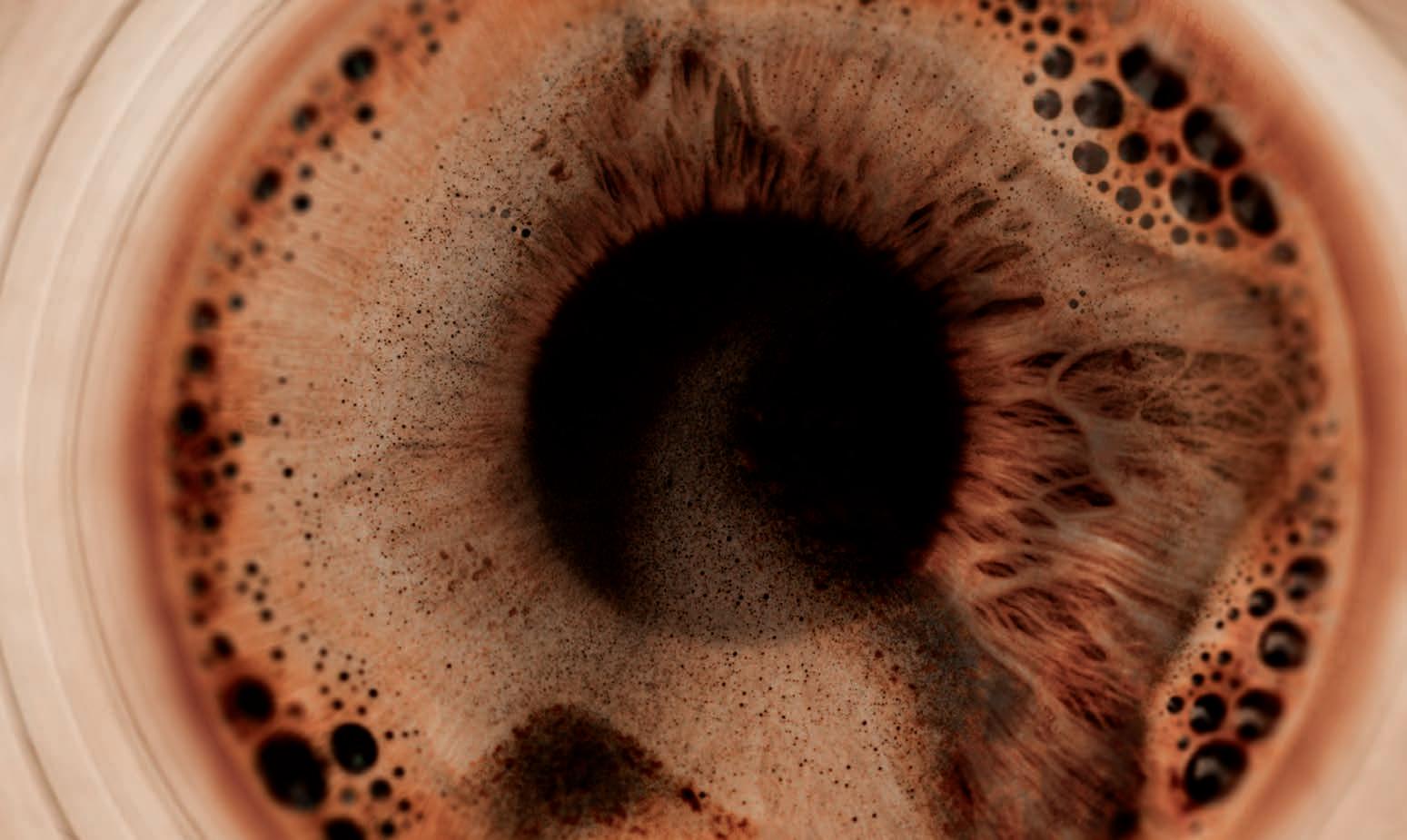
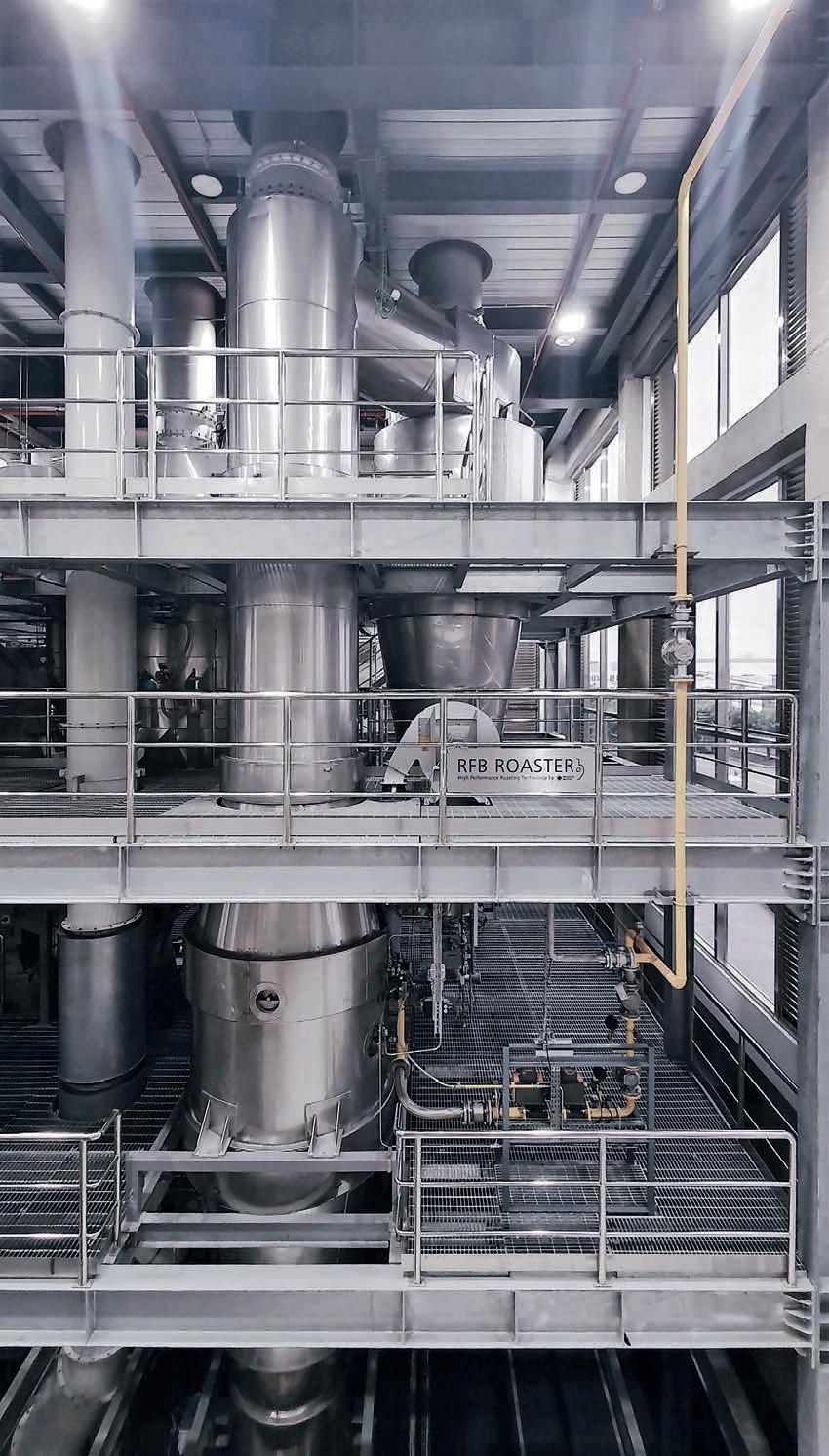
he Kahl Group in Germany is unique in that it can completely fit-out a new operation with all the coffee infrastructure from roasting to extraction. Vietnamese roaster Tran Quang recognised this one-stop shop advantage and engaged process engineering company Devex for the coffee extraction for three-in-one sachet products, and considered sister company Neuhaus Neotec to install its roaster and grinding section.
Lars Henkel, Head of Marketing for N euhaus Neotec, says the family-run Vietnamese company attached great importance to installing state-of-the-art technology that sets the highest standards in energy efficiency as well as product yield.
“This demand for the highest quality equipment and solutions runs like a thread through the entire concept of the factory,” Henkel says. “The owners also apply the same high standards to their social responsibility towards their employees making this plant a leader in the region.”
v
TECH PROFILE Neuhaus Neotec
22 GCR | NOVEMBER/DECEMBER 2022
The Neuhaus Neotec RFB roaster offers simple recipe control and production flexibility through fast implementation of the roasting parameters.
The facility has become a showcase plant in South-East Asia, including a viewing platform that allows visitors to see the coffee roasting plant in operation.
The RFB batch roaster is well known for its innovative hot-air roasting system. The coffee industry often talks about two types of roasters: drum and hot-air, but the competitive advantage with the RFB is that it is not a paddle roaster.
“All other roasters are paddle roasters and that means they need a paddle or an agitator to move the coffee beans around, and then they use contact heat to the roasting chamber or hot air to roast the beans. The RFB is the only technology where you don’t need all these moving parts in the roasting chamber, just the air to move the beans and to heat up the coffee,” Henkel says.
The absence of paddle is an advantage in a number of ways. Paddles produce abrasion on the beans and can detach fine particles that stick to the roasting chamber and are wasted, there i s also the matter of wear and tear, and parts.
The RFB moves the coffee out to the cooling chamber in the shortest time using gravity, which allows the shift of the quenching process from the roasting chamber to the cooling chamber. As a result, the material stress is significantly reduced and the roaster is able to start with the next roasting batch without time and energy consuming reheating times.
“The complete design of the RFB follows the intention to minimise material stress and to warranty for a maximum lifetime of the equipment,” Henkel says.
He points out that while the initial cost of an RFB can be slightly higher than traditional drum roasters, Tran Quang could see that it would make savings in the long term.
“The total costs are much lower because you have less energy consumption, less spare parts, less maintenance and less roasting loss, so these are the driving arguments for the instant roasters,” Henkel says.
Since the commissioning of the factory in Ho Chi Minh City, many domestic and foreign
have already enthusiastically inspected the plant, which the two sister companies are proud to call a showcase plant for the entire Asian region. GCR
For more information, visit www.neuhaus-neotec.com/de/
FOCUS ON THE DETAILS
Our unique RFB roasters are equipped with the newest and most innovative hot air roasting technologies. With our flexible roasting profiles we give our clients the possibility to optimize every detail of the roasting process for a perfect result.

WWW.NEUHAUS-NEOTEC.COM
“DEMAND FOR THE HIGHEST QUALITY EQUIPMENT AND SOLUTIONS RUNS LIKE A THREAD THROUGH THE ENTIRE CONCEPT.”
Lars Henkel Head of Marketing – Neuhaus Neotec
Global Coffee Report is the leading business magazine covering the international coffee industry. In-depth features explore on-the-ground developments at origin, coffee pricing issues, technology updates, research breakthroughs and much more.



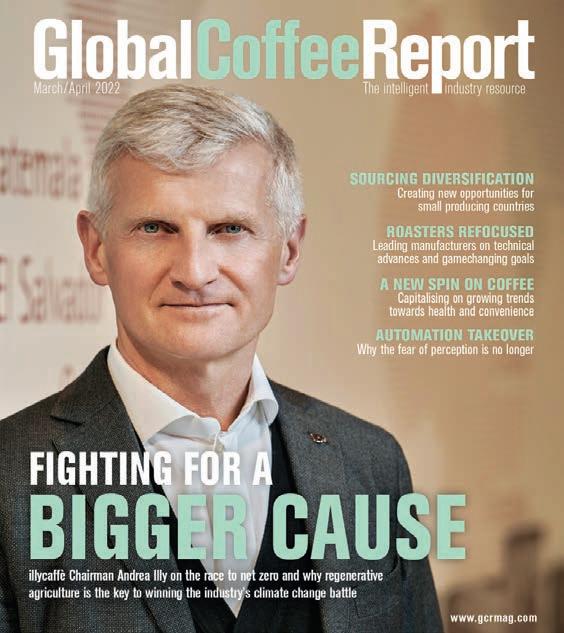

UNLIMITED ONLINE CONTENT
www.gcrmag.com/subscribe YOUR COFFEE NEWS – WORLD WIDE
Building momentum – and machines too
EVERSYS ANNOUNCES ANOTHER FACTORY EXPANSION AND EXPLAINS THE CORE DRIVERS OF ITS GROWTH, INCLUDING THE SUCCESS OF ITS PRODUCT LINE, THE LAUNCH OF LÉGACY, AND A NEW STRATEGIC PARTNERSHIP.
It was just three years ago when Eversys opened its new production facility in Sierre, Switzerland. It was an achievement long in the making since the machine manufacturer’s inception in 2009 in Switzerland’s canton of Valais. It was recognition of Eversys’ market growth and ambition for future growth. What it never expected, however, was to outgrow this facility in such a short timeframe.

“When we were designing our first factory, it was important for us to have the possibility for an extension, a reserve, an option for additional land in the neighbourhood right next to us – that’s why we chose the place in Sierre where we are now. But we did not imagine our growth would happen so quickly,” says Eversys CEO, Martin Strehl.
Now that it has, Eversys will be expanding its production and office space, and organising the company’s logistics in a more efficient way.
“This will ease our production flow significantly. It’s more than what we already have: more production space, more warehouse space, and significantly more space for stock,” Strehl says.
Eversys’ existing 7500-square-metre facility will be extended by two-and-a-half times, to about 18,000 square metres. The land required for the expansion was made available thanks to the municipality of Sierre.
Strehl says the company received “very good support” from local political authorities in order to move production forward quickly.
The project represents an investment of around US$25 million, with the aim of completion by the end of 2023.
“Eversys has promising prospects. We feel comfortable in Sierre and well supported by

NOVEMBER/DECEMBER 2022 | GCR 25 INDUSTRY PROFILE Eversys
Eversys CEO Martin Strehl says the company is likely to break the US$100 million turnover mark for the first time.
The facility has become a showcase plant in South-East Asia, including a viewing platform that allows visitors to see the coffee roasting plant in operation.
The RFB batch roaster is well known for its innovative hot-air roasting system. The coffee industry often talks about two types of roasters: drum and hot-air, but the competitive advantage with the RFB is that it is not a paddle roaster.
“All other roasters are paddle roasters and that means they need a paddle or an agitator to move the coffee beans around, and then they use contact heat to the roasting chamber or hot air to roast the beans. The RFB is the only technology where you don’t need all these moving parts in the roasting chamber, just the air to move the beans and to heat up the coffee,” Henkel says.
The absence of paddle is an advantage in a number of ways. Paddles produce abrasion on the beans and can detach fine particles that stick to the roasting chamber and are wasted, there i s also the matter of wear and tear, and parts.
The RFB moves the coffee out to the cooling chamber in the shortest time using gravity, which allows the shift of the quenching process from the roasting chamber to the cooling chamber. As a result, the material stress is significantly reduced and the roaster is able to start with the next roasting batch without time and energy consuming reheating times.
“The complete design of the RFB follows the intention to minimise material stress and to warranty for a maximum lifetime of the equipment,” Henkel says.
He points out that while the initial cost of an RFB can be slightly higher than traditional drum roasters, Tran Quang could see that it would make savings in the long term.
“The total costs are much lower because you have less energy consumption, less spare parts, less maintenance and less roasting loss, so these are the driving arguments for the instant roasters,” Henkel says.
Since the commissioning of the factory in Ho Chi Minh City, many domestic and foreign
have already enthusiastically inspected the plant, which the two sister companies are proud to call a showcase plant for the entire Asian region. GCR
For more information, visit www.neuhaus-neotec.com/de/
FOCUS ON THE DETAILS
Our unique RFB roasters are equipped with the newest and most innovative hot air roasting technologies. With our flexible roasting profiles we give our clients the possibility to optimize every detail of the roasting process for a perfect result.

WWW.NEUHAUS-NEOTEC.COM
“DEMAND FOR THE HIGHEST QUALITY EQUIPMENT AND SOLUTIONS RUNS LIKE A THREAD THROUGH THE ENTIRE CONCEPT.”
Lars Henkel Head of Marketing – Neuhaus Neotec
Perfetto, from hot to iced coffee.

NEW LatteCrema Cool Technology for Iced Coffee at home. De’Longhi’s new, exclusive and unique Cold Milk Foam Technology, perfectly mixes steam, milk and air to create creamy textured milk at a refreshingly cool temperature. Designed to balance sweetness and enable you to create iced coffees at home, with ease.
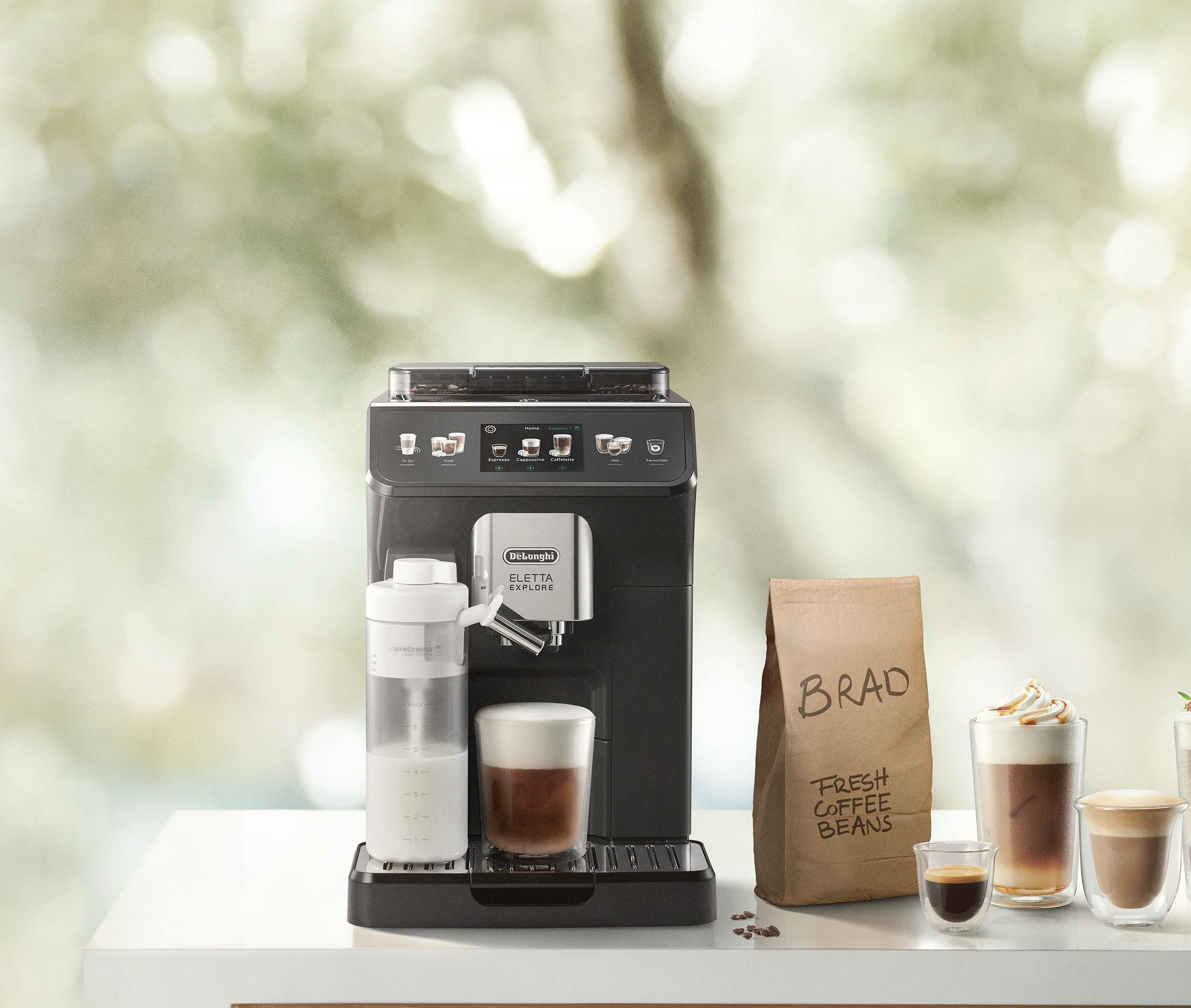
delonghi.com
LatteCrema Cool Coldmilkfoam technology
World united
RETURNED
he return of the 2022 Melbourne International Coffee Expo (MICE) was the biggest coffee family union the industry has seen since the height of the global pandemic.
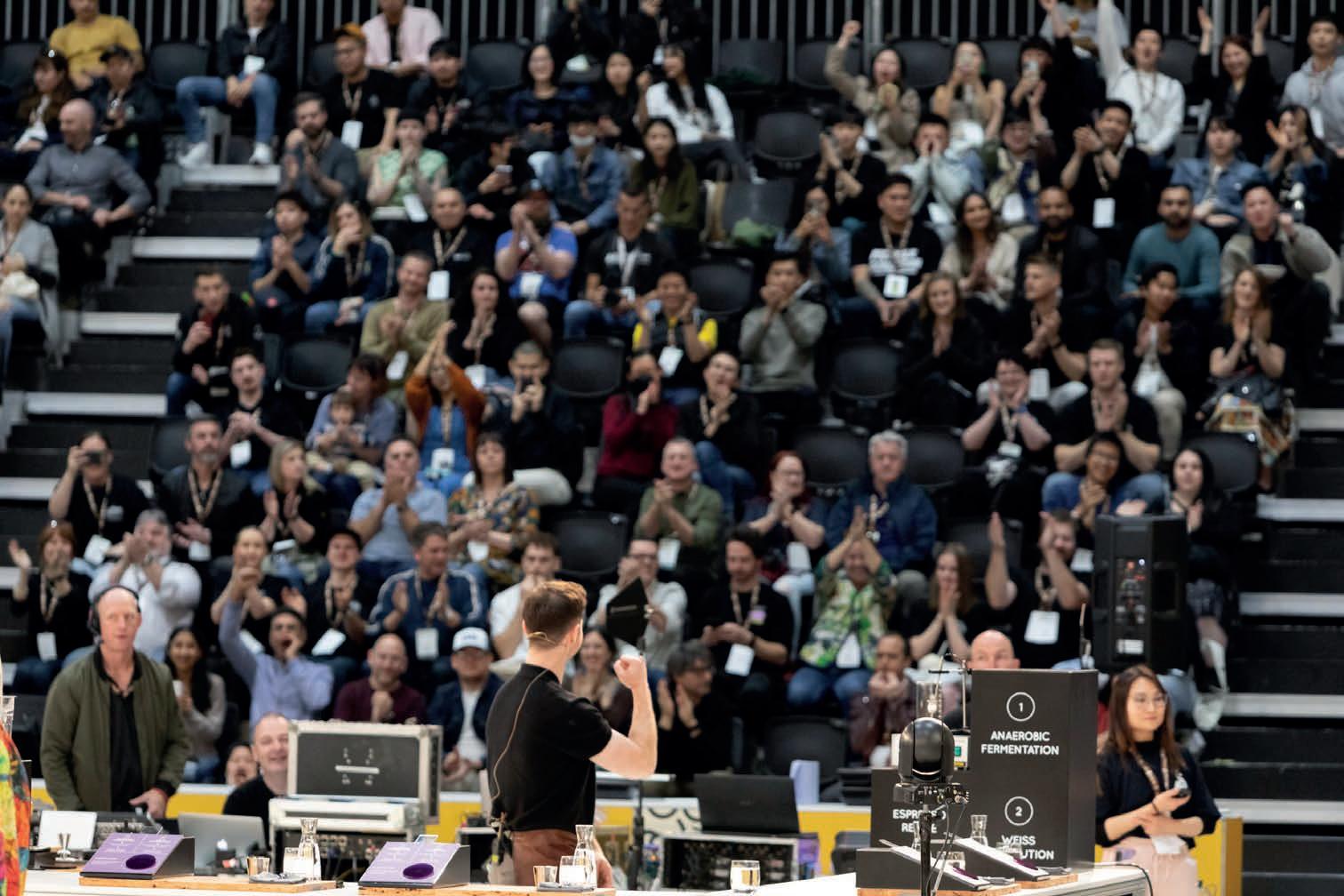
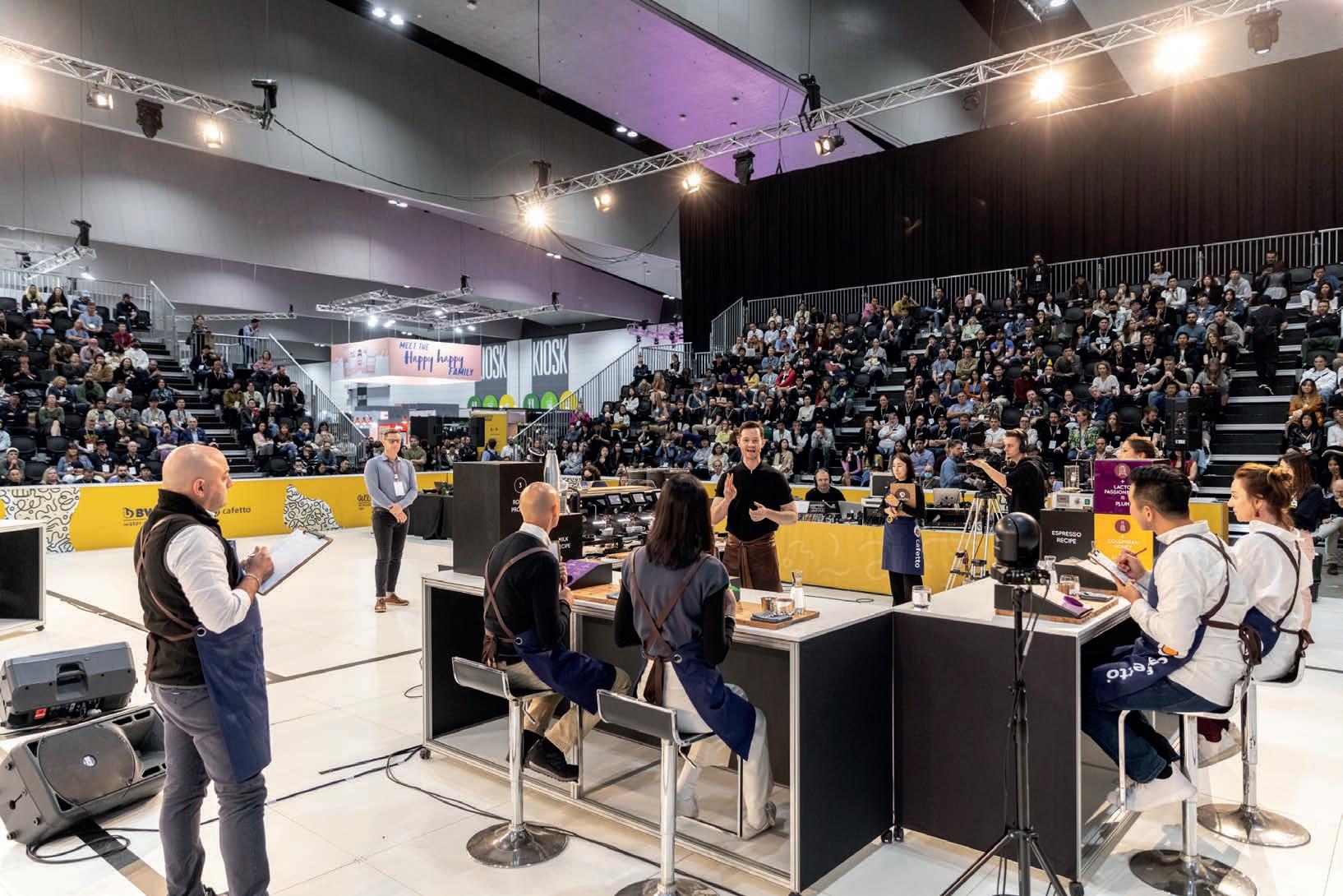
A record 15,056 attendees visited the expo over four days from 27 to 30 September at the Melbourne Convention and Exhibition Centre (MCEC), with 15 per cent international attendees from 75 countries, indicating a strong return of overseas participation.
The attendance figure is the highest of any MICE expo since the event’s inception in 2012, with an increase of 25 per cent of visitor numbers since the 2019 event.
“Since the inception of MICE in 2012, it has been a destination to do business by connecting buyers and sellers under the one roof annually and forming client relationships. The expo was already the largest dedicated coffee expo in the Southern Hemisphere, and thanks to a return attendance after three years of postponement, we are proud to reinstate that title once again and announce the expo as being our highest attended ever,” says MICE Show Director Lauren Winterbottom.
WARM UP
To set the scene, national barista champions from across the globe descended on Melbourne the week leading into MICE, with many congregating at the Cafetto Barista Base camp to train ahead of the World Barista Championship (WBC), of which Cafetto is the qualified cleaning sponsor. On Monday 26 September, the inaugural CafeSmart Charity Golf Day took place at Latrobe Golf Course, uniting industry figures for a networking golf day. The sold-out event saw participants tee off for 18 holes, engage in an industry talk with guest speakers including La Marzocco UK and Ireland’s General Manager Paul Kelly, Sustainable Harvest’s David Griswold, and Eversys’ Director of Business Development and Marketing, Kamal Bengougam.
The event concluded with a live auction, in which about US$20,058 (AUD$30,836) was raised for CafeSmart training and employment programs for migrants and youth in Australia.
Golf participant and guest speaker Bengougam says as much as the day was a great networking opportunity there was a bigger message at play. “[It] reminded me that even in hardship, we
should remain generous and keep an eye out for those who may be less fortunate than we are,” he says.
That evening, a De’Longhi Melbourne Coffee Week (MCW) launch event began festivities before excitement set in and the countdown to MICE was just a few hours away.
THE BIG REVEAL
As the doors to the ninth edition of MICE opened, guests were met with a spectacular view of more than 170 exhibitors representing all sector of the global coffee supply chain. The eager exhibitors were ready to share the latest in machine innovation, experimental coffees, and product tastings.
At Roasters Marketplace, brews were running hot from Commonfolk Coffee Roasters, Black Vice Café & Roastery, Just Planet Coffee, Coffee Me Up, Merlo Coffee and Adore Estate.
Over on the WBC stage, visitors started filling the grandstands with competition underway, with the bellowing of the emcees providing an exciting ambiance.
For many international guests such as Eversys’ Bengougam from London, attending
MICE2022
AFTER THREE LONG YEARS, AND IT WAS WORTH THE WAIT WITH THE INTERNATIONAL COFFEE COMMUNITY WITNESSING THE REVIVAL OF THE AUSTRALIAN COFFEE SCENE.
MICE2022 hosted the World Barista and Brewers Cup for the second time in the event’s history.
28 GCR | NOVEMBER/DECEMBER 2022 EVENTS MICE2022
Images: Melbourne International Coffee Expo
MICE was a chance to meet people from all over the world and conduct meetings with friends not seen in years.
“It was as if time had stood still. People were smiling, sipping cups of espresso attentively, laughing…life as it used to be,” Bengougam says. “For Eversys, we had two partners with a great presence – Service Sphere and Tiger Coffee – exhibiting our machines. Our Super Traditional range caught the eye of visitors, led by the Shotmaster Pro that combines both market-leading performance, uncompromising in cup quality and eye-catching aesthetics.”
Bengougam says the exhibition was well attended and “business opportunities were alive”.
Over at the Vortx KleanAir Systems stand which displayed the Ecofilter, President Ron Kleist travelled from the United States and said the experience was “far better than I had dared imagine”.
“The quality of attendees and their deep knowledge of all-things coffee is a solid testimonial to the leadership position of Australia in the global specialty coffee community,” Kleist says.
“It was so wonderful to see so many coffee aficionados in one place at one time and enjoy being together in what seems like forever. Having the WBC and the World Brewers Cup at the same time added so much energy and excitement to the event. VortX will have a
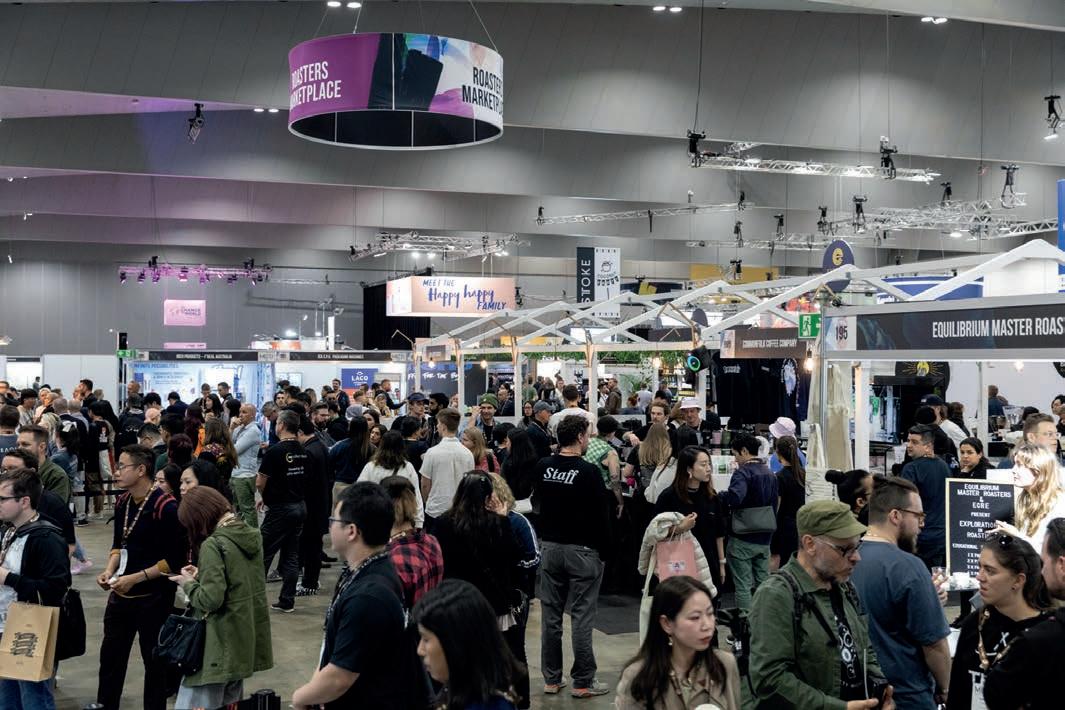

much larger presence for MICE2023. Can’t wait to see friends old and new again.”
Brambati CEO Fabrizio Brambati travelled from Italy to display the KAR 15 roaster and 15-kilogram batch capacity, and says it was great to meeting existing and new Brambati clients.
“To participate to this exhibition is one of the signs of a return to normality. To meet all these people with whom to discuss of future projects instead of the pandemic situation was also a great achievement,” Brambati says.
Before we knew it, day one had ended, and it was time to celebrate with La Marzocco at Starward Whisky distillery.
BACK FOR MORE Day two of MICE started off with a sold-out city gathering of the International Women’s Coffee Alliance Australian ‘stronger together’ breakfast event, celebrating women who had forged successful careers.
Back at the MCEC, it was time to talk tech and explore new innovations.
Victoria Arduino displayed its new Black Eagle Maverick espresso machine, and brand-new PureBrew Filter Coffee, which the Australian coffee community appreciated.

“As Victoria Arduino, we also continued to support the best baristas worldwide with Mythos, the official grinder of the WBC. Mythos confirmed its positioning as the best-in-class grinder and we are proud to support the best competition in the world,” says Simonelli Group Marketing Manager Simona Giampieri.
Australian equipment distributor Coffee Works Express celebrated the Qualified Espresso Machine of the WBC, Tempesta, in addition to models from Slayer, Wega, Mazzer, and Astoria.
Rancilio continued the celebration of Italian manufacturing, presenting the RS1 espresso machine to the MICE masses.
“It provides cutting-edge brewing technology combined with Rancilio expertise and a unique workflow design. As a Specialty Coffee Association certified espresso machine, this validates its position in the market as an industry leader,” says Rancilio Australasia General Manager Paul O’Brien.
For first-time MICE participant Italian grinder manufacturer Eureka, Sales Director
A record 15,056 attendees visited MICE over four days.
NOVEMBER/DECEMBER 2022 | GCR 29
Fifteen per cent of guests to MICE2022 were international attendees from 75 countries.
Luca Nunzi says exhibiting was a unique opportunity to offer a direct Eureka experience to the many baristas and coffee shops owners of the Australian and southeast Asian market.
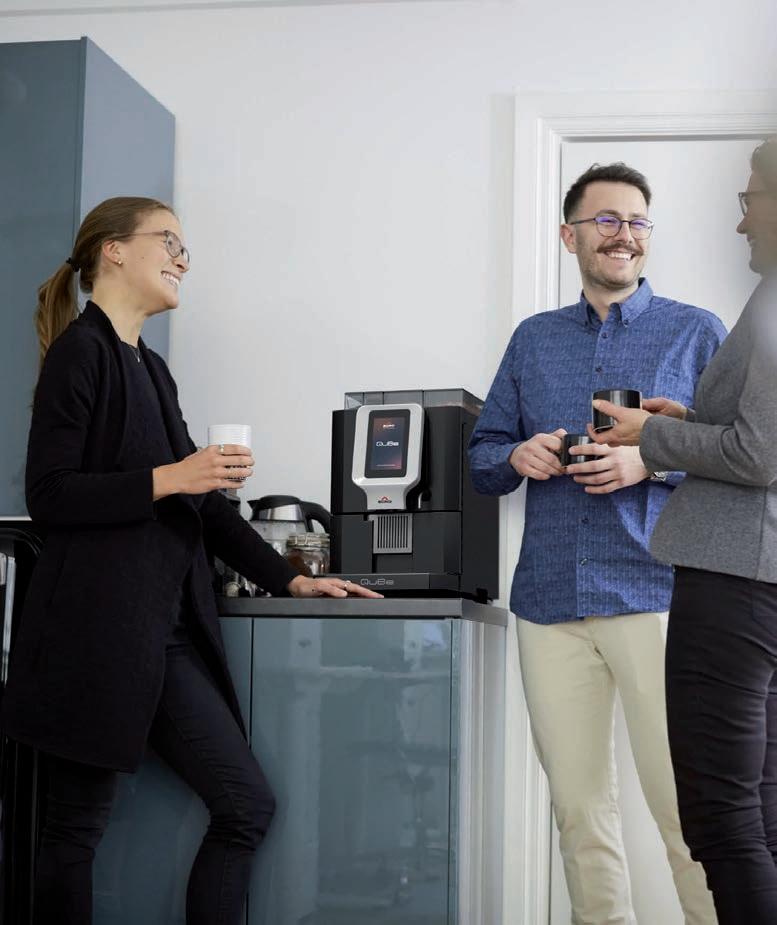
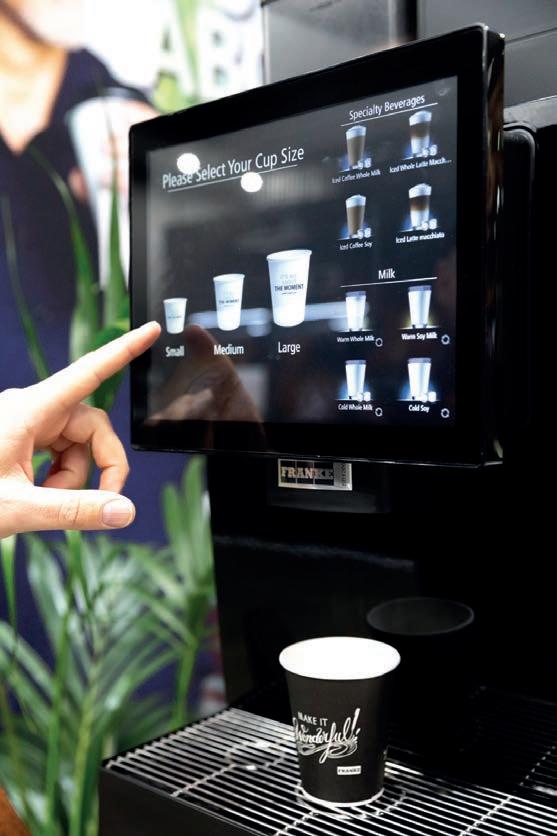
“And at the same time, [it was] a great moment of mutual enrichment, breathing firsthand the feelings and trends of a market so fascinating, and so unique,” Nunzi says. “We had many previews at our booth, representative of the last Eureka’s new generation of coffee grinders.”
Eureka presented the Mignon Libra, equipped with a new instant grind weighing technology; and the Atom Excellence, a new ultra-compact solution with endurance and premium usability. It also showcased the Prometheus grinder, considered a “perfect synthesis between design and innovation, technology and style”, and the winner of the MICE Ancillary Electrical Equipment 2022 Product Innovation Award.
For many brands, MICE was the first opportunity products had been physically presented to market in years, and for others like Probat, it was a chance to present new innovation.
“The great desire to meet again in person was truly remarkable about this year’s MICE, reflected not only by the crowds of visitors in the aisles but especially at the Probat booth,” says Probat’s Iris Gerlach. “Here, attendees took an equal interest both in the UG22 drum roaster and the electrically powered Sample Roaster. Whereas the former attracted great attention, due to its unmistakable individuality in particular, the Sample Roaster sparked ample discussions revolving around Probat’s manifold and ambitious approaches to decarbonising the coffee industry.”
Hemro Group displayed its Mahlkönig Grind by Weight E65s and E80S models. In addition, Hemro Group Head of Sales Asia Pacific Ross Quail says MICE was a special opportunity for Australians to support local barista Anthony Douglas, and for the industry to gather again.
“I’d have to say overall that it was great to be amongst the nation’s coffee people,” Quail says.
On the World Brewers Cup (WBrC) competition stage, competition got underway on day two, with fans marvelling at the presentations and finesse of the brewing techniques.
That evening, UCC coffee invited customers to its new roastery opening where guests marvelled at the capacity of the facility. De’Longhi MCW events also continued this evening, with the Single O World(ish) Parachute Championship and Cafe Imports ‘Where are we now’ events taking place. All registration fees for De’Longhi MCW were donated to MICE official Charity Partner StreetSmart, working to fight homelessness.
THE HALFWAY POINT
Day three of MICE was an opportunity to refuel with plenty of coffee options at Roaster’s Alley, including Australian specialty roasters Toby’s Estate, St Ali, Mocopan, and Veneziano Coffee Roasters.
Over in Origin Alley, it was a chance to celebrate the producers and traders who had travelled from across the globe to present their coffees from South America and Africa, East Timor, Papua New Guinea and Panama. Cuppings were a plenty on the Minas Hill stand, in addition to InterAmerican, and FTA, with guests lucky to meet some of the farmers that grew the very coffee they were tasting.
That afternoon, the Semi Finalists of the WBC and WBrC were announced, more social events continued. That night, the Victoria Arduino Lab got bustling with a Pure Brew party with the 2017 World Coffee in Good Spirits Champion Martin Hudak.
THE FINALE

With tiring feet and weary eyes, one last energy injection was needed to conclude MICE in the best way possible. Last laps around the show floor continued to reveal new products, and the afternoon celebrated the best of them in the MICE2022 Product Innovation Awards.
The LaCimbali M200 won the award for
Franke Coffee Systems displayed its Specialty Beverage Station SB1200 at MICE.
30 GCR | NOVEMBER/DECEMBER 2022 EVENTS MICE2022
The Victoria Arduino E1 Prima features a unique insulation mechanism to reduce heat dispersion and energy consumption.
Coffee Preparation Equipment.
“It is with great happiness that the Service Sphere team celebrate the Product Innovation Award for The La Cimbali M200. The winning of this award is recognition of the evolution of high-quality coffee output, blended with wellconsidered design and barista ergonomics,” says Service Sphere Director Maurizio Marcocci.
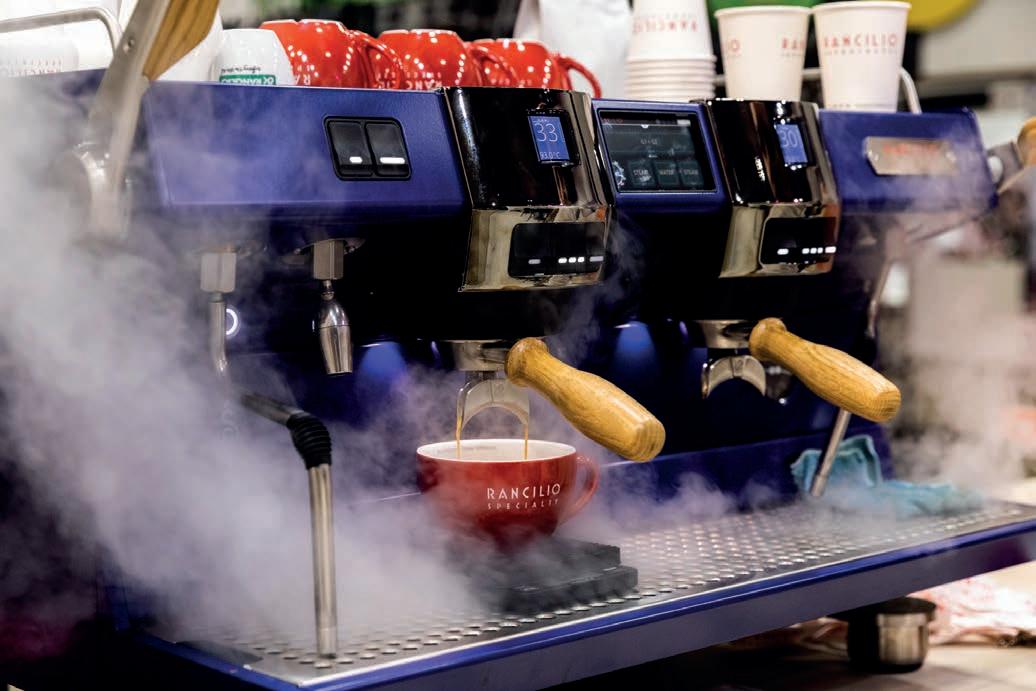


The Compass from Nucleus Coffee Tools was awarded the Product Innovation Award for Coffee Accessories, Weber Workshops’ Unifilter portafilter won the People’s Choice award, and Eureka Grinders’ Prometheus grinder won the Ancillary Electrical Equipment award, in what Eureka’s Ballocci describes as “the cherry on the top” for its first direct participation in MICE.
Attention then turned to the WBrC competition stage where Shih Yuan Hsu (Sherry) of Taiwan was crowned the 2022 Champion. Then it was the WBC’s turn. With the grandstands full and the home crowd anxiously waiting, the top six finalists

what was the biggest MICE Melbourne, and world, had ever seen.
The celebrations continued long into the night, thanks to St Ali who hosted the official After Party, where a new champion was toasted, and a successful MICE
came to an end.
Australia’s Anthony Douglas of Axil Coffee Roasters stood side-by-side with the United States’ Morgan Eckroth. It was a moment resembling the same situation in 2013, when Melbourne last hosted the WBC – Australia’s Matthew Perger placed runner-up to America’s Pete Licata. This time, the placings reversed, and Douglas was crowned the 2022 World Barista Champion. It was a fairy-tale ending to MICE2022 – a Melbourne world champion, at a Melbourne-hosted event, in
officially
Rancilio presented the SCA-certified RS1 espresso machine at MICE2022.
Meet the Champs
2022 WORLD BARISTA CHAMPION — A NTHONY DOUGLAS
Anthony Douglas of Axil Coffee Roasters has written the history books. When he was crowned 2022 World Barista Champion on the last day of the Melbourne International Coffee Expo, he became the first Melbourne barista to win the World Barista Championship (WBC) and the first to win the title at a homerun event.
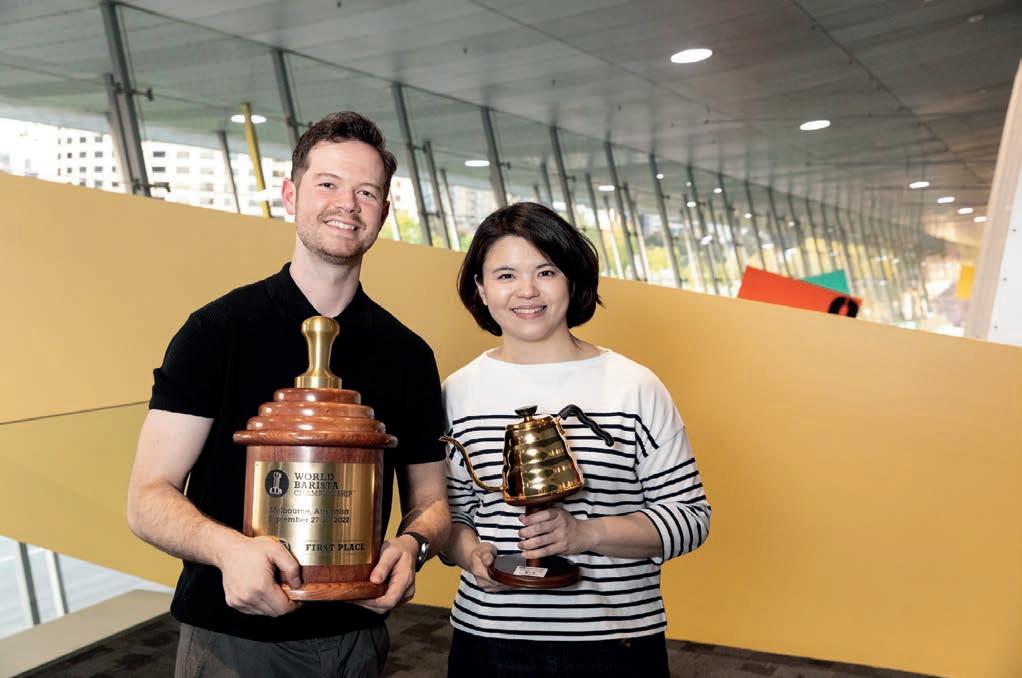
“I feel incredibly proud to be named this year’s world champion and am honoured to represent Australia, and more specifically Melbourne, on the world stage. I couldn’t have done it without the unwavering support and commitment of the team at Axil who have been by my side inspiring me for the past nine years,” says Douglas.
Douglas is the first Australian to win the title in seven years when Sasa Sestic won in 2015.
“It’s such an honour to win the World Barista Championship, something I don’t take for granted,” he says.
Morgan Eckroth of the United States placed runner up, Claire Wallace of the United Kingdom placed third, Takayuki Ishitani of Japan placed fourth, Benjamin Put of Canada placed fifth, and Patrick Rolf of Sweden placed sixth in the Finals round.

Axil Coffee Roasters’ Founder, David Makin, a two-time Australian Barista Champion, was Anthony’s mentor. Jack Simpson was his coach, and Matt Crowley, both from Axil Coffee Roasters, helped coach and roast Douglas’ coffee.
His routine focused on the theme of ‘trust’, building layers of trust with his judges, and
ultimately between the barista and consumer in an informative and fun way.
Competing against 47 world-class competitors from around the globe, Douglas used an Anaerobic Natural Sidra coffee from Huila, Colombia, produced by Nestor Lasso at his farm, El Diviso. The coffee was fermented for 80 hours anaerobically prior to drying as a natural, resulting in intense purple and red fruit characteristics such as cherry and blackberry, and an acidity and tannin quality reminiscent of red wine. The coffee was roasted with a higher airflow with a low finish temperature post-first crack, but a longer development of 24 per cent.
To streamline his technique and extraction, Douglas used the ‘Weiss distribution technique’. This uses a series of pins to evenly distribute the coffee top to bottom and achieve higher extraction yields.
The final key decision was Douglas’ choice of milk. He explored ‘cryodesiccation’, a method of turning the liquid in milk into a vapour and concentrating the milk solids including proteins,
Anthony Douglas wins the World Barista Championship, and Shih Yuan Hsu (Sherry) wins the World Brewers Cup.
32 GCR | NOVEMBER/DECEMBER 2022 EVENTS WCC2022
Anthony Douglas pours his winning signature drink in the WBC final.
For his signature drink, Douglas paired a Colombian honey for complex sweetness, a lactofermented passionfruit syrup to elevate the fruit notes, hibiscus cold brew tea to add complexity to the red wine tannins, and a ‘cryodesiccated’ date syrup to increase texture and intensity in the drink.
“Working in the coffee industry for the past 12 years has taught me that making great coffee is all about consistency and pushing the boundaries of what has been done before. I’m ecstatic that I could show that to the judges and that I got to be surrounded by others as passionate about coffee as I am,” Douglas says.
2022 WORLD BREWERS CUP CHAMPION — SHIH YUAN HSU
Shih Yuan Hsu (Sherry) took on 30 other national Brewers Cup representatives from 28 to 30 September at the Melbourne International Coffee Expo and was the last woman standing when emcee Hide Izaki called her name in front of a packed crowd and global livestream audience.
“I’m still feeling nervous, the reality hasn’t set in yet. But I really enjoyed the stage and had a lot of fun. I’m still in shock,” Yuan Hsu tells Global Coffee Report.
Elika Liftee from United States placed runner up, and Elysia Tan from Singapore placed third in the competition. Tomas Taussig from Czech Republic placed fourth, Jhon Christhoper from Indonesia placed fifth, and Simen Andersen from Norway placed sixth.
Yuan Hsu has worked in the coffee industry for six years and currently works as a barista at Coffee Lover’s Planet in Hsinchu, Taiwan.
Yuan Hsu competed in the 2019 and 2020 Taiwan Brewers Cup, placing fifth overall in the 2019 World Brewers Cup.
“In the 2019 World Brewers Cup, my compulsory service wasn’t very good, so this time I used a syphon brewing method, which is more efficient and consistent. This time, for my open service
I used an OREA Brewer V3, a flat bottom brewing dripper made of polycarbonate, which preserves the core temperature inside, to ensure I received a higher score,” she says.

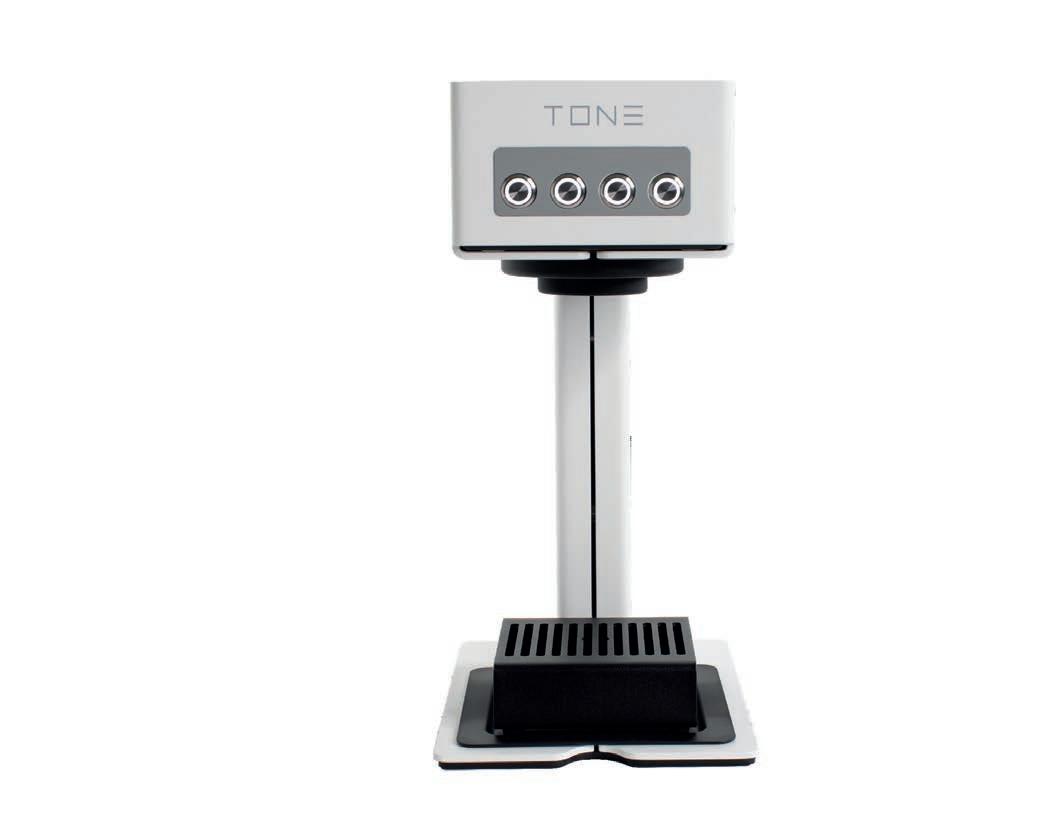
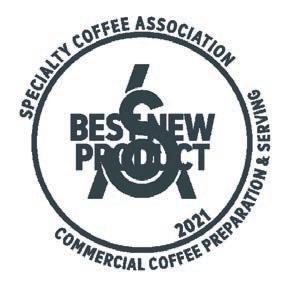
Yuan Hsu used a natural Geisha from Finca Mikava Coffee in Colombia, located 2000 metres above sea level.
“The coffee cherries undergo a carbonic maceration process with a special strain of yeast and are slow-dried with frequent agitation, bringing a clean cup,” she says.
Yuan Hsu used a light roasting profile to make the aroma and flavour more sophisticated and bring out a fruity sweetness, with tasting notes of “peach, orange, berries, and pineapple”.
For her routine, Yuan Hsu used 14 grams of coffee, inputting 200 grams of water. Using a ratio of 1:14, 50 grams of water are added every 30 seconds, a total of four times.
“I would like to thank my company UCC Coffee Taiwan, who helped me a lot, and made me feel like I’m not alone. Without all of you, I couldn’t have done so well,” Yuan Hsu says. GCR
The sum of its parts
ALCORN CAFÉ ENGINEERING HAS BEEN HELPING BREATHE NEW LIFE INTO OLD ESPRESSO MACHINES, GRINDERS AND ROASTERS WITH ITS BESPOKE PARTS AND TAILORED SOLUTIONS.
Sean Alcorn from Alcorn Café Engineering (ACE) has built his company on finding unique solutions to problems that can arise with a variety of coffee equipment, from espresso machines to grinders and roasters.
Starting as a repair business, ACE has transformed into a business that sends bespoke machine parts the world over so that business owners can extend the longevity of their coffee equipment.

“We design and engineer improved parts for the specialty coffee industry,” says Alcorn. “We find the Achilles heel in a particular
machine and, if we can we develop a better part, then hopefully it gives the roaster or the café owner greater longevity, and that’s what we are known for. I’m proud of the fact that I can count the number of breakdowns our customers have had over the past few years on one hand.”
Alcorn points out that it is just not just the down time or the cost to fix the problem that concerns café operators when a coffee machine ceases to function, it’s the loss of coffee sales plus the loss of the food revenue in many businesses.
“Despite the fact that this industry loves loyalty, if the machine is down on that day and a customer walks down the road and the barista happens to be better on the day, then that customer is gone simply because the machine was out of order,” Alcorn says.
Alcorn Café Engineering has a broad understanding of a range of coffee machines, and it can often spot issues that manufacturers may not be aware of.
Alcorn tells the story of a machine that would never fill the steam boiler due to the reliance on mains pressure. The machine had a steam pressure of 1.45 bar and by simply opening the tap at the handwashing sink, the pressure at the machine immediately fell to 1.15 bar. As the machine was relying mains pressure, ACE added a pump and a motor to resolve the problem. In subsequent versions of the machine, the machine manufacturer added a fill boost pump as an option at time of order once it became aware of the issue.
Alcorn says while coffee machine manufacturers are quick to highlight the benefits of using original parts, ACE has created a following with some devoted fans of its bespoke parts.

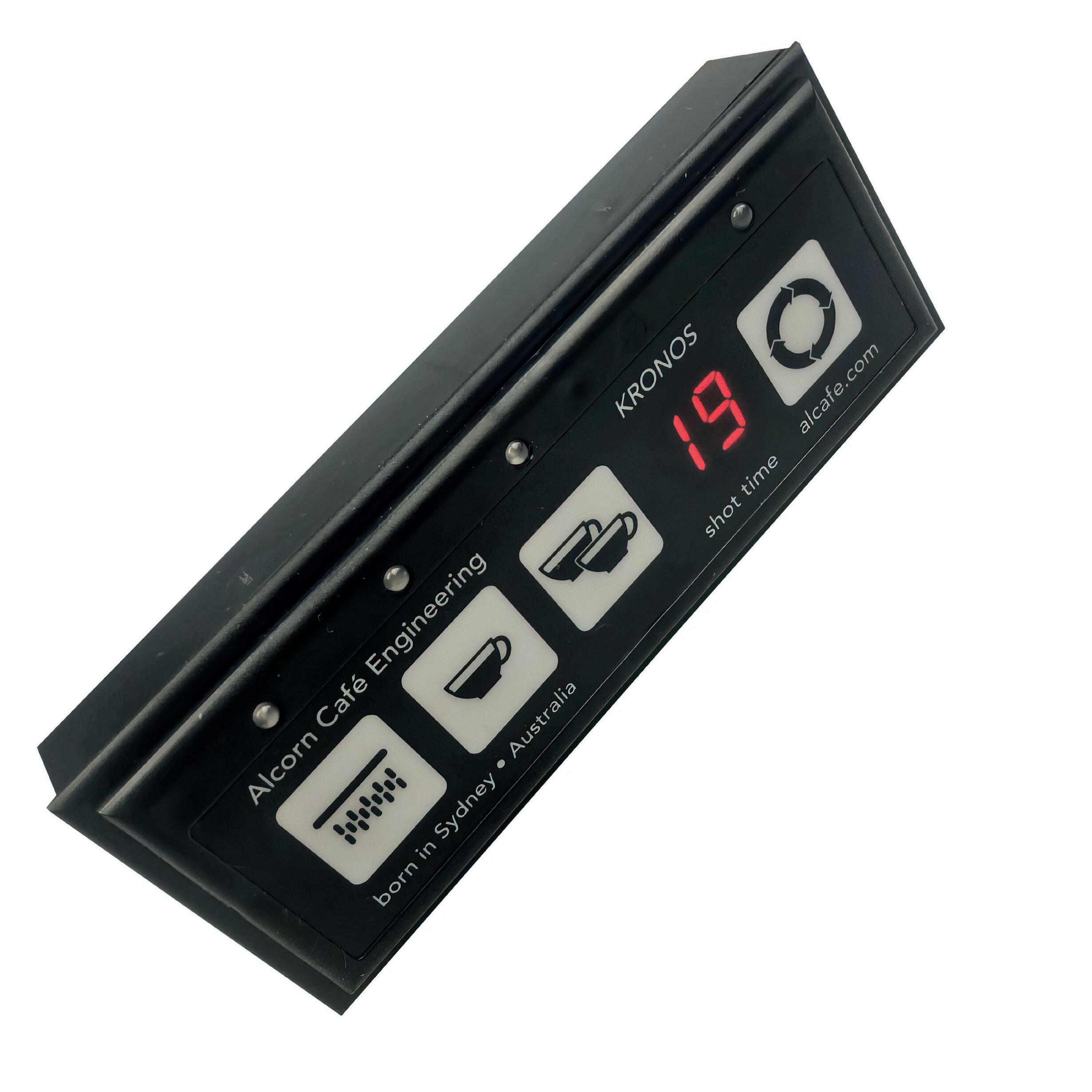
One of ACE’s most popular products is its shot timer. The shot timer generally picks up a signal from the machine’s solenoid valve so when the valve opens, it times the shot that is being brewed.
“Time is important in the extraction of a good espresso. At the time, we knew most machines came without a shot timer, so we went and developed our first one and we called it the ShureShot. What started as a simple shot timer like many projects, was moulded by customer needs. The
A sheer plate for EK43 grinders help protect the motor from damage.
34 GCR | NOVEMBER/DECEMBER 2022
PROFILE
The ACE Kronos Touchpad is designed and developed in Australia.
TECH
Alcorn Cafe Engineering
ShureShot has three fully programmable outputs and we can drive the brew valve, the pump, and a bypass valve,” Alcorn says. “The displays can be programmed green, indicating the ideal shot range was achieved, or red, providing the user an indication that the shot was out of range. This tool is particularly ideal for training and education for new staff.”
This solution was not for everyone however, and ACE has since moved on to more basic shot timers. Alcorn says there are certain areas of the coffee industry that have a cult-like love of the ShureShots, so much so that ACE has recently filled an order for several ShureShots and is wondering if they might be making a comeback.
Another popular part is ACE’s Kronos touchpad that sells particularly well in Australia. The touchpads were designed and developed in Australia by ACE and are a direct replacement for keypads in many other traditional machines.
“Customers were looking for a more reliable solution. We made our enclosure from a more temperature resilient material and added eight machined brass inserts for screwing our supplied stainless steel machine screws into metal, rather than self tappers into plastic – which are prone to premature breakages. Then, customers were telling us that they loved the feel of the touchpad,” Alcorn
says. “I had never thought about it but our keypads had a much nicer tactile feel than a lot of other manufacturers. They just work well and they don’t miss a beat.
“They are Australian made and we just applied for the official Australian Made label this year, and we now have that on the shot timers, too.”
Alcorn learned his skills in the Australian air conditioning industry and was trained as a refrigeration and air conditioning technician at his family business.
He is now keen for ACE to “fly the flag” on Australian products because the Australian coffee industry is well respected globally, and so is ACE. Alcorn says the reason the company’s parts have such a solid reputation in the US market is because of their longevity.
“They like the idea that our parts last longer because the repairers have to drive long distances to repair machines and they don’t want to have to come back too often,” he says.
ACE also repairs espresso machine control boards, in some cases completely rebuilding a thousand-dollar board for a fraction of the cost.
It was Alcorn’s knowledge of designing and manufacturing of control boards that led to ACE offering of a repair service.
“There is a view in certain parts of the industry that a repaired board is not as good as a new one but if I can design and make boards, we can certainly repair them,” Alcorn says.
The ACE Volumetric Board has connectors for shot timers or keypad cables, and is available for a variety of machines.



The company’s Instagram @aceservices highlights ACE’s variety of products from the ACE Shot Timer to custom machine switches and the ACE touchpads. They also have a collection of o-rings, valves, elements, and screws.
Alcorn continues to move away from simple repairs and into the design and manufacture of coffee machine parts, as well as some grander Australian-made design plans that are still under wraps.
For Alcorn, he says the satisfaction of his work is helping customers get the most out of their equipment.
“We are retrofitting machines that have been working for decades and they show no signs of stopping when you give them a bit of love and attention,” he says. “Sometimes it takes an outsider to see the problem and we come along and ACE it.” GCR
For more information, visit alcafe.com
A replacement DigiZone Board for Gen1 Synesso machines.
NOVEMBER/DECEMBER 2022 | GCR 35
An ACE steam tap shaft extension.
The evolving role of a roaster
VITTORIA FOOD & BEVERAGE MANAGING DIRECTOR ROLANDO

SCHIRATO TALKS ABOUT THE REALITY OF NAVIGATING A BUSINESS POST-PANDEMIC, TOP ISSUES IMPACTING ROASTERS, AND WHERE TO NEXT FOR THE THIRD-GENERATION COMPANY.
he global pandemic was a time of reflection, reinvention, and rejuvenation for many businesses. For some markets, it meant consolidation, and for others, it brought renewed attention to the value of being local, such as Vittoria Coffee, who has helped pioneer the development of Australia’s coffee industry since 1958.
“We remain a family business, 100 per cent privately owned, Australian owned, Australian roasted,” says Managing Director Rolando Schirato. “Sometimes there’s a perception that we’re a big multinational that operates offshore, but we’re proud to be family operated. We produce locally, we roast locally, we try to use local suppliers as much as possible.”
While the COVID-19 pandemic rattled a few businesses, for those that have seen growth and strong performance since, Schirato says there’s been little reprieve.
“I think everyone was hoping to have a bit of respite after COVID, but actually this year has probably been harder than the past two years,” Schirato tells Global Coffee Report.
“Coffee pricing is definitely the number one issue coffee roasters are facing at the moment. Coffee is priced in US dollars and they’re the highest they’ve been in over 10 years. We experienced the same situation about 12 years ago but that time, the United States dollar was pretty much at parity with the Australian Dollar, which helped us and many other Australian roasters. This time, we’re seeing coffee pricing at similar levels or higher combined with a weaker Australian dollar, currently at US$0.64 cents today (at time of interview). The combined effects of foreign exchange and rising coffee prices are the two biggest variables and impacts to any roaster’s bottom line.”
Prices are one thing, then add on freight increases, inflation, supply chain disruptions, and a whole raft of other headwinds right after COVID-19 where sales were affected. Thankfully,
Schirato says Vittoria Coffee has been lucky to bypass any major green bean shipment delays.
“We’ve been an importer of green beans since we started roasting in Australia 1958, so a strong supply chain is one of our core competencies. Like most Australian roasters importing green beans, we’re having to deal with missing shipping vessels and other disruptions. Collectively, this makes for tough conditions for coffee businesses,” Schirato says.
Vittoria Coffee has never wavered on the quality of coffee it sources, using only 100 per cent Arabica coffee. On top of the normal base price and stock exchange, the company is buying specialty coffee from multiple different origins. Schirato says this cost compounds compared to some of Vittoria Coffee’s competitors and smaller roasters who can potentially buy cheaper coffees or substitute origins to mitigate cost increases, which Schirato says Vittoria Coffee can’t, and won’t do.
36 GCR | NOVEMBER/DECEMBER 2022
Rolando Schirato is the Managing Director of Vittoria Coffee.
INDUSTRY PROFILE
Vittoria Coffee
The business has absorbed a “significant amount” of price increases, only passing on a relatively small amount to the market.
Schirato says he feels for business operators who are struggling to pass on cost increases because of pre-existing customer loyalty and fear of sale decreases.
“It’s hard. My advice for our customers, like everyone else experiencing significant cost pressures, is that they need to pass those things on or it very quickly catches up with you, and you’ll find yourself in trouble,” he says.
To speed up the flow of service and manage reduced labour, Vittoria Coffee encourages café customers to invest in equipment innovation and automation, from espresso machines to automated milk steaming and dispensing, something it heavily advocated pre-pandemic.
“The role of a roaster these days is not just supplying beans in a bag. It’s about being an extension of your customer’s business,” Schirato says. “It’s about differentiation and how you work with your customers from an operational perspective, helping them with service flow, labour, training, equipment, and marketing support to help them grow. It’s about how you actually partner with your customer in a way that is meaningful, and beyond just supplying coffee.”
Schirato adds that while it’s relatively easy for anyone to start a coffee business these days, making it sustainable and successful is another obstacle altogether.
“Any challenging business environment or recession will weed out some operators who weren’t running a tight enough ship. But in the Australian landscape, I think consolidation will definitely take place. There will be people that drop out, and those that will get acquired, as we’ve seen happen – you’ve got private equity acquiring brands in some spaces, and huge multinationals like JDE Peets acquiring brands like Campos Coffee. And then you have brands like Toby’s Estate who have been acquired for the third time by UCC Ueshima Coffee Co in Japan. I think we’ll see more of that,” he says.
In the meantime, Vittoria Coffee continues to run its own race and used the past two years to expand its offering into other segments in the retail sector.
“We launched into the instant market for the first time in our 75-year history. We went into the premium, small-sized 100-gram segment, which went exceptionally well. In just around four months we’ve been able to take around 30 per cent market share just with that size segment, which has been very promising. That category has been owned by the big guys – JDE Peets, Nestlé, Nescafé and Moccona – who have been long-term staples, but with coffee evolving everywhere else, we thought we could do something better,” Schirato says.
Due to its success, Vittoria Coffee is looking to launch into the large-size instant segment. Schirato estimates the category to be valued roughly at $400 million in the grocery sector, similar in size to the pure coffee category representing capsules, whole beans, and ground coffee. “It’s a big market we’ve never played in before which presents a huge opportunity for us,” Schirato says.
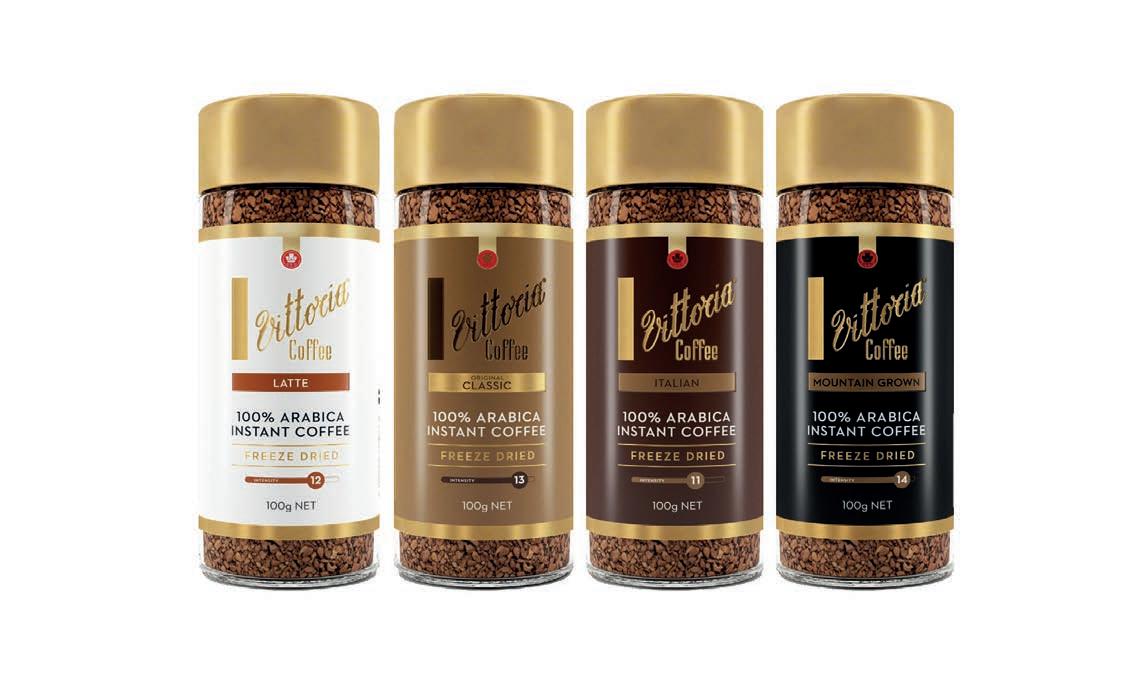
The brand continues to monitor market trends and adapt accordingly.
“At the start of 2020, Vittoria Coffee became one of the first Australian manufacturers to produce Nespresso-compatible aluminium capsules in the Australian market,” Schirato says.
This year, it also launched a dedicated coffee blend in the grocery market to pair specifically with plant-based milk, and 12 months ago, it released a range of Vittoria coffee bags, which now account for almost 40 per cent market share, Schirato says.

“We never sit idle. We want to continue to innovate and provide products that suit different consumer needs and drive our category growth to offer customers what we believe is a better option,” he says.
“We want to best position ourselves to support our customers, providing the highest quality coffee for every coffee occasion. Expect to see more from us in the next few years.” GCR
Vittoria Coffee has launched into the instant market for the first time in its 75-year history.
NOVEMBER/DECEMBER 2022 | GCR 37
Vittoria Coffee launched a dedicated coffee blend to pair with plant-based milk.
Pioneering coffee technology
IMA COFFEE DISCUSSES THE LAUNCH OF IMA COFFEE LAB, A SCALEDDOWN PLANT OPEN TO CUSTOMERS, FEATURING THE LATEST PROCESSING AND PACKAGING TECHNOLOGIES.
Imagine a coffee processing and packaging plant that could handle every phase of the process at a company’s disposal, a plant that could test the best engineering technologies and innovations for the coffee industry.
IMA Coffee has turned that dream into a reality, creating IMA Coffee Lab, a unique centre open to all customers and coffee processing companies seeking professional advice and innovative solutions. It houses a fully functioning pilot plant covering all handling, processing, and packaging stages.
More than a showroom where customers can appreciate the extent of IMA Coffee’s expertise, Nicola Panzani, Strategic Director of IMA Coffee Lab, says it is a place to experiment solutions and gain a tangible overview of an entire plant.
“Customers are invited to come and test their own coffee at any step of the process or run a complete processing and packaging test through the pilot plant. This includes solutions for green coffee intake or storage, cleaning and sorting, weighing, handling and conveying, roasting, grinding, degassing with aroma protection using nitrogen, and coffee bag and capsule packaging,” says Panzani.
Located at the IMA Coffee Petroncini facility between Bologna and Ferrara in northern Italy, the Coffee Lab covers 3000 square metres and will be the starting point for many new products and research and development solutions dedicated to the coffee industry.
Panzani says the key benefit of having a single source for handling, processing, and packaging is the single supplier approach, and IMA Coffee Lab explores all stages in an integrated fashion, including intake and storage.
“This is followed by each processing phase from roasting to grinding and completed with the three packaging stages: primary, secondary and end-of-line. This allows customers to appreciate and adapt any step of the process to achieve their desired result,” Panzani says.
The Coffee Lab houses an on-site Analysis Laboratory that takes care of testing green coffee, roasted coffee, and ground coffee for key parameters such as humidity levels or weight loss.
“This allows visiting companies to make several tests and gather vital information to help make the right decisions before defining the details of each machine,” says Panzani.
Panzani says one of the main benefits of the new IMA Coffee organisation is comprehensive selection of coffee-oriented services accessible, such as tailored engineering solutions that can be defined and tested inside the pilot plant.
“Research and development projects can be used to test and develop customers’ packaging materials on the machines, while full consultancy services are also available to examine and discuss processing and packaging aspects. Quality analyses and incup tasting services are offered, along with turnkey solutions for complete processing and packaging lines from a single supplier,” Panzani says.
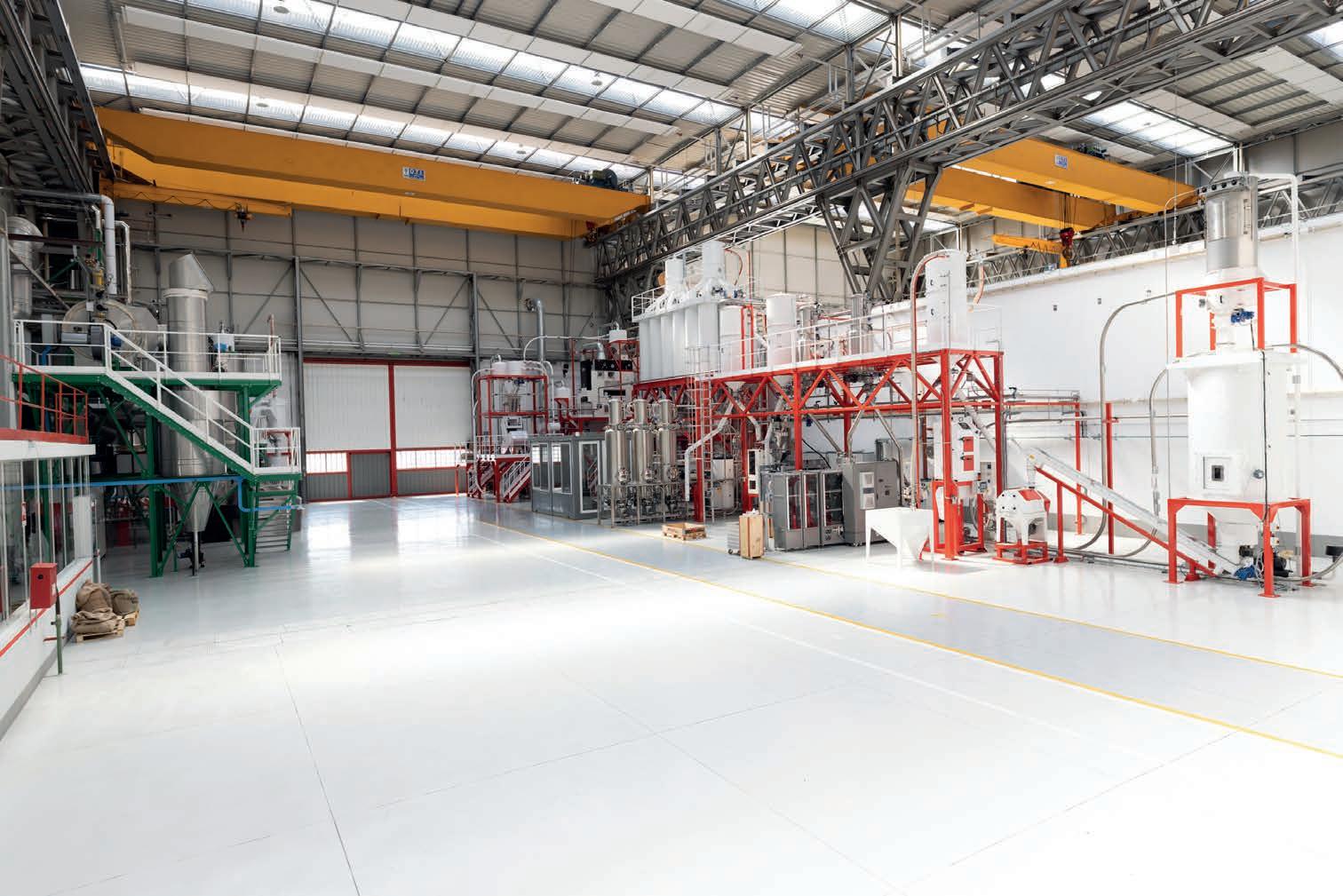
38 GCR | NOVEMBER/DECEMBER 2022
IMA Coffee Lab is open to all customers seeking innovative solutions.
AUTOMATION FEATURE
“We also have a global presence with sales representatives that are able to arrange Lab visits, and a technical Coffee Academy to train and acquire specific skills related to coffee processing.”
Panzani says the IMA Coffee Academy is one of the most engaging ways to increase all skills related to the coffee processing sector.
“Here, representatives of companies visiting the Lab will be able to attend short learning sessions to gain more expertise in green coffee analysis, roasting techniques, and in-cup sensorial analysis,” he says.
“Following the [Specialty Coffee Association] certification modules is one way, but we also encourage visitors to adhere to a personalised training program, which can be coordinated with the training staff.”
Specialist technicians are also available on a permanent basis at the Lab to provide visiting companies with valuable advice and technical details covering all aspects of the machines and packaging solutions available.
Panzani says IMA Coffee’s vast experience in packaging solutions is supported by Open Lab, another IMA laboratory, which researches sustainable alternatives by developing exclusive packaging materials.
“Capsule resistance can also be tested physically at the laboratory and IMA Coffee technicians are available to guide companies in their choice of materials. Customers are also encouraged to run trials on their own packaging materials at the pilot plant,” he says.

According to Panzani, working together on the plant configuration for each business enables IMA Coffee to adapt key features according to specific customer needs.
“Ultimately, the goal is to provide all the answers needed to create an integrated processing and packaging line which will maximise production efficiency, performance, and achieve the required product quality,” says Panzani.

“As a working, scaled-down plant covering the majority of equipment involved in the entire production process, it is an environment which enables visitors to examine all aspects closely, run numerous trials and obtain immediate answers.”
To complete the initiative which brings IMA Coffee closer to the market and its key players, IMA Coffee has also opened a spin-
off of the Italian-based IMA Coffee Lab at the IMA North America facility in Massachusetts, United States.
is the broadest technical and commercial business serving the coffee processing and packaging industry today.
“IMA Coffee Hub is the ideal starting point from where you will reach your destination. This is precisely the benefit the coffee industry obtains from IMA Coffee, just one supplier, already coordinated from within,” says Panzani.
Panzani says it’s important to IMA Coffee that it reaches every corner of the coffee handling, processing, and packaging universe, and can now address any issue facing coffee producers with the IMA Coffee Lab.
“Today’s IMA Coffee Lab is more than a logical consequence of a winning approach to the industry. It represents an opportunity for all companies interested in addressing the needs of a global market to interact with a leader in the field and evolve through the technologies IMA brings into play,” says Panzani.
“IMA Coffee invites coffee industry partners to discover the benefits of the new Coffee Lab with a view to enhancing their performance in a fast-moving sector.” GCR
For more information, visit www.ima.it/coffee
NOVEMBER/DECEMBER 2022 | GCR 39 AUTOMATION FEATURE
Specialist technicians are available at the Lab to provide visiting companies with advice and technical details of the machines and packaging solutions available.
Blue Skye thinking
SWISS COFFEE MACHINE MANUFACTURER SCHAERER HAS LAUNCHED
THE NEW SCHAERER COFFEE SKYE, A MODULAR, ADAPTABLE AND PORTABLE UNIT THAT WAS CREATED WHEN THE COMPANY SAW A GAP IN THE MARKET FOR A MID-LEVEL COFFEE MACHINE.
Schaerer’s new Coffee Skye automated coffee machine is one of the most portable units that the Swiss manufacturer has produced, and its slim dimensions and integrated 4.9 litre water tank means that it can be set up almost anywhere.
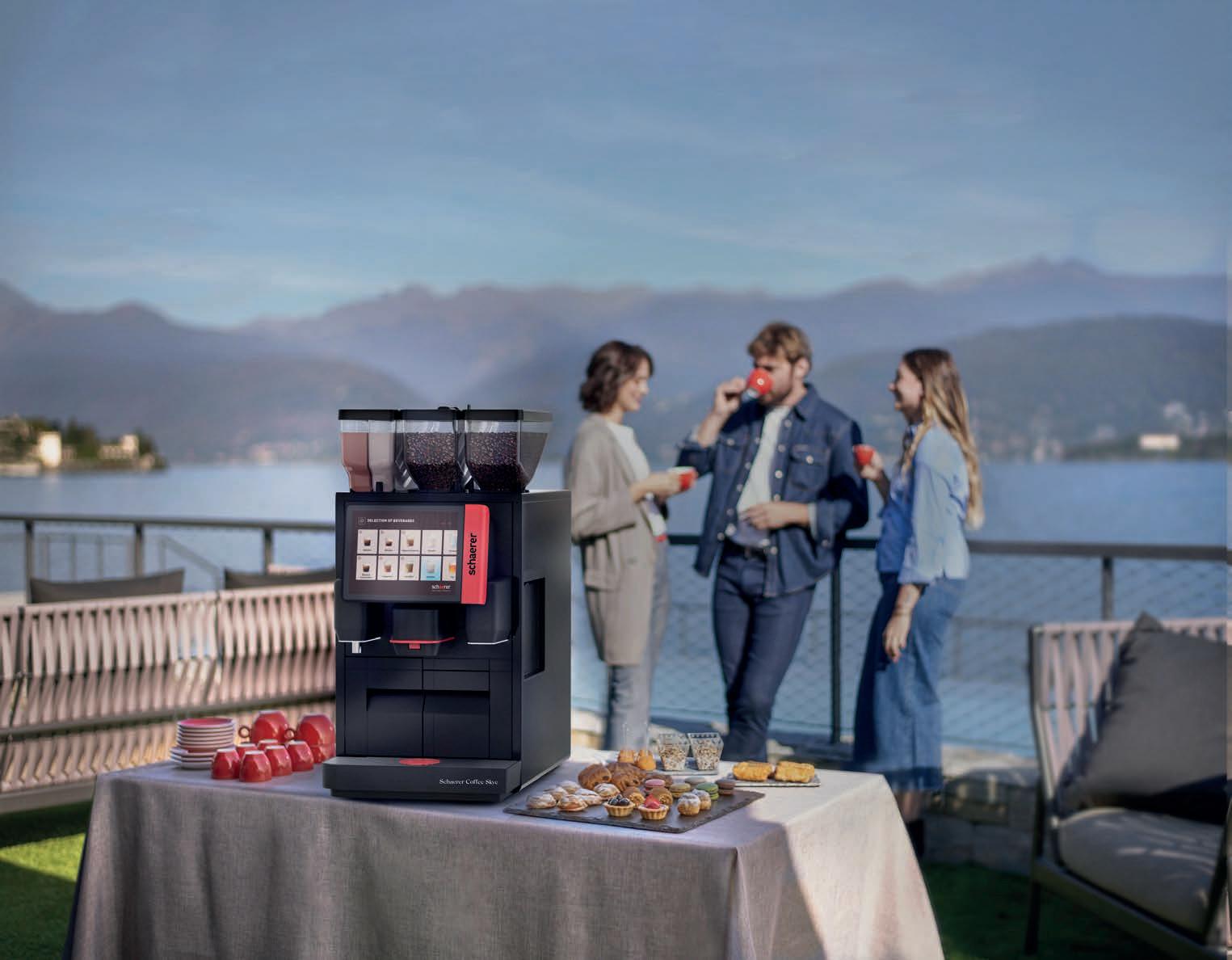
“With the Schaerer Coffee Skye, we wanted to cover the demand for midlevel output between the Schaerer Coffee Club and the very powerful Schaerer Coffee Soul 10 and 12,” says Mathias Meyer, Project Manager of Research and Development at Schaerer.
“We are pleased that we can now offer our customers another machine that combines modern design and state-of-the-art technology with intuitive operation.”
The adaptable machine for the mid-level market is ideal for convenience stores, event catering, offices, bakeries or fast-food restaurants; environments that require a number of different drink settings as well as a simple interface that can be used by coffee professionals and customers.
Meyer says the mobility of the machine and its high performance make it ideal for on-trend catering applications such as food trucks, as well as on restaurant terraces, hotel lounges or for catering events in unusual locations.
Both in terms of design and technology, Meyer says the Schaerer Coffee Skye is a perfect complement to the Schaerer family of machines.
“It was also especially important to us that the new machine could offer our customers many options for configuring it to their own requirements. This is because our major customers, in particular, including operators of coffee shops and convenience stores, approach us with numerous requests so they can perfectly adapt Schaerer machines to their business models,” says Meyer.
“But it is not only the ‘big customers’ who want individuality. Even small restaurants
40 GCR | NOVEMBER/DECEMBER 2022 AUTOMATION FEATURE
The interplay of design and technology is found throughout the Schaerer Coffee Skye.
need coffee machines that perfectly fit their requirements to ensure economic operation. In order to be able to serve the diverse needs of our customers with a machine in the mid-price segment, we also chose the ‘Select’ concept that customers may know from the Schaerer Coffee Soul 10 and 12 as the basis for the Schaerer Coffee Skye”.
The machine is a mix of familiarity and improvement.
Just like the Schaerer Coffee Soul 10 and 12, the Schaerer Coffee Skye features three operating modes: The “Guest” mode is ideal for self-service, such as in bakeries, convenience stores or self-service restaurants. The “Staff mode” is based on the exact requirements of areas in which coffee specialties are prepared by staff and have to be adjusted quickly. The “Frequent user” mode was developed for supplying coffee in offices. It scores points with its short commands for quick beverage configuration by regular users.
These three modes are also intended to help new staff use the coffee machines quickly and safely.
A key theme that Schaerer customers kept bringing up with the company was that recently staff shortages in the hospitality sector meant that they needed a machine that was easy to use so that employees could be freed up for other tasks.

In addition to the wide range of configuration options, optional features for individualised use include a second grinder, single or double powder options, brewing accelerators, and networking with Schaerer Coffee Link and espresso grinding discs. The latter is recommended if the machine’s primary use is espresso drink as the discs allow for finer grind to get the ideal grain size for perfect Italian espresso.
The optional Powersteam steam wand is a great way to create authentic barista flair with manual milk foaming.
The new Pure Foam milk system provides hot or cold milk and creamy milk foam for a wide variety of beverages. The milk cooler can be placed on either the left or right of the machine, but also under the counter to save space.
Meyer says the Coffee Skye is not only easy to use, it is easy to install with all connections required for installation – main power,

additional devices, possible mains water supply, waste water drain – accessible from the front of t he machine. The connector for the waste water hose can also be removed without tools.
But the balance that the team had to strike was to provide this simplicity while guaranteeing high-quality coffee in a variety of environments.
“This is where the three different operating modes of the Schaerer Coffee Skye come into play,” Meyer says. “No matter where the Schaerer Coffee Skye is located and whether it is operated by service staff or guests, the individualised operating concept makes sure that the machine is easy and intuitive to use.”
The Schaerer Coffee Soul 10 and 12 were the first machines to feature Schaerer’s new ‘family design’. “For the Schaerer Coffee Skye, our design office created its own look and feel within this ‘family design’, and our designers then found the perfect balance between design and functionality,” Meyer says.
This resulted in a design that used striking asymmetry – also found in the Schaerer Coffee Soul 10 and 12 – giving the Schaerer Coffee Skye its special look. A coloured design element on the right side creates additional visual accents, making the machine eye-catching but elegant. Meyer says the light elements on both sides of the central outlet also attract attention.
“The light elements also have a function,” Meyer says. “The different colours provide information about fill levels or technical problems.”
This interplay of design and technology is found throughout the entire Schaerer Coffee Skye. Another example of this is the display, which is deliberately set a part from the housing. This lends the machine a sense of lightness, while at the same time the eight-inch video screen is quite large for this machine category, ensuring simple operation.
There are also a range of optional accessories from cup dispensers to cup warmers. The illuminated cup warmers are recommended for coffee specialist outlets so they can serve customers the beverage at the ideal temperature. GCR
For more information, visit www.schaerer.com/home/
NOVEMBER/DECEMBER 2022 | GCR 41 AUTOMATION FEATURE
Mathias Meyer is the Project Manager of Research and Development at Schaerer.
ccording to De’Longhi, recent trends in Australia’s coffee landscape indicate that iced coffees are quickly rising in popularity as a year-round favourite. Whether it’s a cold brew, iced oat latte, or Biscoff caramel swirl latte, everybody has a preference.
To cater for this market need, De’Longhi has launched the Eletta Explore, a fully automatic machine with two dedicated frothing technologies for hot and cold milk.
“The Eletta Explore is a completely new innovation,” says Cheryl Giles, Product Trainer
at De’Longhi Australia. “In short, it is one-touch iced and hot coffee recipes, using the LatteCrema System and our own sweetness formula to achieve the ultimate café experience at home.”

The machine officially launched at the Melbourne International Coffee Expo (MICE) in September, garnering attention among industry members and baristas of all experience levels.
With the Eletta Explore, hot and iced varieties don’t have to compete for attention.
“What we’ve discovered in our research is that while the popularity of iced coffees is going up, people aren’t actually replacing their morning hot coffee with a cold one – it’s generally an add-on to their routine in the late morning or afternoon,” Giles explains.
This research also indicated that the rise of the at-home-barista during the pandemic has seen people begin to experiment more with different iced drinks, adding flavoured syrups and cream, getting creative in their own kitchen.
These two factors led De’Longhi to conceptualise a fully automatic model, catering to the hybrid tastes of hot espresso and the possibilities around iced coffee making.
The Eletta Explore grinds, doses and brews with accuracy. Once the beans are added,
DE’LONGHI DISCUSSES THE LAUNCH OF ITS NEW MACHINE, THE ELETTA EXPLORE, FEATURING TWO DEDICATED FROTHING TECHNOLOGIES FOR HOT AND COLD MILK THAT ENCOURAGES USERS TO BE CREATIVE WITH THEIR DRINK PREFERENCES.
42 GCR | NOVEMBER/DECEMBER 2022
FEATURE
The Eletta Explore caters to the hybrid tastes of hot espresso and the possibilities around iced coffee making.
AUTOMATION
an integrated grinder and brew unit work together to extract the espresso in line with the pre-selected recipe from a choice of 42 customisable recipe options. It features two dedicated carafes, one each for hot and cold milk frothing.
“To switch between, you simply take one carafe out, put the other one in, and the machine will automatically sense which one you’ve chosen. It’s really smart technology, and will even tell you if you’ve placed the incorrect components in for the recipe you’ve selected,” says Giles.
The Eletta Explore is equipped with an automatic frothing jug for silky cold milk foam.
This new approach to creating micro foam with cold milk builds on the success of De’Longhi’s signature LatteCrema delivery system.
“Some of our previous machines have been able to generate cold milk foam in a mixed carafe, but this is taking it to the next level with the LatteCrema Cool, which properly textures the milk to give it a full-bodied creaminess,” says Giles. “It also works just as well with plant-based milks like oat, almond and soy.”
She explains that the LatteCrema System uses a technique called the Venturi Effect, bringing in the perfect mixture of steam, milk and aeration to form many tiny microbubbles, to give a dense, velvety texture. In the Eletta Explore, De’Longhi has expanded on this technology to create the LatteCrema Cool carafe.
“Functionally, it works in a similar way, but lowers the temperature of the milk and utilises a slightly different head and stalk shape,” says Giles. “Most impressively, this entire process happens in a matter of seconds, and doesn’t require any refrigeration within the machine itself. Instead, it involves carefully engineered steps that draw out the milk’s sweetness while keeping it cool enough for iced coffee.”
She adds that the De’Longhi team have put a lot of thought into each recipe to achieve the best possible flavour. While the hot coffees are entirely adjustable to the user’s taste, the cold milk options lend themselves to a preestablished formula and single-touch efficiency.
“The sweetness formula works by brewing the coffee at 75°C, then mixing it with the ice. We’ve calculated the exact amount of ice required to bring it down to the perfect cool
temperature when combined with milk and the other ingredients.”
According to Giles, while there’s always the option of making iced coffees by pouring hot espresso over ice, this can lead to the ice melting too quickly, consequently diluting the brew and forming a bitter taste.
“A good barista can still make a great iced coffee using this method, but the Eletta Explore allows at-home coffee lovers to achieve spot-on flavour every time,” she says.
The machine can easily switch between regular and on-the-go cup settings, making takeaway coffee simple as well. The To-Go function on the Eletta Explore model enables users to input their cup size and preferences, and it will automate the hot or cold recipe to suit.
“This ties in with the automation design, and our goal to make the process even easier for when you’re rushing out the door or busy doing other things. You’re not standing there going ‘oh, how do I adjust the strength to account for the amount of ice and avoid dilution?’ It just calculates that for you when you select the cup size and recipe,” Giles says.
Each of these components is centralised on a 3.5-inch (8.8 centimetre) thin film transistor (TFT) display, which presents a soft-touch menu to browse and select from. Recipes are grouped by hot, cold, To-Go and favourites, and presented in coloured icon groups.
“The thing I love about the touchscreen is how it visualises the number of choices available with this machine,” Giles says. “It remembers which drinks you love the most, and puts those to the front, so you’re not spending ages scrolling through and trying to find them each time.”
She says that the overall configuration of the Eletta Explore speaks to the user’s desire for convenient, high-quality coffee made to suit individual palates and encourage creativity. Catering to personalised routines, it allows for optimal convenience on-the-go, while also making room for experimentation.

“Design is key for us at De’Longhi, and we aim to make every one of our machines as userfriendly as possible,” Giles says. “The way this system remembers your preferences – it’s like having a personal barista in your own kitchen. There’s a generous amount of guidance as well when it comes to prompting maintenance and choosing the right settings.” GCR
For more information, visit delonghi.com
The Eletta Explore features 42 customisable recipe options.
NOVEMBER/DECEMBER 2022 | GCR 43 AUTOMATION FEATURE
Setting the Tone
hen Holger Welz founded Tone Kaffeemaschinen AG in 2018, he was inspired by the technological innovations and advances being made in the world of espresso equipment, and wanted to create the same revolutionary equipment in the brewing world. He had a vision to invent a boilerless brewer, a feat that had not yet been achieved.
After meeting Markus Widmer through friends in Switzerland, a world-class engineer from the medical and aerospace industry, Welz set Widmer the challenge.
Widmer, now Head of Research and
Development at Tone, worked with the company to help create the world’s first boilerless and energy optimised brewer, and the result, is the Touch 03.
It is Tone’s latest commercial coffee and tea brewing equipment and an automated, urn-free drip brewer with the capability of also brewing 1.5-litre batches.
Tone General Manager Jörg Krahl says the Touch 03 was designed with the idea of elevating the precision and consistency of temperature, flow and pulse control available on filter coffee and tea brewing equipment.

“The Tone Touch 03 is the world’s first boilerless coffee brewer with temperature consistency of up to 99 per cent,” Krahl says.
The Tone Touch 03 uses an electronic heating system to ensure water is at the right temperature as it leaves the machine, eliminating the need for a traditional boiler. Krahl says the technology is a “game changer” for those that are limited on space, seeking consistency and are conscious of their carbon footprint.
“Being boilerless, you can simply place the Touch 03 on the bench, connect it to a water supply and electricity, and it will only take two seconds to heat up the water to 98°C,” he says.
“Traditional brewing devices have boilers with constant standby heating and energy wastage
COFFEE EQUIPMENT MANUFACTURER TONE DISCUSSES HOW IT HAS TAKEN TANKLESS WATER HEATER TECHNOLOGY AND ELEVATED IT TO A
NEW LEVEL WITH THE
44 GCR | NOVEMBER/DECEMBER 2022 AUTOMATION FEATURE
Available colour options include white/grey, black/grey, and all-white and all-black.
SWISS
WHOLE
TONE TOUCH 03.
keep their water within the temperature range. The Touch 03 uses a completely different mechanism so there’s a huge savings on energy over time and you are super flexible to brew for example a green tea at 84 °C, right after your pour over with 95 °C.”
According to Krahl, Tone’s powerful Touch 03 brewer unleashes the full potential of coffee at the touch of a button, and connects with Windows, Apple, and Android software via an intuitive software that allow each user to define consistent brewing parameters as well as editing and sharing recipes.
“The intelligent recipe development system enables 100 per cent customisation of coffee, including the ability to vary product, volume, flow, strength, and temperature,” he says.
The Touch 03 offers controlled agitation, programmable flow rates, and detailed adjustment of pulse patterns at different stages of brewing. These can be further organised into three phases per profile, labelled blooming, turbulence, and development. These settings are expressed through four quick start brew buttons on the interface of the Touch 03. In the ‘freestyle mode’ recipes can be replicated from a local barista to a World Brewers Cup Champion.
Filter batch sizes brewed on the Touch 03 range from 100 millilitre single cup brews up to 1.5 litres. Water temperatures range from ambient room temperature up to a maximum of 99°C, and flow rates vary from as slow as one gram per second up to eight grams per second.
“Inside the housing is a black box [of electronics and pipes] where the magic happens. You can get this box out of the frame and build it in or on top of wherever you want it to,” he says.
The original launch plan for the Touch 03 was to greet the world in 2020 and make the rounds of international coffee and hospitality industry exhibitions and trade shows. Unfortunately, due to COVID-19, it did not get that chance.
“Fortunately for us, our technology is so advanced and innovative, especially when it comes to brewing. We had a lot of partnership requests and the chance to expand our partner network and sales globally through these tough times,” Krahl says.
The General Manager says the company’s dedication to unmatched brewing precision and control was recognised when the Tone Touch 03 won the 2021 Specialty Coffee Association Best New Product Award in the Commercial Coffee Preparation and Serving Equipment category.
“Energy saving products as well as consistency in coffee beverages became highly sought after during 2021, which is one of the reasons why the Touch 03 stood out. I think the judges also saw how the Touch 03 can make a barista’s life much easier and allows them to focus on the most
The global hospitality industry continues to face staff shortages in the wake of the pandemic, meaning skilled baristas remain hard to come by. Krahl says the Touch 03 assists with this challenge as its technologically advanced features increase efficiency in the workplace and aid the barista in matching their skillset.
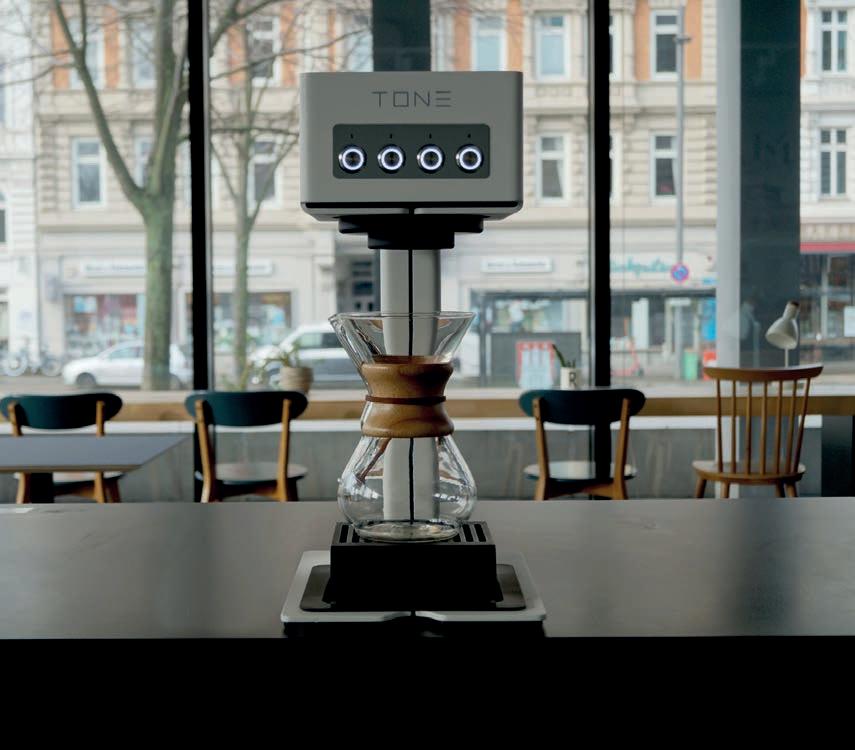
“Nowadays, customers are highly educated on how specialty coffee is supposed to taste. The Touch 03 can produce the perfect pour every time at the touch of a button, meaning the barista is free to chat with the customer, sell more coffee, adjust the grinder or recipe settings. All things that contribute to a more efficient and cost-effective business,” he says.
“Not to mention how easy the Touch 03 is for the barista to use. The barista is empowered to easily adjust brew recipes to profile various coffees by varying temperature, brew time, and a host of other parameters.”
According to Tone, its boilerless equipment also operates sustainably and consumes 10 times less energy than traditional brewing equipment with a boiler.
“During the research and development process we were not limiting ourselves to technology and material that is commonly used within the coffee industry. We also used as few parts as possible to reduce stock of spare parts for our partners” says Krahl.
“Imagine the running time of a boiler. Usually, it would take 20 to 30 minutes for it to reach the desired temperature. The Touch 03 uses ‘energy on demand’ and has four LEDs that consume next to no energy. One Touch 03 currently saves 1.3 tonnes of carbon pollution annually compared to a brewer with a boiler and we have significantly reduced our carbon footprint thanks to this product.”
Krahl adds the Touch 03 is not only energy efficient, but its intelligently designed technology is committed to brewing quality and consistency.
“Designed to address every customer’s need, the Tone Touch 03 offers a whole new level of flexibility and automation in brewing. It’s the most revolutionary brewer in today’s market and has all the operational capability to take the modern brew bar to the next level,” Krahl says. GCR
For more information, visit tone-swiss.com
NOVEMBER/DECEMBER 2022 | GCR 45 AUTOMATION FEATURE
Tone won the 2021 Specialty Coffee Association Best New Product Award in the category – Commercial Coffee Preparation and Serving Equipment.
The digital revolution
FROM PORTAL SOLUTIONS TO ROBOT BARISTAS AND UNMANNED STORES, WMF PROFESSIONAL COFFEE MACHINES HAS SEEN HUGE CHANGES IN THE COFFEE MACHINE INDUSTRY, DRIVEN BY THE DIGITALISATION AND TRANSFORMATION OF BUSINESSES AND CUSTOMER EXPERIENCE.
MF Professional Coffee Machines was among the first manufacturers to actively embrace the possibilities of digitalisation in the coffee industry and translate them into new solutions and digitalised coffee machines.

At an early stage, the shift was primarily characterised by connectivity and equipping the coffee machine with a modem. Today, WMF’s solution concepts make full use of the technological possibilities of digitisation, and enable completely new business models in the international coffee market. The ongoing trend has been increased again in recent years, especially by the global response to the COVID-19 pandemic.
However, when it comes to the main drivers for the digitisation of international coffee businesses, WMF Professional Coffee Machines Vice President Digital, Benjamin Thurner, says the influences are found elsewhere and the pandemic was only an additional accelerator of these developments.
“There are two main drivers that were already pushing digitalisation before the pandemic,” says Thurner. “First, the move towards more efficient operational processes and second, the expectation of end consumers to use new technologies for more convenience and efficiency.”
Thurner says the biggest changes are not coming from a specific market or region. For example, while the first unmanned coffee shop opened in the United States, this concept now plays a bigger role in some European countries, where dozens of unmanned concepts are being rolled out as a new business model.
Rather, Thurner says the decisive changes are coming from the digital ecosystem of specific
segments, like petrol stations and convenience stores, where big chains have to ensure they offer and coffee quality is the same in every store nationwide. They also have to look into self-service and the expansion of the offer 24/7, where robotics and unmanned stores are coming to the fore. These are complemented by mobile payment offers and the integration of customer loyalty programs.
Thurner says this has meant a shift from a pure coffee machine manufacturer to a total solution provider. Which, in addition to the coffee machine, provides a broad portfolio of digital solutions.
CONCEPTS IMPLEMENTED
Thanks to increased automation, WMF is seeing the simplification of individual roles within in the coffee industry, including that of managers, operators and service providers,
Start-up MyAppCafe launched Germany’s first Robot café where the coffee machine communicates over an interface with the robotic arm.
46 GCR | NOVEMBER/DECEMBER 2022
FEATURE
AUTOMATION
because the coffee machine owner can efficiently monitor and control the machine.
To aid their knowledge, the WMF CoffeeConnect Portal is the gateway to the business side of the machine, giving an almost real-time overview of how the machine is performing. Owners can see sales figures, find out what the most popular drinks are, and check the quality of the brew. They can also troubleshoot to keep the machine functioning at the highest quality, and see when it needs to be restocked or serviced.
“You can get reports that state when your peak performance was, and when the machine is not working well,” Thurner says. “There are also remote functions enabling you to be more efficient; you can roll out new recipes, you can restart your machines, and even fix problems without sending somebody out to check on the machine.”
Thurner says that while the WMF CoffeeConnect Portal is convenient, one result of listening to the market is that the needs of some customers go beyond that.
As such, WMF offers other possibilities for interface integration. This includes connecting a customer’s machine through ‘a cloud’ to the business’s own enterprise resource planning (ERP) system. Thanks to this integration expertise, business models such as a pay-percup can be implemented, giving the roaster the possibility to offer additional financing models to their customers.
WMF says it’s also possible to create digital solutions thanks to the increased expectation of end consumers to use new technologies for more convenience and efficiency.
“It started with the demand of so-called robotic baristas. We have already implemented some of these robot concepts, where the coffee machine communicated over an interface with the robotic arm,” Thurner says.
In San Francisco, there are Café X robotic coffee bars. In Germany, there is the first robot café, opened by start-up MyAppCafe, and in South Korea, coffeebanhada opened more than 80 robotics stores. Various WMF solutions also offer the possibility of customer retention programs, cashless payment models, and the remote control of seasonal offers on the machine displays.
“We have recognised that the topic of customer loyalty, coupled with the trend

Thurner says. “Customer loyalty was previously influenced by the guy who said ‘good morning’ every morning, who knew your name, and your consumer behaviour.”
DIGITAL JOURNEY
WMF first started manufacturing coffee machines in 1927 and is now considered one of the market leaders for professional, fully automatic coffee machines. The company has always led the way in terms of innovation, with more than 100 patents in the coffee machine sector to its name. Digitalisation is the new frontier, with an entire WMF team dedicated to digital innovation, led by Thurner.
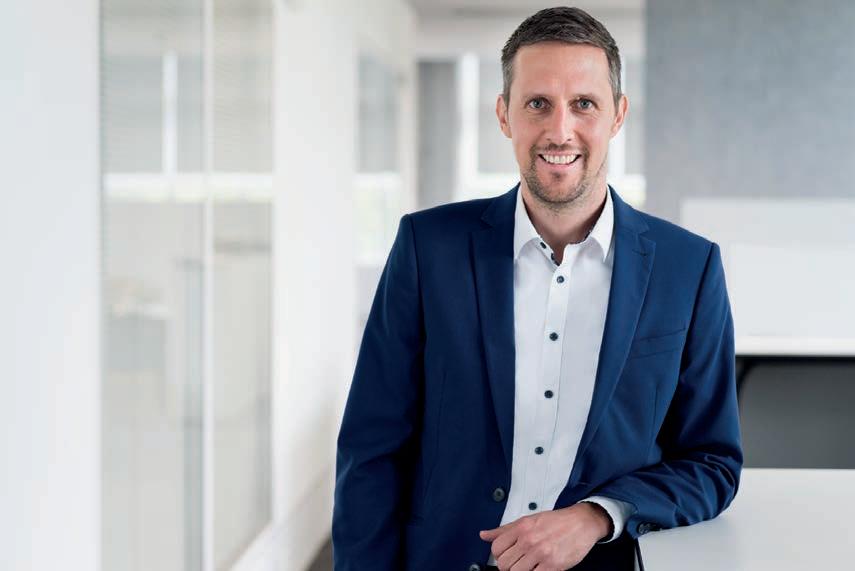
“It started simply enough in the 2000s when we equipped the first machines with modems and had RDA (remote data access) only for a few selected customers, but now it has spread to all customers and to all areas of business,” Thurner says.
Since then, the team has been on a “digital journey” so they can stay on top of market needs and answer questions such as: ‘what does loyalty mean these days’ and ‘what will the self service of the future look like?’
“Today, digital solutions are indispensable when it comes to selling coffee machines, since the majority of our customers are asking for them,” Thurner says.
FUTURE OUTLOOK
“As a market leader with the responsibility to drive the coffee machine business we have one mission: reacting to the market changes and seeing what the future brings,” Thurner says.
“For customers, it might mean going all digital so you walk up to the machine and your phone knows that you want a triple shot macchiato in the morning, and a decaf coffee in the afternoon. You will use your phone to pay and it will automatically redeem or collect any loyalty points owed to you.
“On the business side, it is all about being predictive, getting to the point where it is not the customer calling us but we are showing up to their business and telling them that if they don’t service the machine now it will be broken in two hours.”
WMF realises that full acceptance of digitalisation will be a gradual process. Places in Germany are still selling coin checkers, while markets like China are almost fully cashless. Part of the digital transformation is taking the huge amount of data it has available and interpreting it.
“We have around 130,000 connected machines sending data to our cloud, with this we are the manufacturer with the most connected machines. We need to use this data smartly; Thurner says. “What can we learn from the data, how can we improve our services and how can we improve our offering how can we better consult the customer in their journey.” GCR
For more information, see wmf-coffeemachines.com
NOVEMBER/DECEMBER 2022 | GCR 47 AUTOMATION FEATURE
WMF Professional Coffee Machines Vice President Digital, Benjamin Thurner.
Setting the Tone
hen Holger Welz founded Tone Kaffeemaschinen AG in 2018, he was inspired by the technological innovations and advances being made in the world of espresso equipment, and wanted to create the same revolutionary equipment in the brewing world. He had a vision to invent a boilerless brewer, a feat that had not yet been achieved.
After meeting Markus Widmer through friends in Switzerland, a world-class engineer from the medical and aerospace industry, Welz set Widmer the challenge.
Widmer, now Head of Research and
Development at Tone, worked with the company to help create the world’s first boilerless and energy optimised brewer, and the result, is the Touch 03.
It is Tone’s latest commercial coffee and tea brewing equipment and an automated, urn-free drip brewer with the capability of also brewing 1.5-litre batches.
Tone Sales and Marketing Director Jörg Krahl says the Touch 03 was designed with the idea of elevating the precision and consistency of temperature, flow and pulse control available on filter coffee and tea brewing equipment.

“The Tone Touch 03 is the world’s first boilerless coffee brewer with temperature consistency of up to 99 per cent,” Krahl says.
The Tone Touch 03 uses an electronic heating system to ensure water is at the right temperature as it leaves the machine, eliminating the need for a traditional boiler. Krahl says the technology is a “game changer” for those that are limited on space, seeking consistency and are conscious of their carbon footprint.
“Being boilerless, you can simply place the Touch 03 on the bench, connect it to a water supply and electricity, and it will only take two seconds to heat up the water to 98°C,” he says.
“Traditional brewing devices have boilers with constant standby heating and energy wastage
COFFEE EQUIPMENT MANUFACTURER TONE DISCUSSES HOW IT HAS TAKEN
AND ELEVATED IT TO
44 GCR | NOVEMBER/DECEMBER 2022 AUTOMATION FEATURE
Available colour options include white/grey, black/grey, and all-white and all-black.
SWISS
TANKLESS WATER HEATER TECHNOLOGY
A WHOLE NEW LEVEL WITH THE TONE TOUCH 03.
keep their water within the temperature range. The Touch 03 uses a completely different mechanism so there’s a huge savings on energy over time and you are super flexible to brew for example a green tea at 84 °C, right after your pour over with 95 °C.”
According to Krahl, Tone’s powerful Touch 03 brewer unleashes the full potential of coffee at the touch of a button, and connects with Windows, Apple, and Android software via an intuitive software that allow each user to define consistent brewing parameters as well as editing and sharing recipes.
“The intelligent recipe development system enables 100 per cent customisation of coffee, including the ability to vary product, volume, flow, strength, and temperature,” he says.
The Touch 03 offers controlled agitation, programmable flow rates, and detailed adjustment of pulse patterns at different stages of brewing. These can be further organised into three phases per profile, labelled blooming, turbulence, and development. These settings are expressed through four quick start brew buttons on the interface of the Touch 03. In the ‘freestyle mode’ recipes can be replicated from a local barista to a World Brewers Cup Champion.
Filter batch sizes brewed on the Touch 03 range from 100 millilitre single cup brews up to 1.5 litres. Water temperatures range from ambient room temperature up to a maximum of 99°C, and flow rates vary from as slow as one gram per second up to eight grams per second.
“Inside the housing is a black box [of electronics and pipes] where the magic happens. You can get this box out of the frame and build it in or on top of wherever you want it to,” he says.
The original launch plan for the Touch 03 was to greet the world in 2020 and make the rounds of international coffee and hospitality industry exhibitions and trade shows. Unfortunately, due to COVID-19, it did not get that chance.
“Fortunately for us, our technology is so advanced and innovative, especially when it comes to brewing. We had a lot of partnership requests and the chance to expand our partner network and sales globally through these tough times,” Krahl says.
The Sales and Marketing Director says the company’s dedication to unmatched brewing precision and control was recognised when the Tone Touch 03 won the 2021 Specialty Coffee Association Best New Product Award in the Commercial Coffee Preparation and Serving Equipment category.
“Energy saving products as well as consistency in coffee beverages became highly sought after during 2021, which is one of the reasons why the Touch 03 stood out. I think the judges also saw how the Touch 03 can make a barista’s life much easier and allows them to focus on the most
The global hospitality industry continues to face staff shortages in the wake of the pandemic, meaning skilled baristas remain hard to come by. Krahl says the Touch 03 assists with this challenge as its technologically advanced features increase efficiency in the workplace and aid the barista in matching their skillset.

“Nowadays, customers are highly educated on how specialty coffee is supposed to taste. The Touch 03 can produce the perfect pour every time at the touch of a button, meaning the barista is free to chat with the customer, sell more coffee, adjust the grinder or recipe settings. All things that contribute to a more efficient and cost-effective business,” he says.
“Not to mention how easy the Touch 03 is for the barista to use. The barista is empowered to easily adjust brew recipes to profile various coffees by varying temperature, brew time, and a host of other parameters.”
According to Tone, its boilerless equipment also operates sustainably and consumes 10 times less energy than traditional brewing equipment with a boiler.
“During the research and development process we were not limiting ourselves to technology and material that is commonly used within the coffee industry. We also used as few parts as possible to reduce stock of spare parts for our partners” says Krahl.
“Imagine the running time of a boiler. Usually, it would take 20 to 30 minutes for it to reach the desired temperature. The Touch 03 uses ‘energy on demand’ and has four LEDs that consume next to no energy. One Touch 03 currently saves 1.3 tonnes of carbon pollution annually compared to a brewer with a boiler and we have significantly reduced our carbon footprint thanks to this product.”
Krahl adds the Touch 03 is not only energy efficient, but its intelligently designed technology is committed to brewing quality and consistency.
“Designed to address every customer’s need, the Tone Touch 03 offers a whole new level of flexibility and automation in brewing. It’s the most revolutionary brewer in today’s market and has all the operational capability to take the modern brew bar to the next level,” Krahl says. GCR
For more information, visit tone-swiss.com
NOVEMBER/DECEMBER 2022 | GCR 45 AUTOMATION FEATURE
Tone won the 2021 Specialty Coffee Association Best New Product Award in the category – Commercial Coffee Preparation and Serving Equipment.
internationalcoffeeexpo@primecreative.com.au Melbourne Convention and Exhibition Centre www.internationalcoffeeexpo.com Melbourne International Coffee Expo 17— 19 August 2023 Celebrate 10 years of MICE and everything coffee with us in Melbourne in 2023 Book your stand to take part in the Southern Hemisphere’s largest dedicated coffee trade show. CELEBRATING 10 YEARS OF EVERYTHING COFFEE
Celebrating the world’s best coffee producers

Manchester Coffee Festival
MANCHESTER, UNITED KINGDOM
12 — 13 November
Manchester Coffee Festival is back for another jam-packed weekend of caffeinated capers including a talks program highlighting coffee people from all corners of the industry, tasting rooms featuring coffee from across the world, a music program showcasing Manchester artists, a makers marketplace, competitions, food, drinks, and more.
www.cupnorth.co.uk
Coffee Technicians Guild Summit 2022
FLORENCE, ITALY
29 – 30 November
This year’s event will be the first of its kind since 2019 and will see coffee technicians, machinists, and specialists from across the globe come together for two days of educational sessions with industry experts. This year’s sessions will include hands-on workshops with automatic and super-automatic coffee machines, scale accuracy and calibration, and sustainability best-in-practice.
coffeetechniciansguild.org
Global coffee:
World Of Coffee Dubai 2023
DUBAI, UNITED ARAB EMIRATES
11 —13 January 2023
World of Coffee Dubai is the premier coffee trade show for exhibitors and visitors from the Middle East and beyond, tailored for the UAE’s coffee businesses and those who wish to break into the Middle East’s emerging coffee industry. Show features include lectures, the Roaster Village, Cupping Room, the UAE National Championship, Brew Bar, SCA Community Lounge, and a trade show where buyers and sellers can reconnect.
dubai.worldofcoffee.org
Let’s Talk Coffee
COPAN RUINAS, HONDURAS
20 — 25 February 2023
After two years, Let’s Talk Coffee is heading to Honduras for its 19th edition. This is a unique invitation-only event at the Marina Copán Convention Center will bring together leaders from across the coffee supply chain to build strong, meaningful relationships.
At Let’s Talk Coffee, participants learn from each other, do business, and look ahead to the industry’s challenges and opportunities. It is an opportunity to immerse in an origin location, gain firsthand knowledge of production, and enjoy a cultural experience at the Mayan Ruins, Macaw National Park, or Thermal Hot Springs.
www.letstalkcoffee.org
1 1 2 2 3 4 4 5 6 52 GCR | NOVEMBER/DECEMBER 2022 DIARY Dashboard
events around the globe
World of Coffee
ATHENS, GREECE 22 — 24 June 2023
World of Coffee is the essential event for coffee professionals – drawing a loyal audience from the global specialty coffee community. Organised by the Specialty Coffee Association, World of Coffee has more than tripled in size over the past nine years, reaching audiences of 11,000 visitors and more than 250 exhibitors. The 2023 will features four World Coffee Championships, lecture and workshop series, Green Coffee Buyers and Sellers Program, two tasting rooms, the Roaster Village, and Best New Product Awards & Coffee Design Awards. worldofcoffee.org
London Coffee Festival
LONDON, UNITED KINGDOM
20 — 23 April 2023
The London Coffee Festival celebrates London’s bustling and vibrant coffee scene. In its first year in 2011, more than 7000 visitors and 100 exhibitors took part, and next year, 30,000 creative urbanites and industry professionals are expected to attend. The event, entering its 11th year at the Truman Brewery, will feature more than 250 artisan coffee and gourmet food stalls, tastings and demonstrations from world-class baristas. It will showcase interactive workshops, street food, coffee-based cocktails, live music, DJs, art exhibitions, and more. londoncoffeefestival.com
Specialty Coffee Expo
PORTLAND, OREGON
21 — 23 April 2023
The Specialty Coffee Expo has everything for everyone in the coffee world. Attendees will have the opportunity to connect with the latest in innovation and design from more than 400 exhibiting companies. Participate in cuttingedge research, learn at SCA workshops and lectures, form new business relationships, and connect with the global coffee industry. Coffee enthusiasts of all professional backgrounds can participate in or watch the coffee competitions, mingle with like-minded attendees at receptions and lunches, or learn about the art of cupping, brewing, or roasting in educational programs.
www.coffeeexpo.org
International Coffee & Tea Expo
SINGAPORE, ASIA
25 — 27 May 2023
The International Coffee & Tea Asia series is Southeast Asia’s largest trade and consumer exhibition that caters to the needs of the café, coffee, and tea communities in the region. Visitors to the 10th instalment of the event will find an expansive showcase of raw materials ranging from specialty coffee beans, premium tea leaves, roasting and grinding machines, top-of-the-range barista equipment, bakery supplies, premium ingredients and more.
intlcoffeetea-asia.com
3 5 7 6 7 8
8 NOVEMBER/DECEMBER 2022 | GCR 53
WHAT’S BREWING?
A WRAP UP OF THE LATEST APPOINTMENTS IN THE GLOBAL COFFEE INDUSTRY.
Patricia Capel – non-executive member of JDE Peets Board of Directors
JDE Peets is proposing to appoint Patricia Capel as non-executive member of its Board of Directors. The appointment is subject to the approval by the 2023 Annual General Meeting of Shareholders. Until then, Capel will temporarily fill-in the vacancy on the Board as a stand-in nonexecutive member of the Board until the aforementioned anticipated approval.
Capel, a Brazilian, has been a partner at JAB Holding Company since 2021, following 25 years at AB InBev and Ambev, where she most recently led the commercial operations in Chile, Bolivia and Paraguay. Capel has extensive global consumer operating experience including in the United States, Russia, Latin America, Belgium and Canada. At AB InBev, she held numerous roles including as VP Finance, VP of Global People, and was a member of the ABI Global Diversity and Inclusion Council. Capel has also worked at PWC and Cargill Agricola.
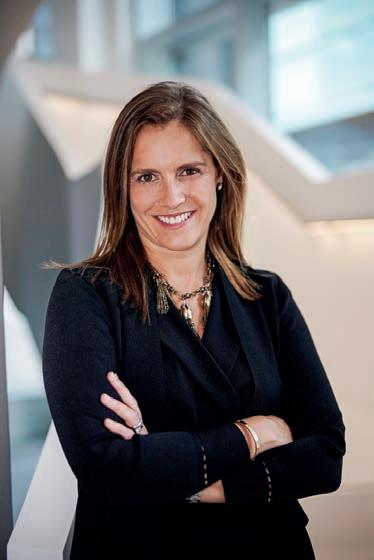
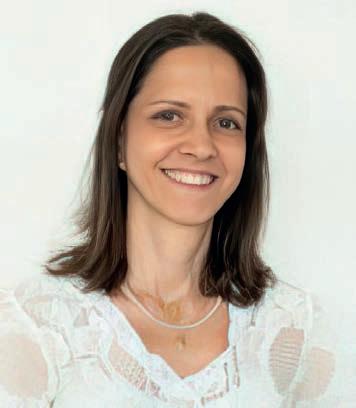 Lisa Gibby – Nestlé S.A Senior Vice President and Head of Global
Lisa Gibby – Nestlé S.A Senior Vice President and Head of Global
Corporate Communications
In Gibby’s role as Senior Vice President and Head of Global Corporate Communications at Nestlé S.A, she leads the company’s communications strategy, including media relations, corporate digital and content, public affairs, and employee engagement.
Gibby previously served as Vice President of Corporate Communications for Nestle’s United States operations. Since joining the company in 2014, she has worked to enhance Nestlé’s corporate social media presence, harnessing digital to enrich the company’s storytelling capabilities and drive reputation.
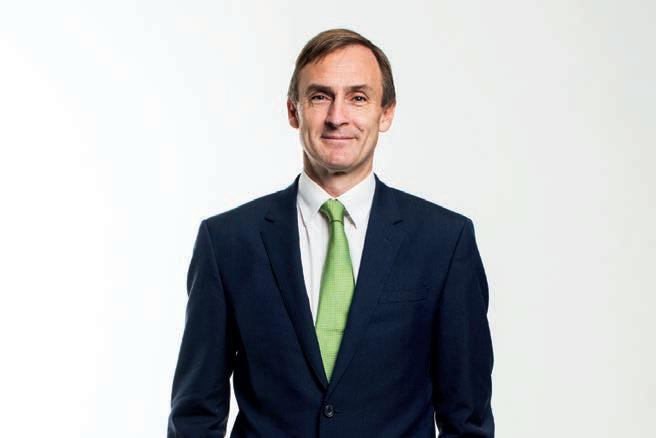
Before joining Nestlé, Gibby was Director of Global Communications of The One Campaign, an anti-poverty advocacy organisation co-founded by Bono. At One she led global strategic communications and supported ONE’s advocacy campaigns on global health, agriculture, energy access and transparency. She managed a communications team located in the United States, United Kingdom, France, Germany, Belgium, and South Africa.
James Woodrow – Finlays Group Managing Director
Finlays, part of Swire Group and a leading global supplier of tea, coffee and botanical solutions, has appointed James Woodrow as its new Group Managing Director. Woodrow brings a wealth of experience to the role and joins from Swire Shipping where he was Managing Director for the past seven years. He has been with Swire since 1990 and has held executive roles at various Swire businesses including Cargo Director at the airline Cathay Pacific. “Finlays has an illustrious heritage stretching back nearly 300 years and is a trusted and admired industry leader. Today, it is ideally placed to serve the evolving needs of the global beverage market by helping customers address critical long-term consumer trends, whether that’s health and wellbeing, premiumisation or sustainability,” says Woodrow.
Through its integrated supply chains, Finlays strives to operate with sustainability at the heart of all it does, creating value for stakeholders at every stage from crop to cup.
WHAT’S BREWING? Industry appointments
AROUND THE GLOBE PEOPLE ON THE MOVE
COFFEE
54 GCR | NOVEMBER/DECEMBER 2022
Ed Evans – Pret A Manger Chief People Officer
Pret A Manger has announced Ed Evans as its new Chief People Officer, with the Yum Brands HR Director commencing the role in January 2023. Currently serving as HR director for the restaurant chain Taco Bell, Evans also worked for KFC as HR Director for UK and Ireland operations between 2017-2019 and US operations between 2019-2021. Evans will replace current Chief People Officer Andrea Wareham, who has worked in various HR roles for Pret A Manger since 2000, including as Head of Training & Development and Global HR Director. She became Chief People Officer in August 2019.
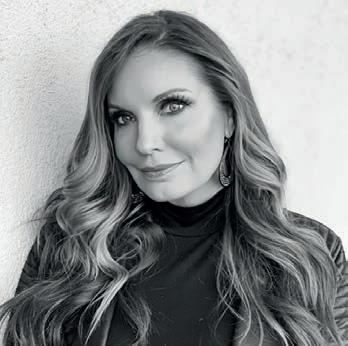
Pano Christou, CEO of Pret A Manger, says Evans will continue Wareham’s efforts in “making Pret a brilliant place to work, both in the UK and as we expand into new markets”.
Amy Hom – Bluestone Lane’s Chief People Officer and Supply Chain Expert
Amy Hom has joined Bluestone Lane as Chief People Officer. Amy joins Bluestone Lane from Reef Technologies, where she led strategic operations initiatives focused on transforming static neighbourhood spaces into community hubs. With more than 25 years of restaurant industry experience, Hom brings deep knowledge of food safety, training, operations and culinary leadership to her new role at Bluestone Lane. She will ensure that cafe employees embody the brand’s ethos to create a warm, friendly, welcoming environment for its locals. “Bluestone Lane has been so successful because it prioritises hiring friendly, dedicated, helpful team members who ensure its locals feel welcome and valued and receive the best experience possible every time,” says Hom.
Jack Brennan – Bluestone Lane Vice President of Supply Chain and Strategic Projects


Jack Brennan joins Bluestone Lane as Vice President of Supply Chain and Strategic Projects. He brings insights and relevant experience from his career at Australian hospitality group Retail Zoo where Jack led the Cibo Express Cafe brand, licensing and CPG product business. His role includes optimising Bluestone Lane’s supply chain, as well as overseeing strategic projects and licensing. “After watching Bluestone Lane’s exciting trajectory from afar, I am so excited to support the scaling of this forward-thinking company,” says Brennan. “I am honoured to join in Bluestone Lane’s vision to promote our strong coffee and cafe culture in the US.”
Laxman Narasimhan - Starbucks Chief Executive Officer

Laxman Narasimhan joined Starbucks as incoming CEO on 1 October after relocating from London to Seattle and will work closely with Howard Schultz, Interim CEO, before assuming the CEO role and joining the Board on April 1, 2023. Narasimhan brings nearly 30 years of experience leading and advising global consumer-facing brands. Known for his operational expertise, he has a proven track record in developing purpose-led brands. Most recently, he served as CEO of Reckitt, a FTSE-12 listed multinational consumer health, hygiene, and nutrition company.
“I look forward to working closely with Howard, the Board, and the entire leadership team – and to listening and learning from Starbucks partners – as we collectively build on this work to lead the company into its next chapter of growth and impact,” Narasimhan says.
Do you have career news to share?
Email Sarah Baker at sarah.baker@primecreative.com.au
NOVEMBER/DECEMBER 2022 | GCR 55
Cama Group IF318
Cama Group has taken one of its most popular machines and modernised it to allow for a greater variety of secondary packaging options in response to changing customer demands.
The Cama IF318 is an all-in-one robotised monoblock top loading unit. The original IF318 featured box-forming machines that construct a box from a flat carton. The central body of the machine receives the capsules, often in two lanes, one facedown and the other face-up. A robotic arm picks up the capsules to arrange them in the necessary configuration. There is also the ‘flower’ configuration, where four capsules are placed face down and one is placed face up.
The new Cama IF318 removes the need for these packaging designs to be created on different machines.
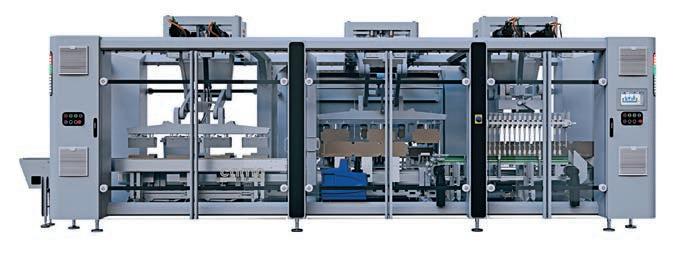
For more information, visit www.camagroup.com
Franke A600
Professional fully automatic coffee machines such as the A600 is the ideal solution from Franke Coffee Systems for served and self-service operations. The A600 can create ideal conditions for coffee moments at the breakfast buffet, in the restaurant or in the café. Equipped with state-of-the-art yet easy-to-use technologies, the Franke A600 offers consistently high in-cup quality and gives customers full control over the preparation of the finest coffee specialties, simply at the touch of a button. Choose the A600 to bring unique coffee moments to large groups of guests with a wide choice of premium beverages. Find out more about Franke’s modular machine portfolio for every demand in terms of performance, beverage variety, and dimension on Franke’s website.
For more information, visit coffee.franke.com
De’Longhi La Specialista Maestro
Discover a world of refreshing cold coffee beverages with the new La Specialista Maestro with innovative Cold Extraction Technology. The innovative Cold Extraction Technology bypasses heat and optimises extraction pressure to deliver balanced cold coffee recipes, such as cold brew, in a fraction of the traditional brewing time.
Experience De’Longhi’s unique Espresso Cool recipe for a fresh new take on the traditional Italian espresso. With a creamy textured mouthfeel and crema, but a lighter and smoother taste, it is the perfect coffee recipe for summer, best served over ice or as a base for cocktails and other recipes.
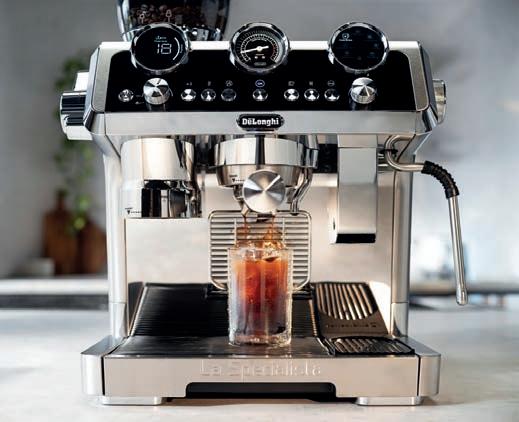
La Specialista Maestro provides the tools to craft the authentic barista experience at home, with precise control over grinding, dose, and temperature.
For more information, please visit www.delonghi.com
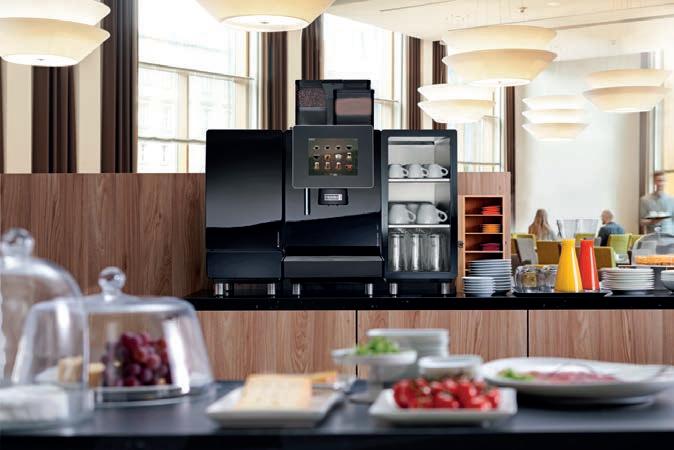
PRODUCTS Marketplace
56 GCR | NOVEMBER/DECEMBER 2022
Schaerer Prisma
Networking is playing an increasingly important role when making purchasing decisions about professional coffee machines. Swiss coffee machine manufacturer Schaerer has added a customisable application programming interface (AP) to the digital toolbox of the new Schaerer Prisma. This makes it possible to easily connect Schaerer coffee machines to customer-specific apps, software solutions, and systems.
The Schaerer Prisma opens up almost unlimited possibilities for customers to use digital functions to improve their coffee operations. This includes connecting to apps for ordering and payment as well as creating loyalty programs and operating coffee machines in unmanned convenience



In addition to its ability to adapt to individual IT infrastructures and customer requirements, the Schaerer Prisma functions as a local connection that enables significantly faster data transfer than cloud-based APIs, since the time for sending data between cloud and coffee machine is omitted.
For more information, visit
According to Tone, its Touch 03 is the first revolutionary step to redefining the future of brewing. Tone’s tankless system features world-class technology that allows users to control all parameters of the extraction, such as time, temperature, water flow, pulse, and delay. This innovative device allows recipe programming and once set-up, controls all three phases of the extraction process.
To specialty beverage equipment users seeking to be at the forefront of the industry, Tone provides a portfolio of intelligently-designed equipment dedicated to brewing precision and control. It also consuming 10 times less energy than some competitive offerings.
Touch 03 was selected as 2021 Best New Product in the Commercial Coffee Preparation and Serving Equipment category.
For more information, visit tone-swiss.com
QuickPik is a payment and loyalty platform developed by Vendon. It is primarily used in closed spaces to boost employee engagement via discounts and recurring free product allowances at the coffee machines on company premises. Plus, end users can top up their QuickPik wallets with cash or link a payment card to shop directly via the app.
For the operator, QuickPik can generate an additional revenue stream and help upsell their services. It is an opportunity to score better machine placements thanks to the extension of product offerings for the customer. Customers can use the QuickPik solution to reward their end users with discounts or, on the other hand, implement consumption control both on an individual user level and group level.
For more information, visit vendon.net/en/quickpik
NOVEMBER/DECEMBER 2022 | GCR 57
Tone Touch 03
Even bigger impact
LÖFBERGS GROUP HAS ALWAYS VALUED ITS SUSTAINABLE ETHOS, AND THROUGH A NEW COLLABORATIVE PARTNERSHIP, THE COMPANY IS SET TO EXPAND THE HORIZONS OF WHAT’S POSSIBLE FOR THE LONGEVITY OF THE GLOBAL COFFEE INDUSTRY.
Swedish roaster Löfbergs Group has joined the European Coffee Federation (ECF) to help improve sustainability at the farm level and across its European operations.
The Karlstad-based company joins other global roasters already part of the ECF including illycaffè, Jacobs Douwe Egberts, Lavazza, Nestlé, Starbucks EMEA, and Tchibo.
“Through ECF, we have the opportunity for direct knowledge acquisition, exchange, and the ability to influence at European level. That makes ECF an important forum for us in our ambition to be a leading player in terms of fair, sustainable production and trade,” Löfbergs CEO Anders Fredriksson tells Global Coffee Report
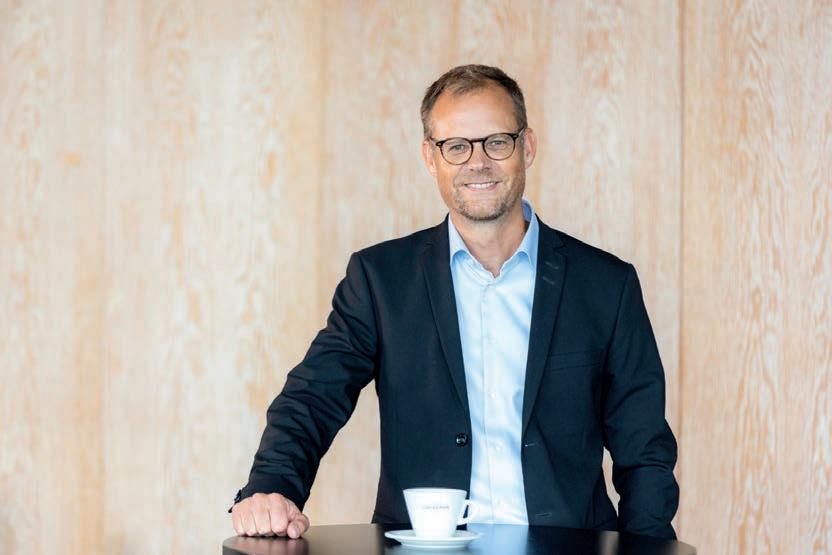
Fredriksson says joining the ECF has been on the company’s agenda for some time.
“We believe in the power of doing things together and that the road ahead is all about cooperation and developing solutions together with others. ECF will be a complement to our other engagements in producing countries, such as International Coffee Partners and coffee&climate, as well as in our local markets,” he says.
Fredriksson says ECF is facilitating the development of an environment in which the industry can meet the needs of consumers and society, while competing effectively to ensure the resilience and long-term sustainability of the coffee supply chain. “This goes well in line with our values and ambitions, and belief in a world where both people and coffee can grow,” Fredriksson says.
The ECF is focused on key areas of development: food safety, sustainability and international trade, from farmers to consumers. Fredriksson says Löfbergs Group has a lot to learn but is confident
that being part of ECF will strengthen the company and its ability to contribute to a positive and sustainable industry.
Since 1906, Löfbergs Group has done what it believes is right for coffee, and people. A sustainable philosophy is part of the company’s DNA and something its owners, now in its fourth generation, have always had top of mind.
“The perspective has always been to build for coming generations. This means we have a clear focus to meet global challenges in all dimensions of sustainability – ecological responsibility, social equity and economic performance – in producing countries as well as on our home field,” Fredriksson says.
Löfbergs Group ensures human rights are respected in its commercial conditions and includes risk assessment in all parts of the business. Third party certifications are also an important tool, as is close relationships and contacts it holds with farmers and cooperatives.
“Our purchasing department has gotten a more centralised role at the company over the last years, which leads to a better control of all criteria being met and the evaluations are equivalent,” Fredriksson says. “Before starting up a new cooperation, we have a thorough assessment process covering all aspects of sustainability, security, and quality as well as risks connected to origin and type of product.”
After passing all requirements, suppliers sign and commit to Löfbergs Group’s Supplier Code of Conduct, which they are periodically evaluated on.
Beyond long-term sustainability practices, Fredriksson says the risks in origin countries have increased in the last years due to climate changes and COVID, amongst others, with less focus on working conditions, pesticides, and quality.
As such, he says it’s important to focus on how to best contribute to reducing risk factors. One way Löfbergs has done so, is by connecting to Era of We, one of the world’s first digital end-to-end platforms, which aims to shift the value of coffee brands back to coffee farmers and consumers.
The other solution is through the support of organisations such as ECA, which exist to make a collaborative impact on a greater scale.
“I think it´s crucial we have forums where different organisations work together to influence each other and conditions for fair, sustainable production and trade,” Fredriksson says. “When working together we increase possibilities to change for the better.”
GCR
Löfbergs CEO Anders
58 GCR | NOVEMBER/DECEMBER 2022
Fredriksson says it’s important the company is a leading player in sustainable production and trade.
LAST WORD Löfbergs Group
Tevo® Mini Tablet
One tablet in the group head removes coffee oils, grounds and stains, improving the taste and aroma of espresso after the machine is cleaned.
Tevo® Mini Tablets also leave no trace of odour.
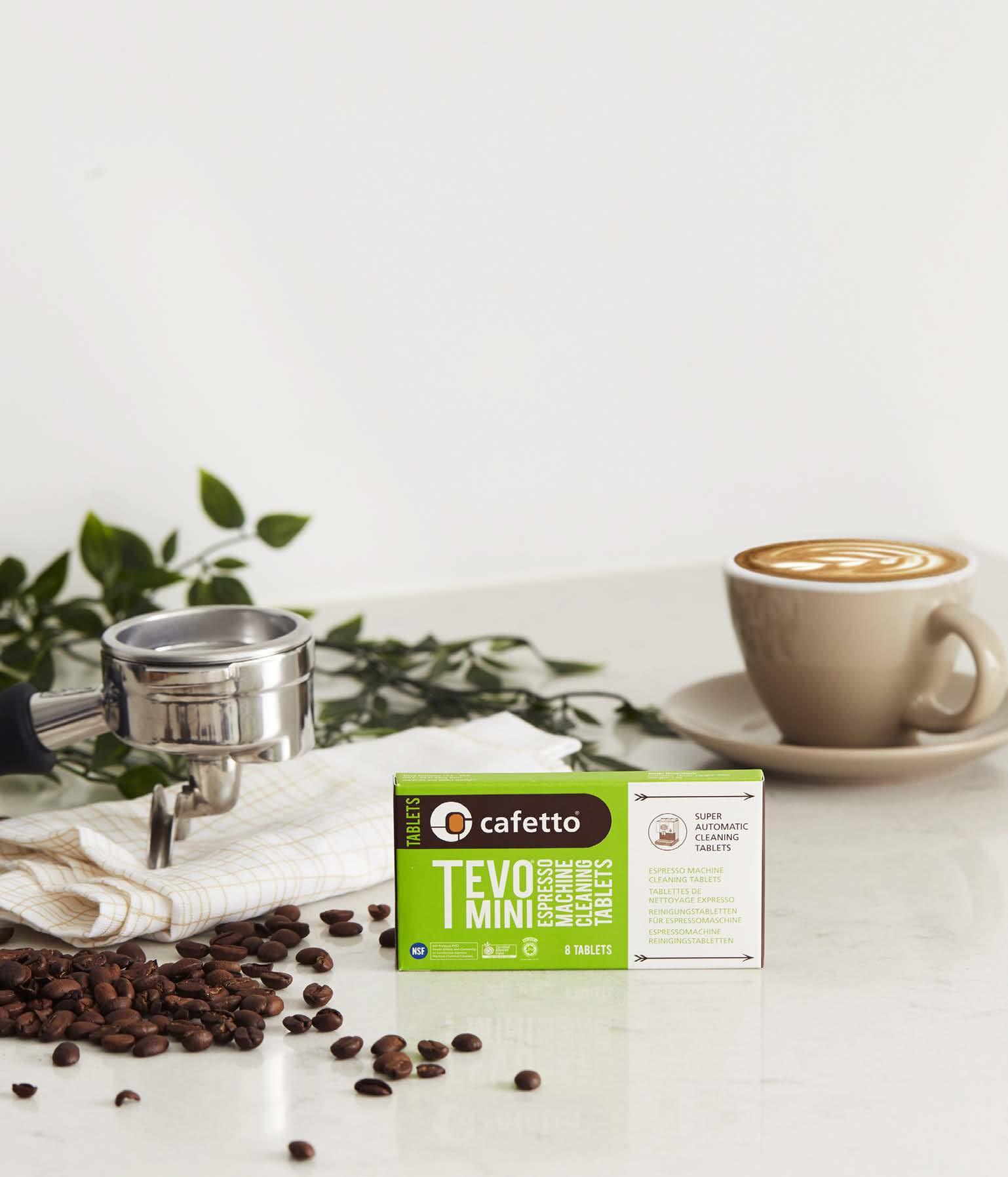
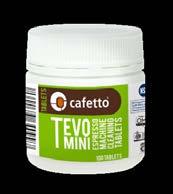
Tevo® Mini Tablets are registered by Australian Certified Organic (ACO) as an allowed input in organic systems. Tevo® Mini Tablets are free from phosphate and Genetically Modified Organisms.
Safe for all machine parts, Tevo® Mini is listed with NSF Protocol P152. It has been tested, evaluated and passed the most stringent toxicology and corrosivity standards.
The ingredients and formulation of the products that are NSF certified are safe, leave no harmful residues and do not cause corrosion within the coffee machine.
Visit cafetto.com to learn more.
Tevo® Mini Tablets can be used to clean domestic style automatic machines and also placed in the group handle for small traditional espresso machines.
100 TABLET OPTION AVAILABLE enquiry@cafetto.com | www.cafetto.com
Buencafé is one of the world’s leading premium soluble co ee suppliers, we are dedicated to providing high-quality, 100% Colombian freeze-dried co ee and co ee extract for private label brands and ingredients for the food industry.


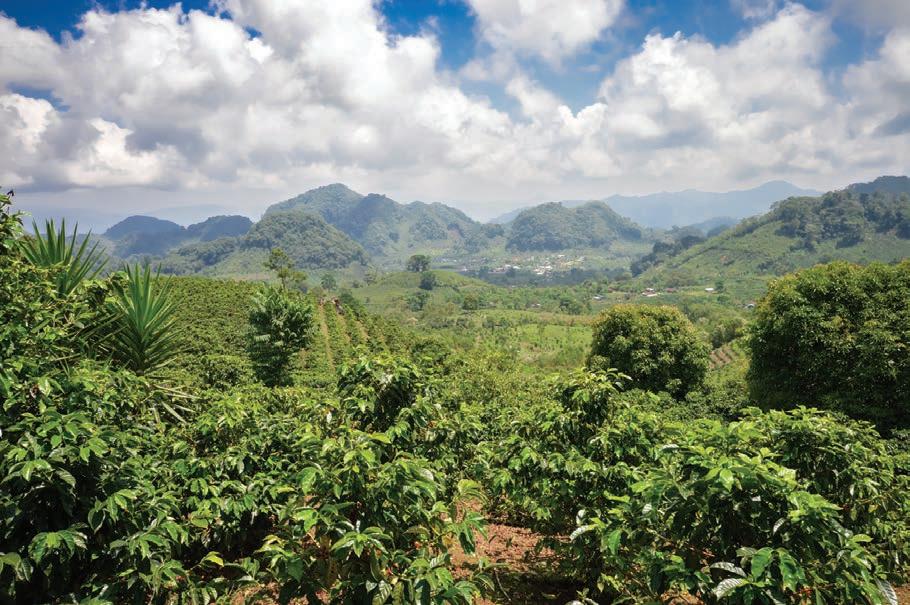
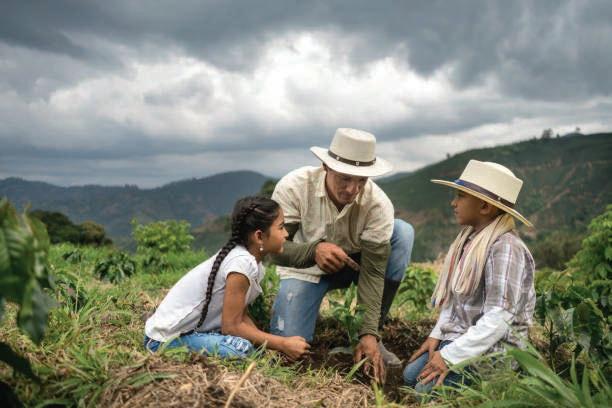
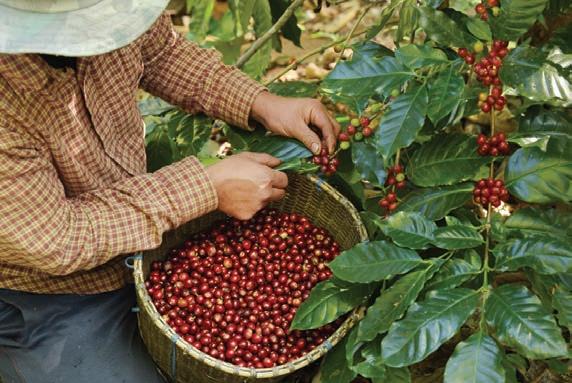








 Our engineers have designed an integrated powder unit that can hold up to 2kg.
Our engineers have designed an integrated powder unit that can hold up to 2kg.















 By Sarah Baker
By Sarah Baker




 Nescafé will facilitate pruning of existing coffee trees, which will help rejuvenate coffee plots.
Nescafé will facilitate pruning of existing coffee trees, which will help rejuvenate coffee plots.
















































 Lisa Gibby – Nestlé S.A Senior Vice President and Head of Global
Lisa Gibby – Nestlé S.A Senior Vice President and Head of Global



















